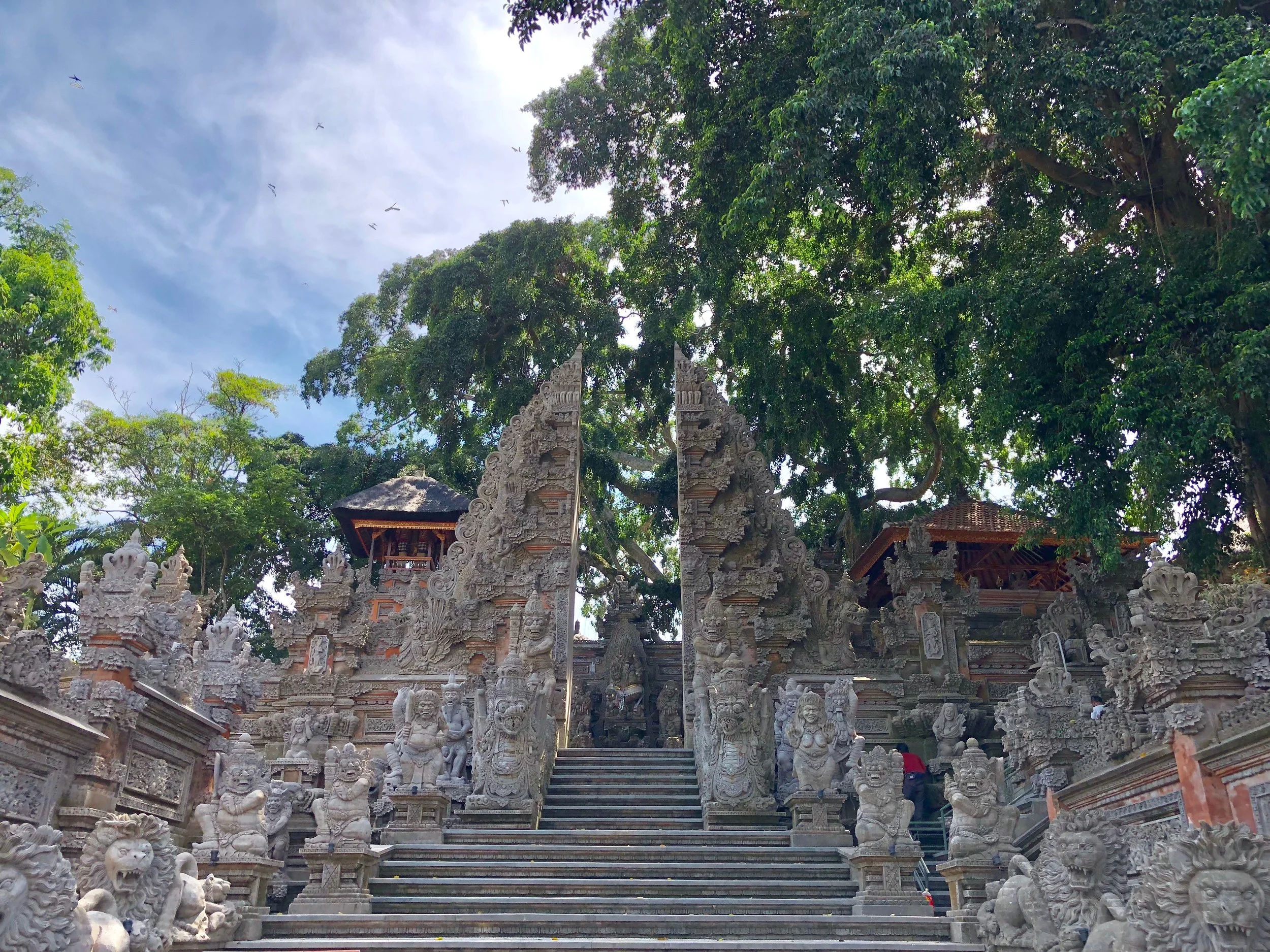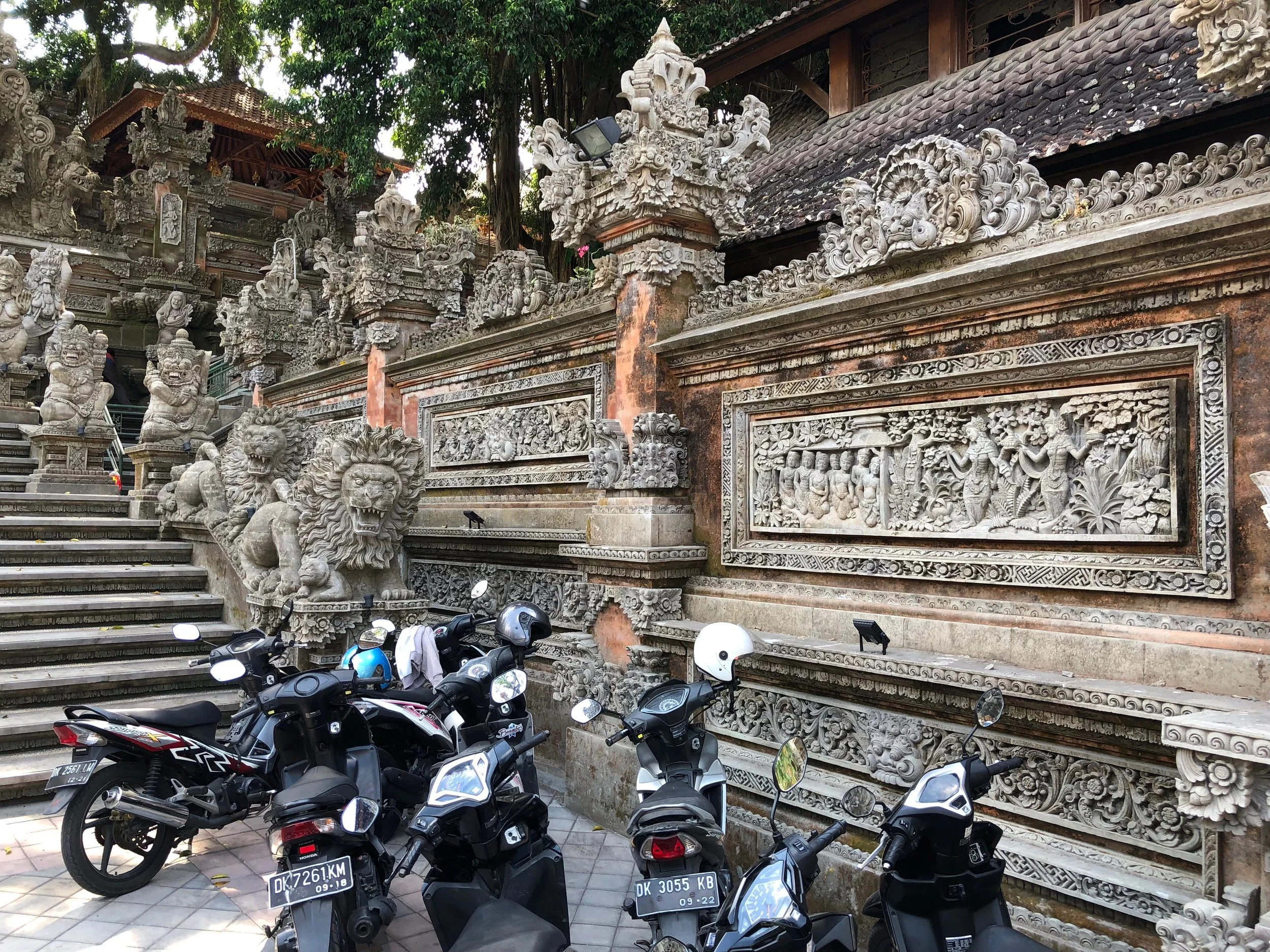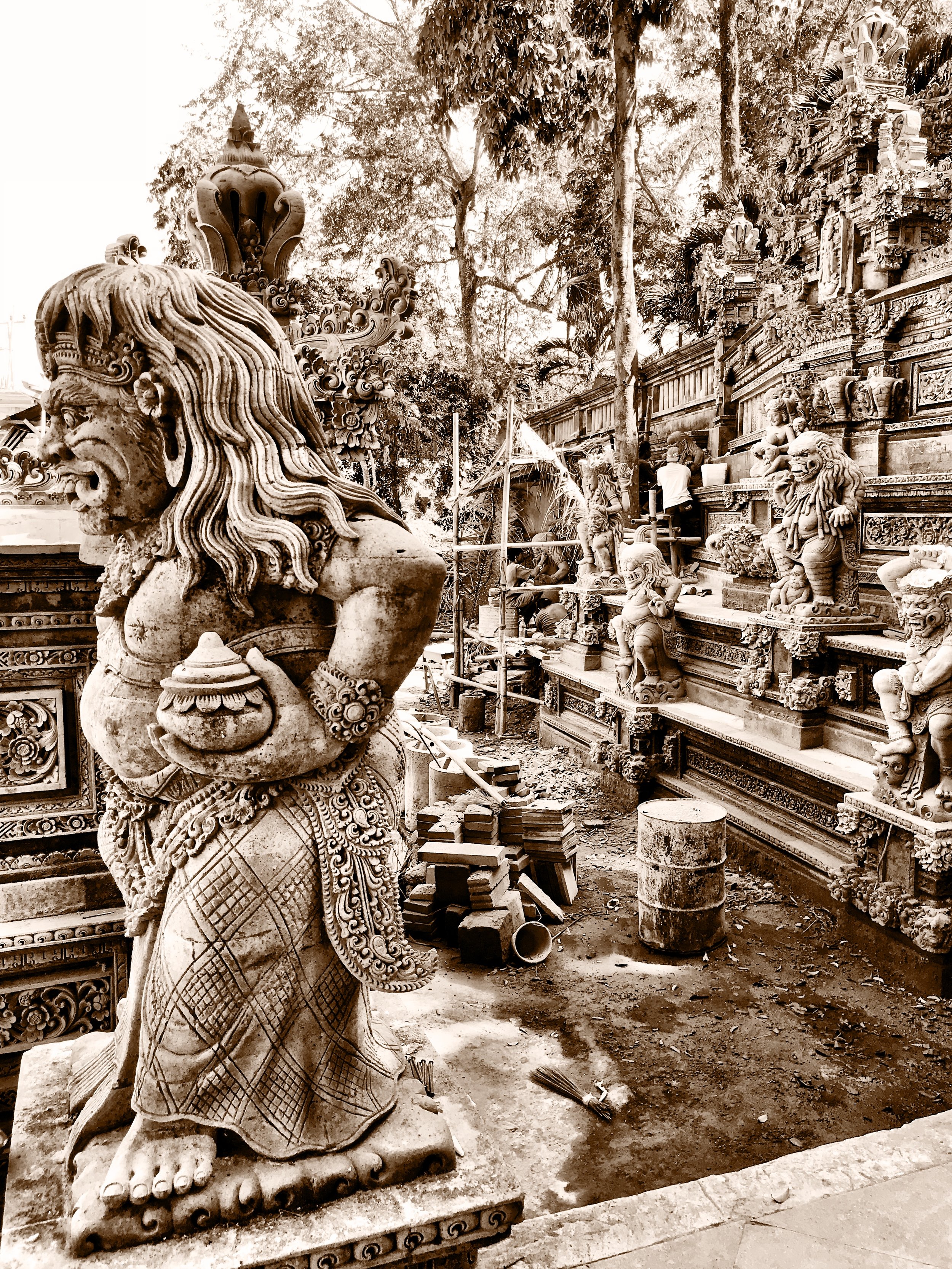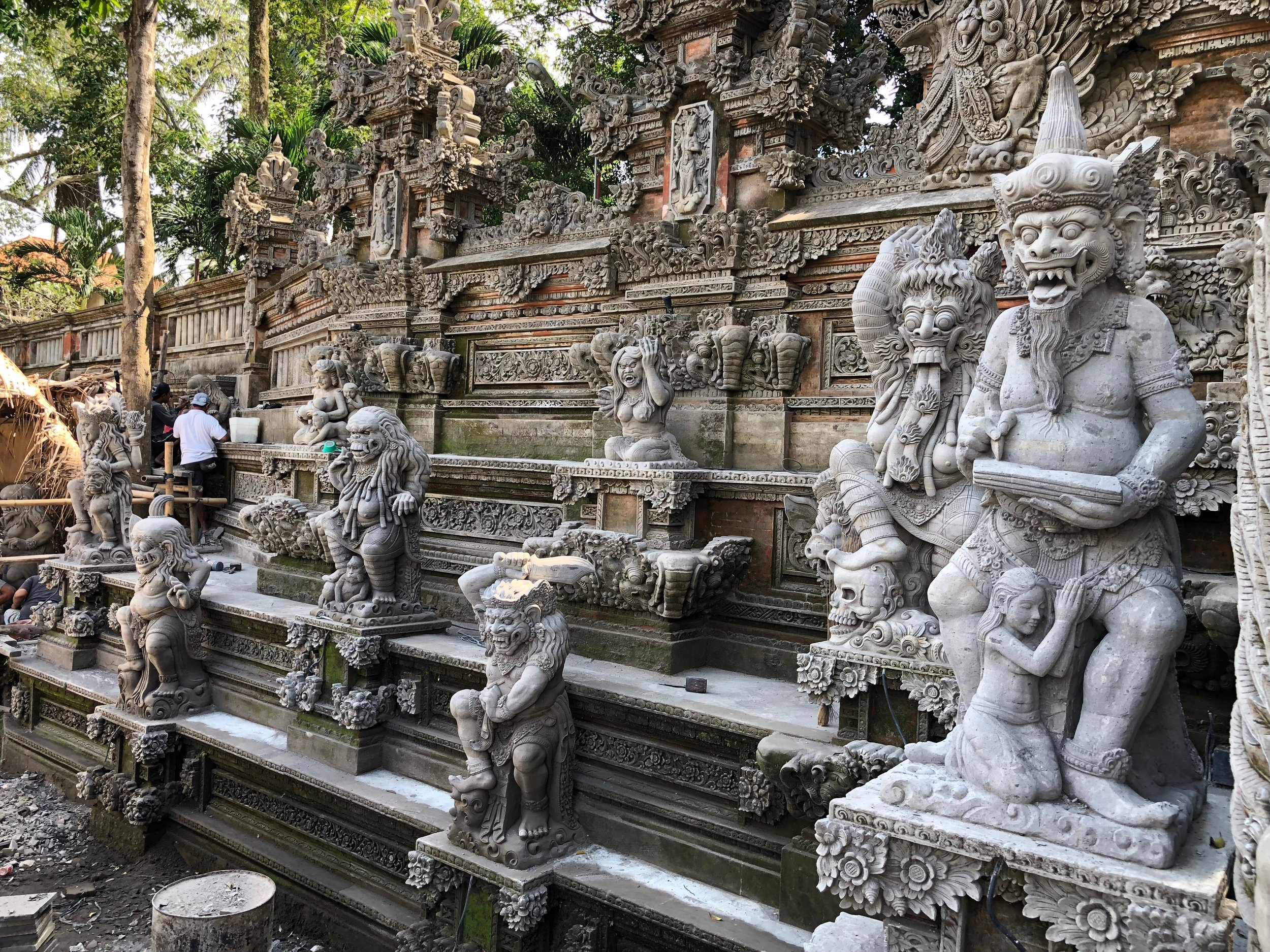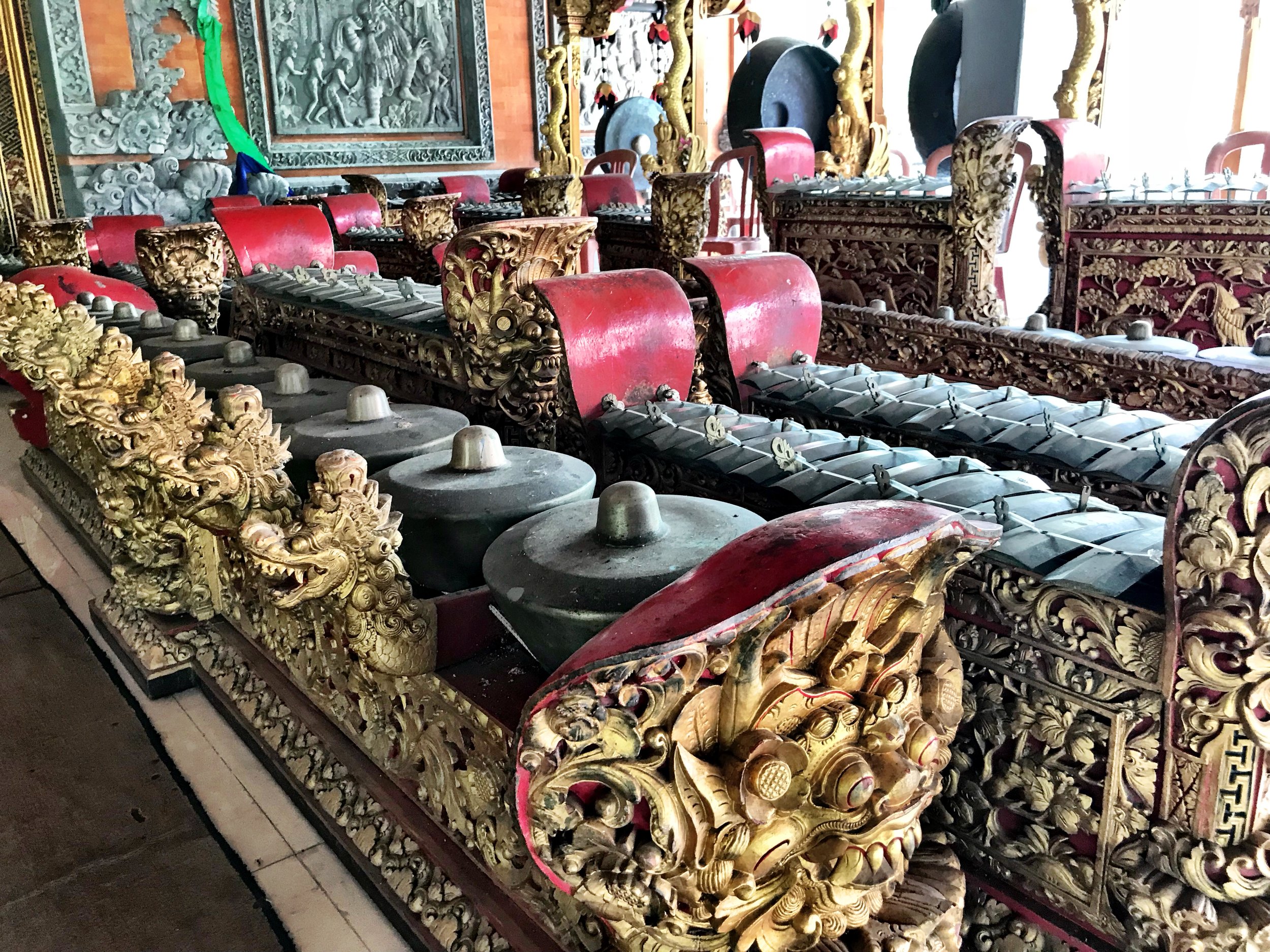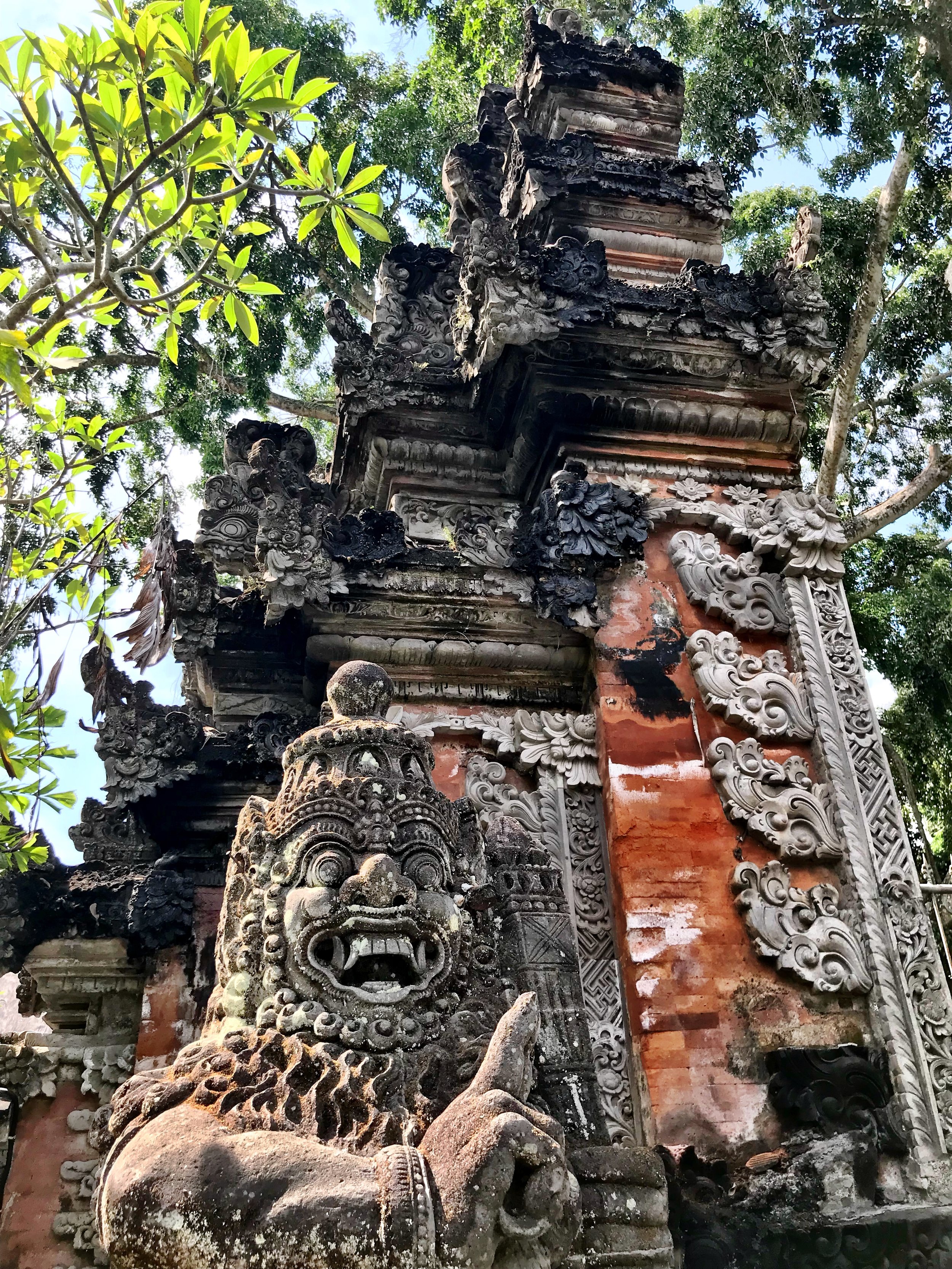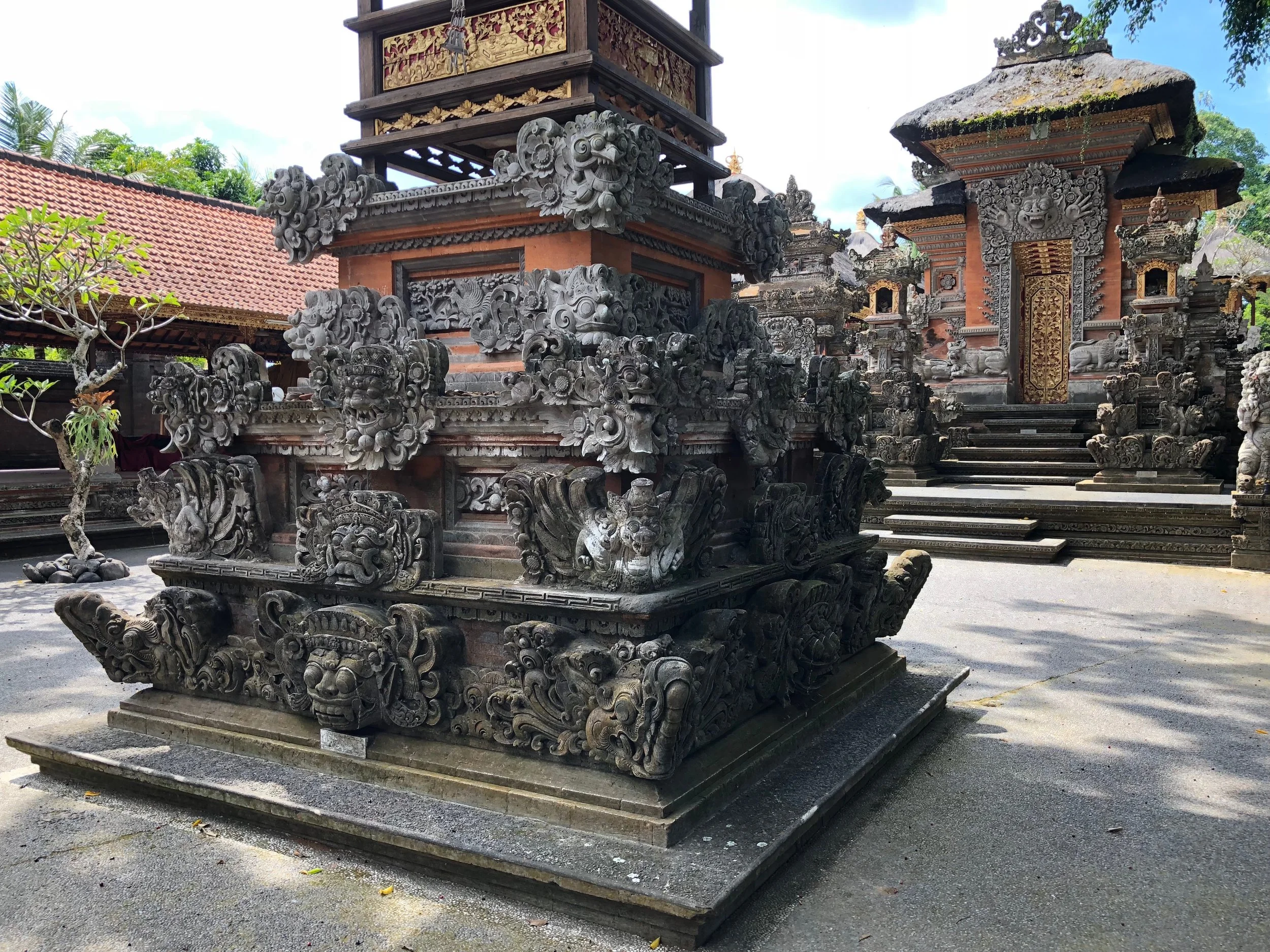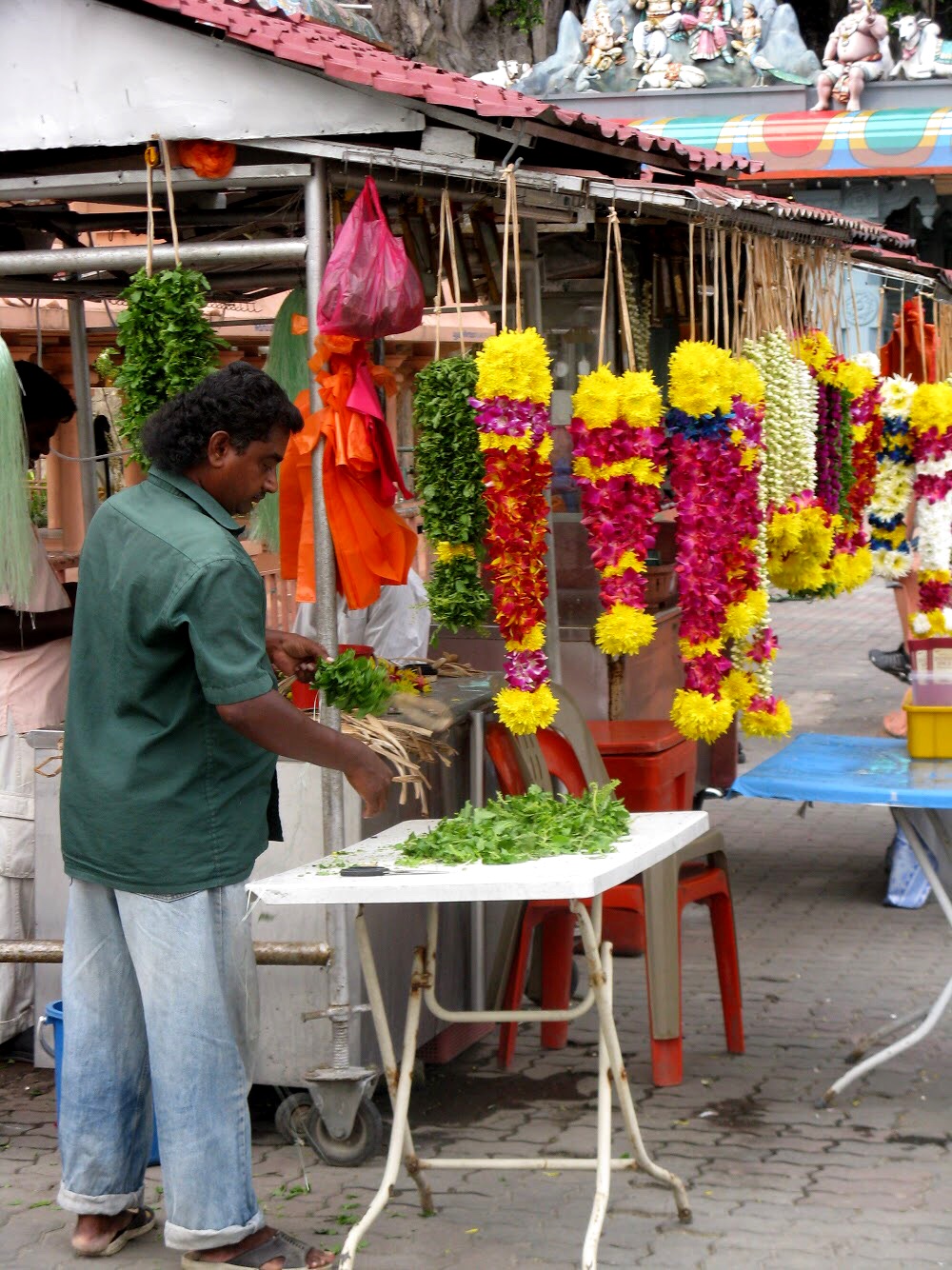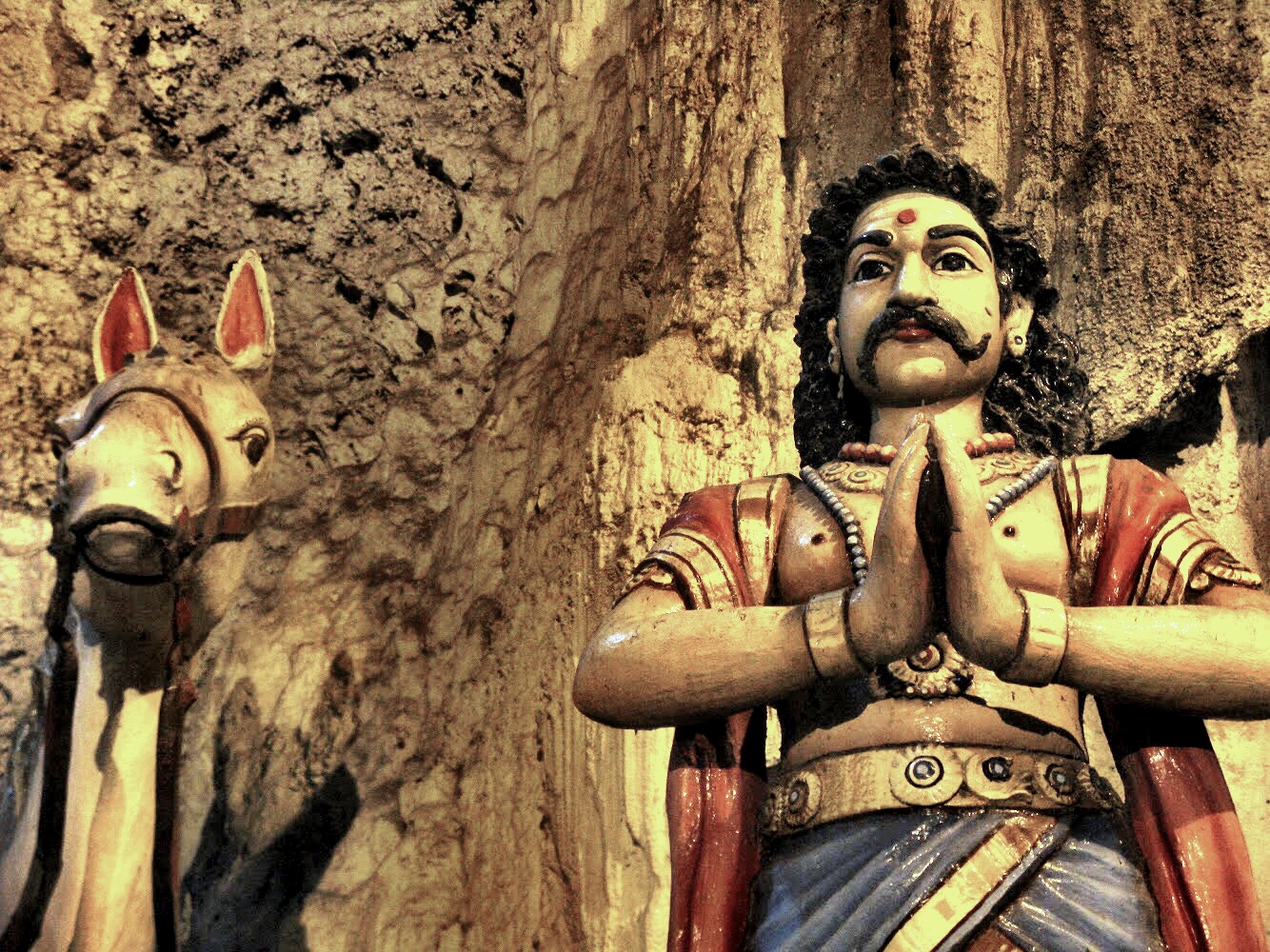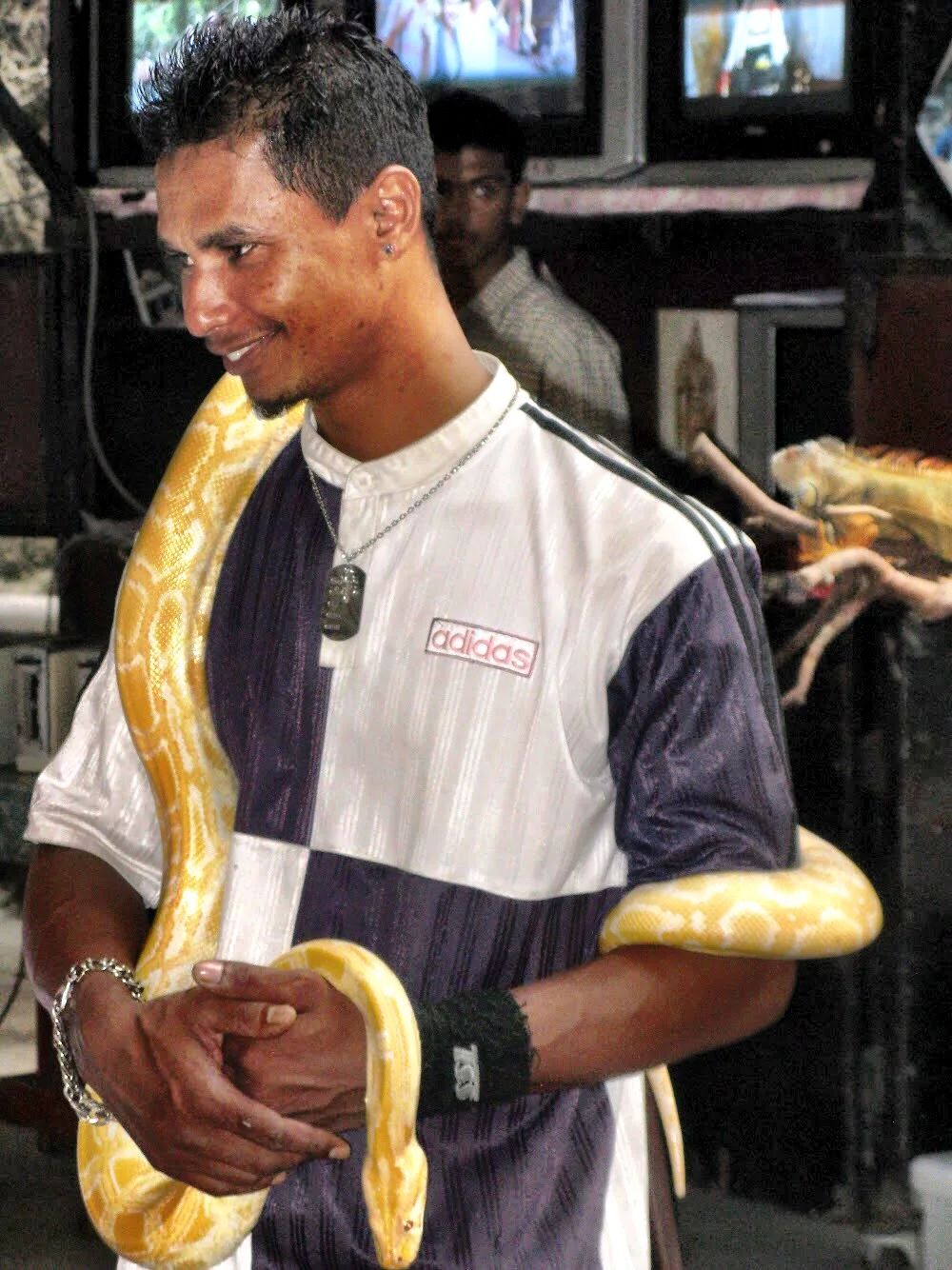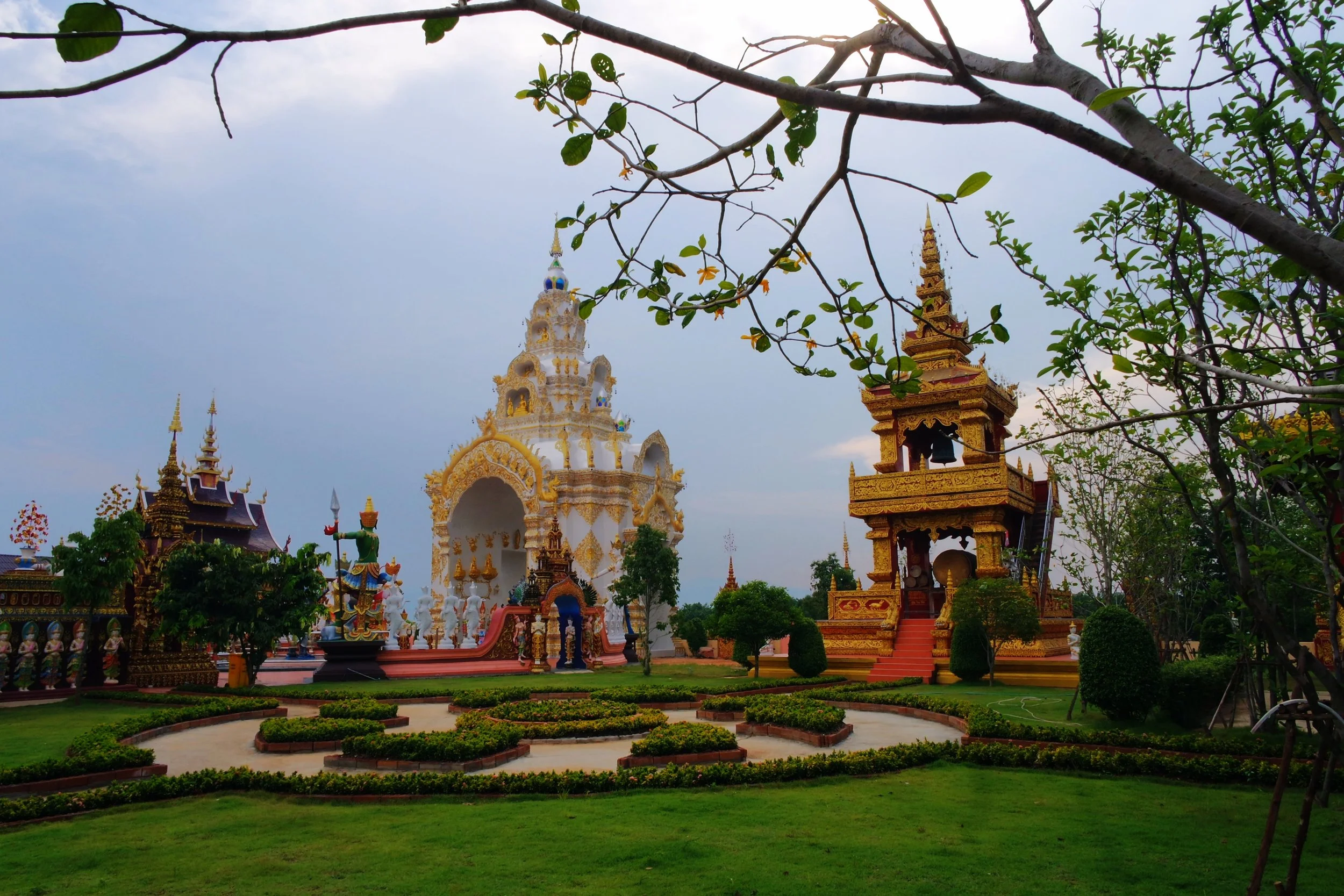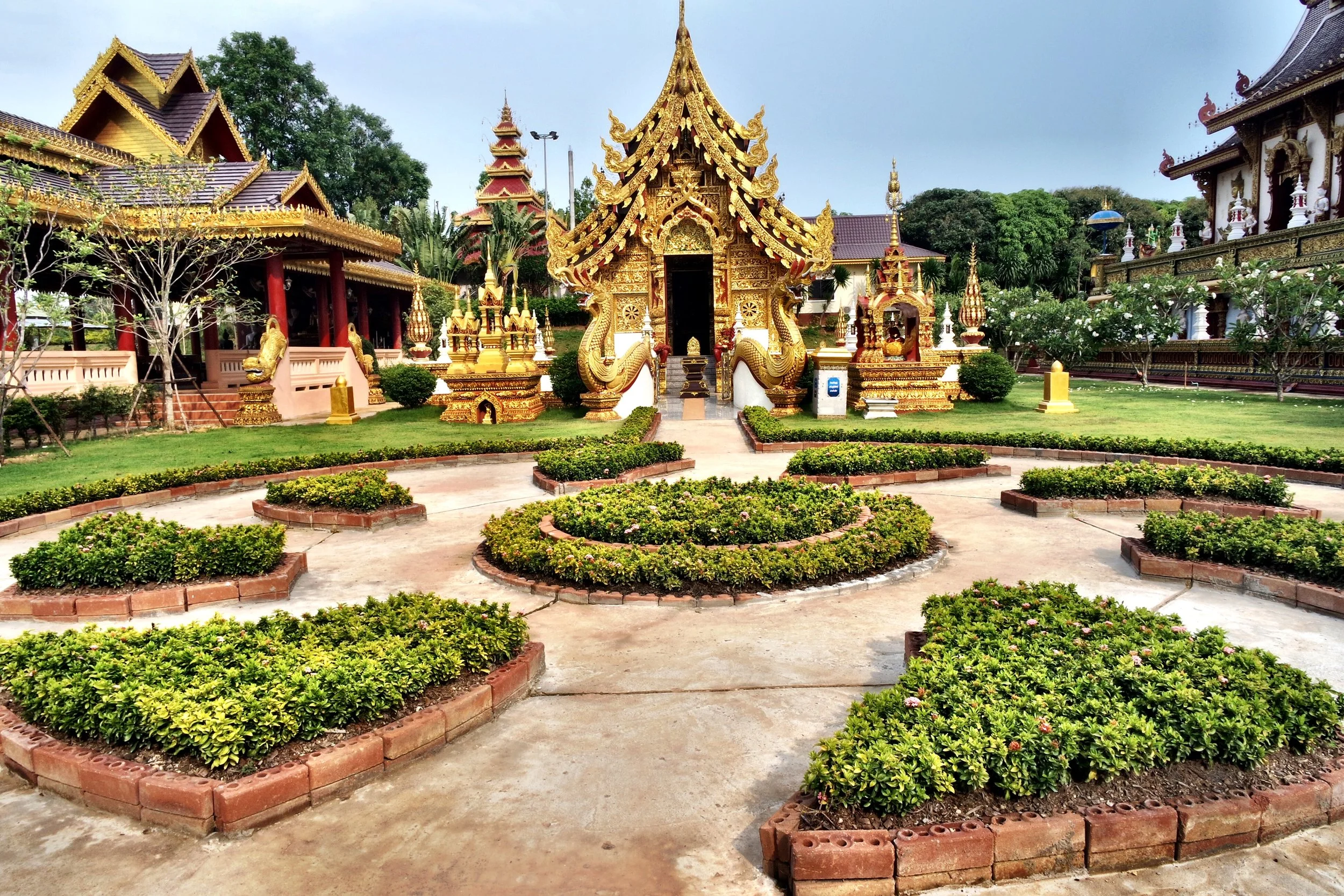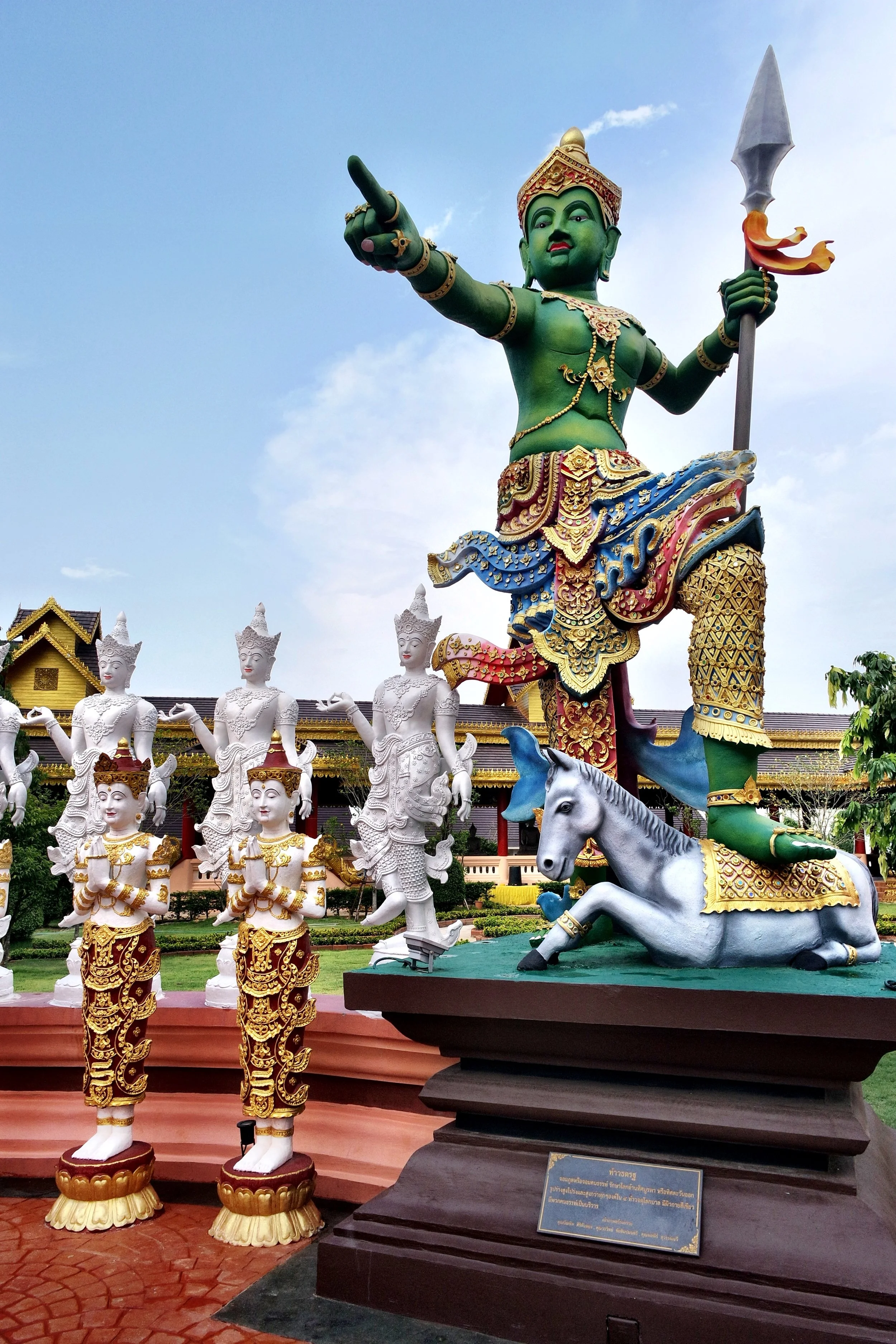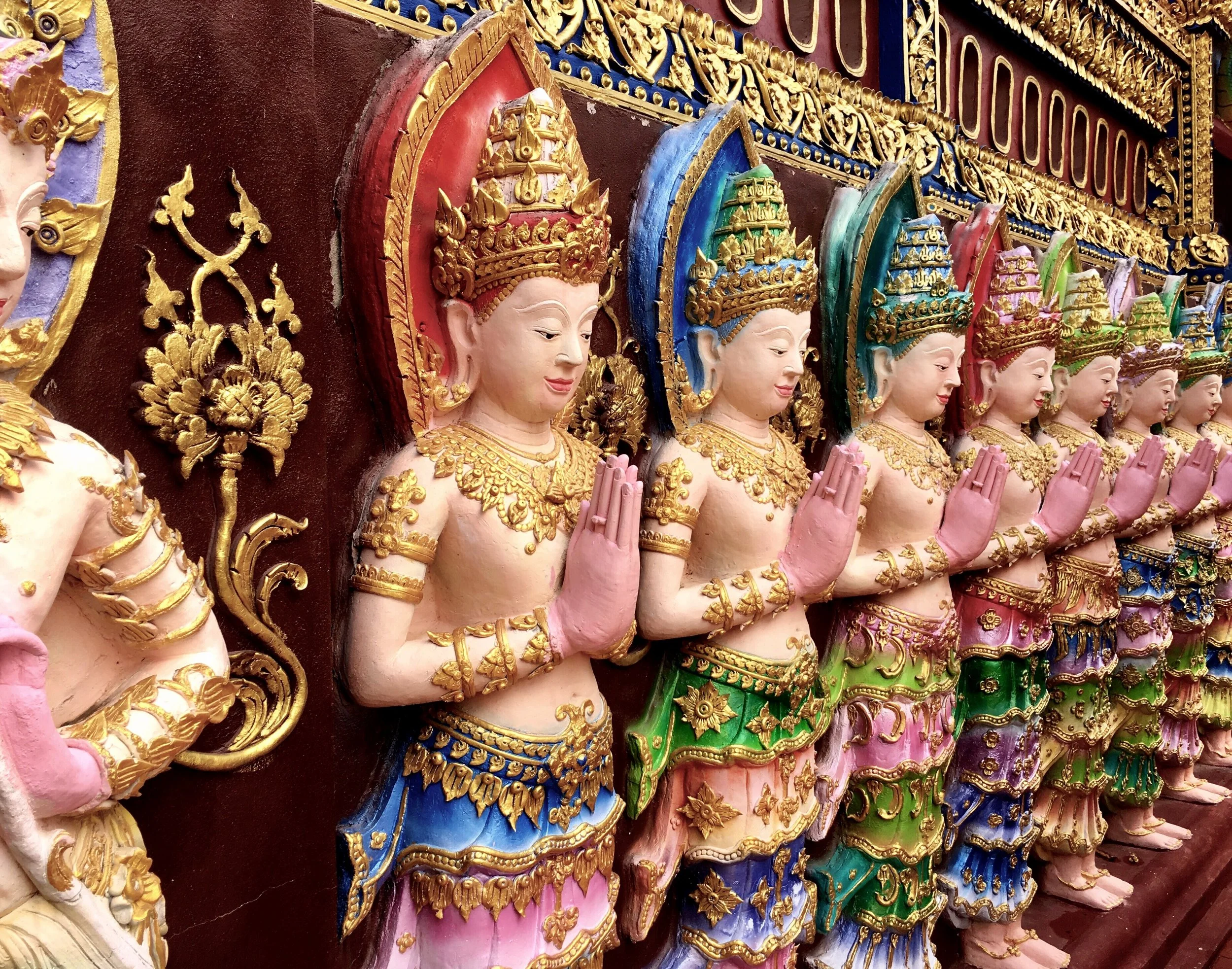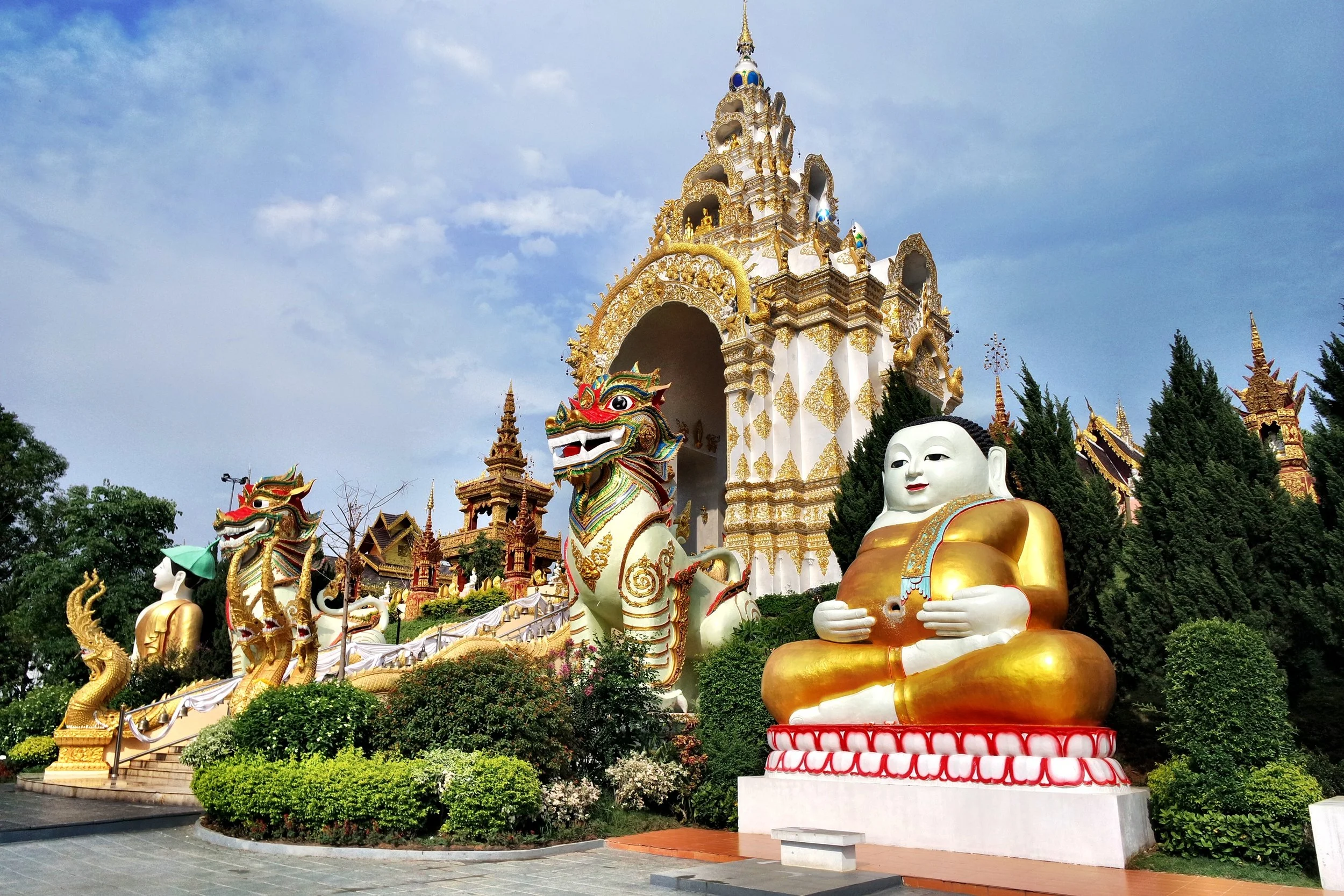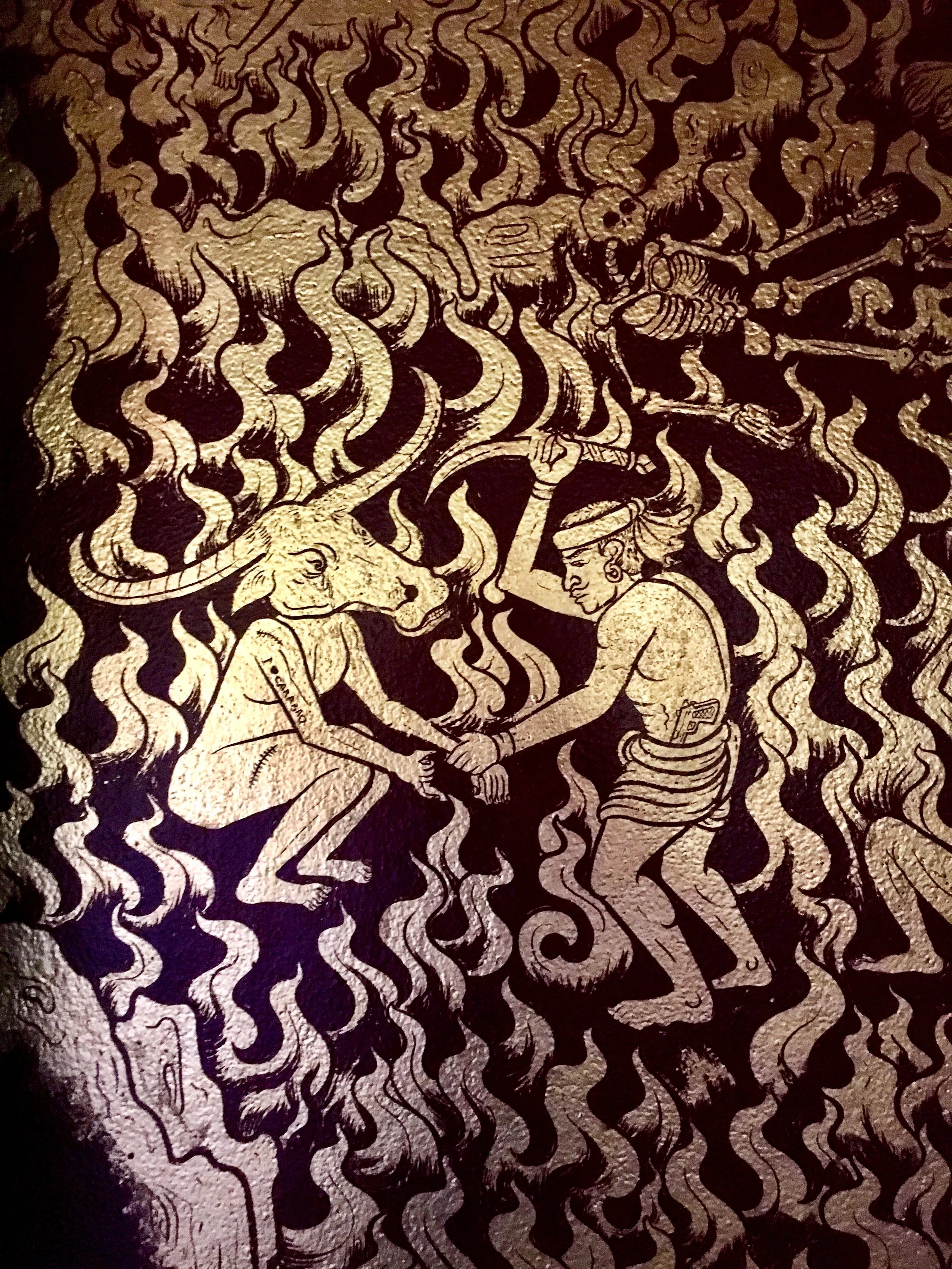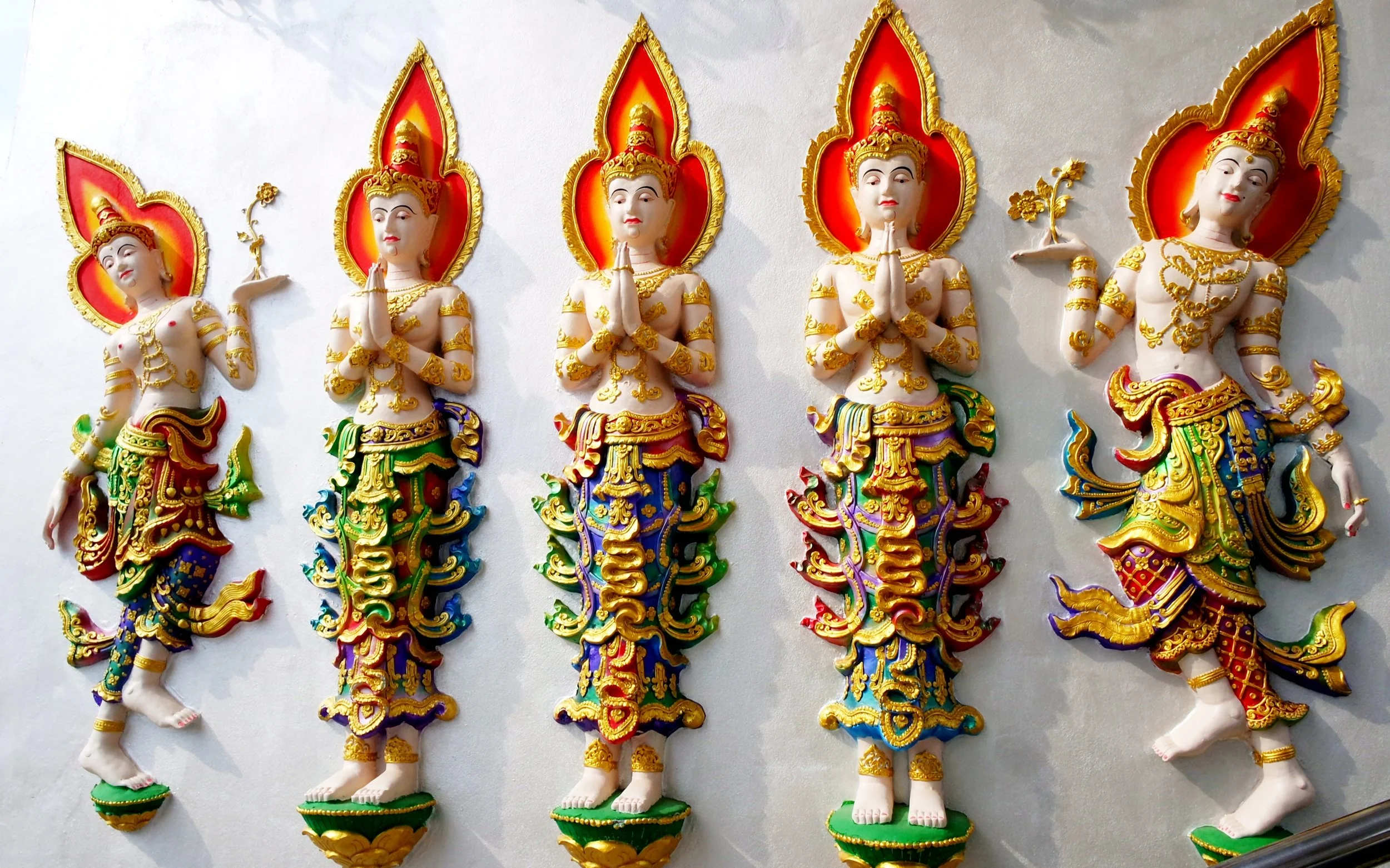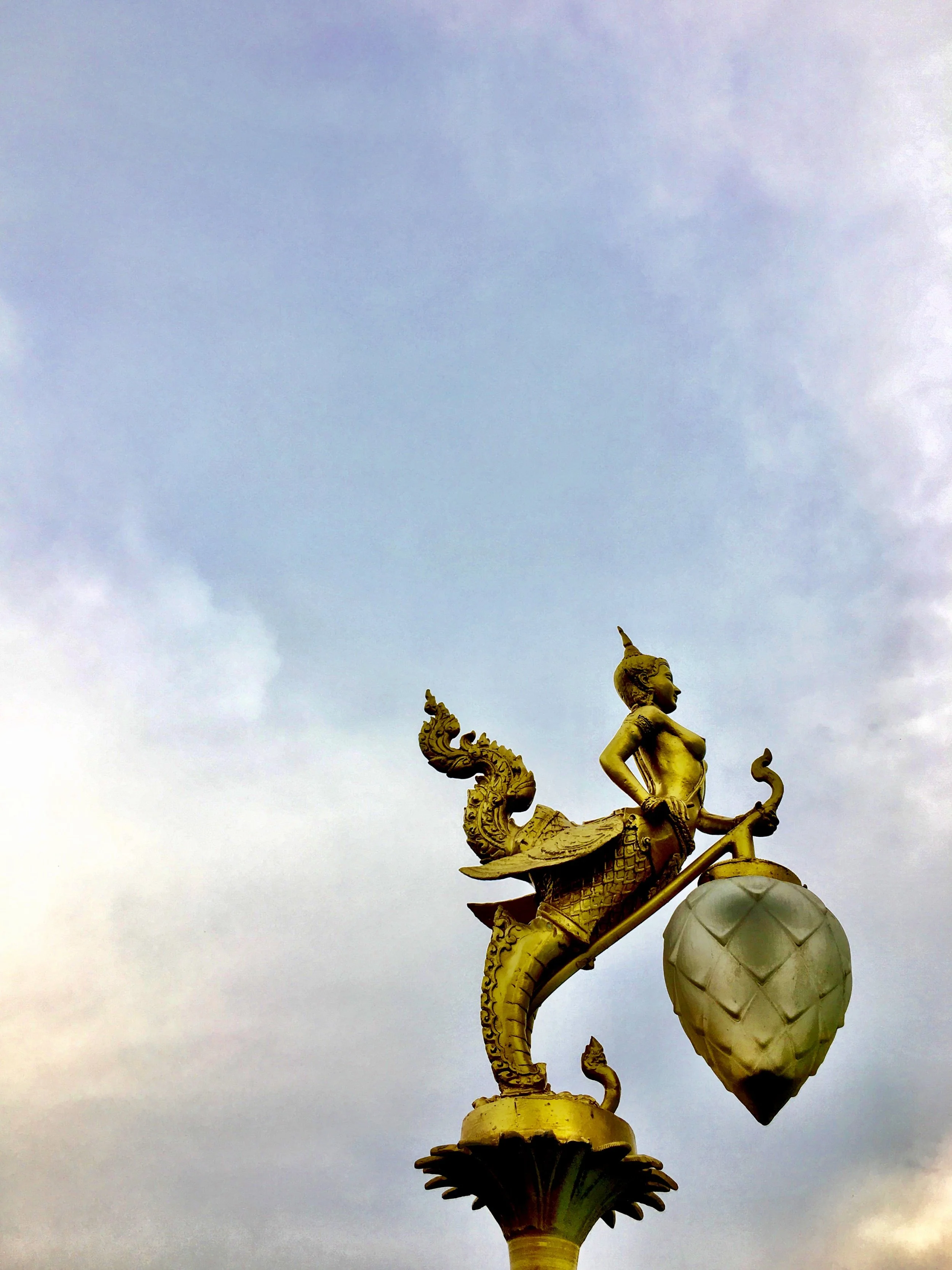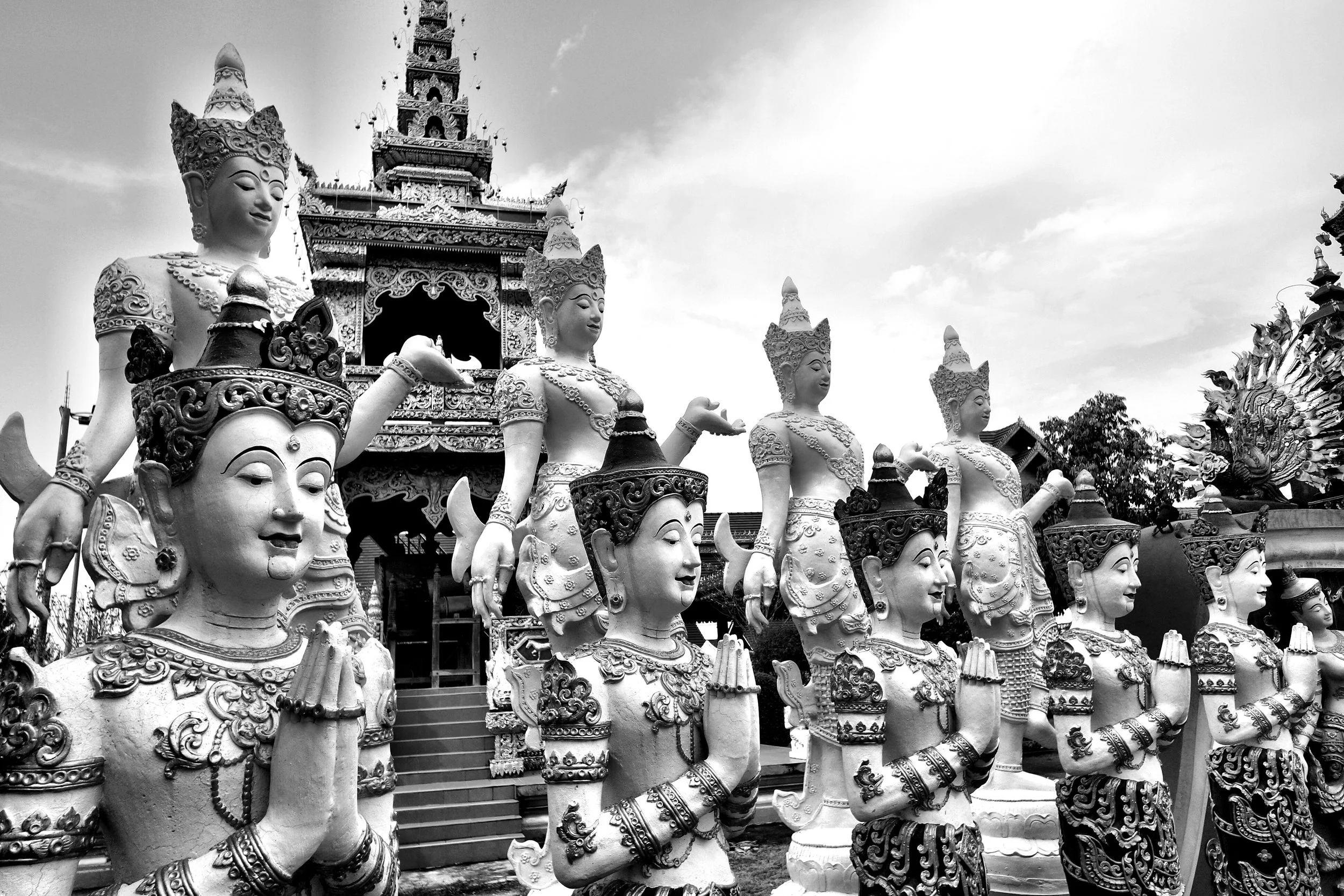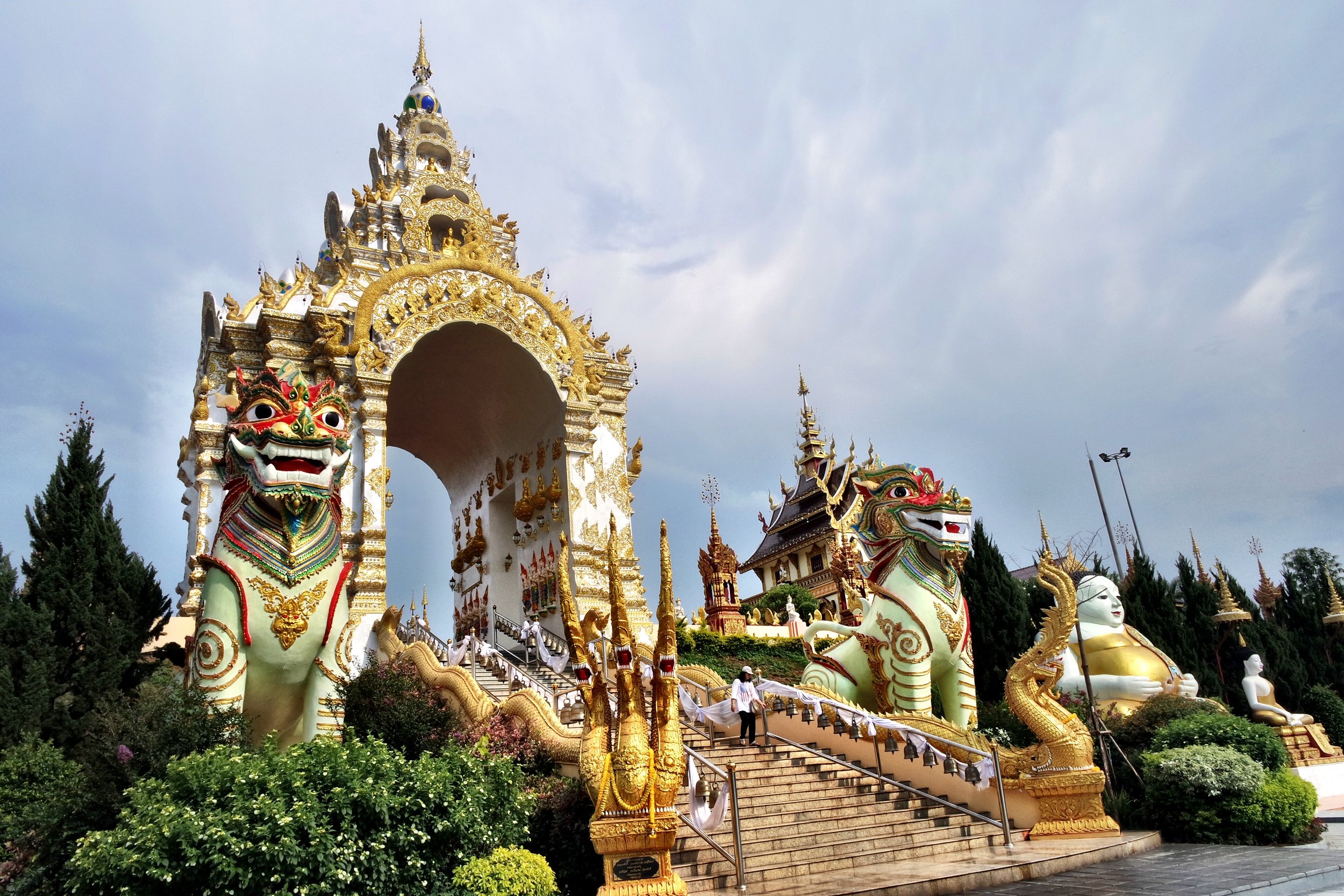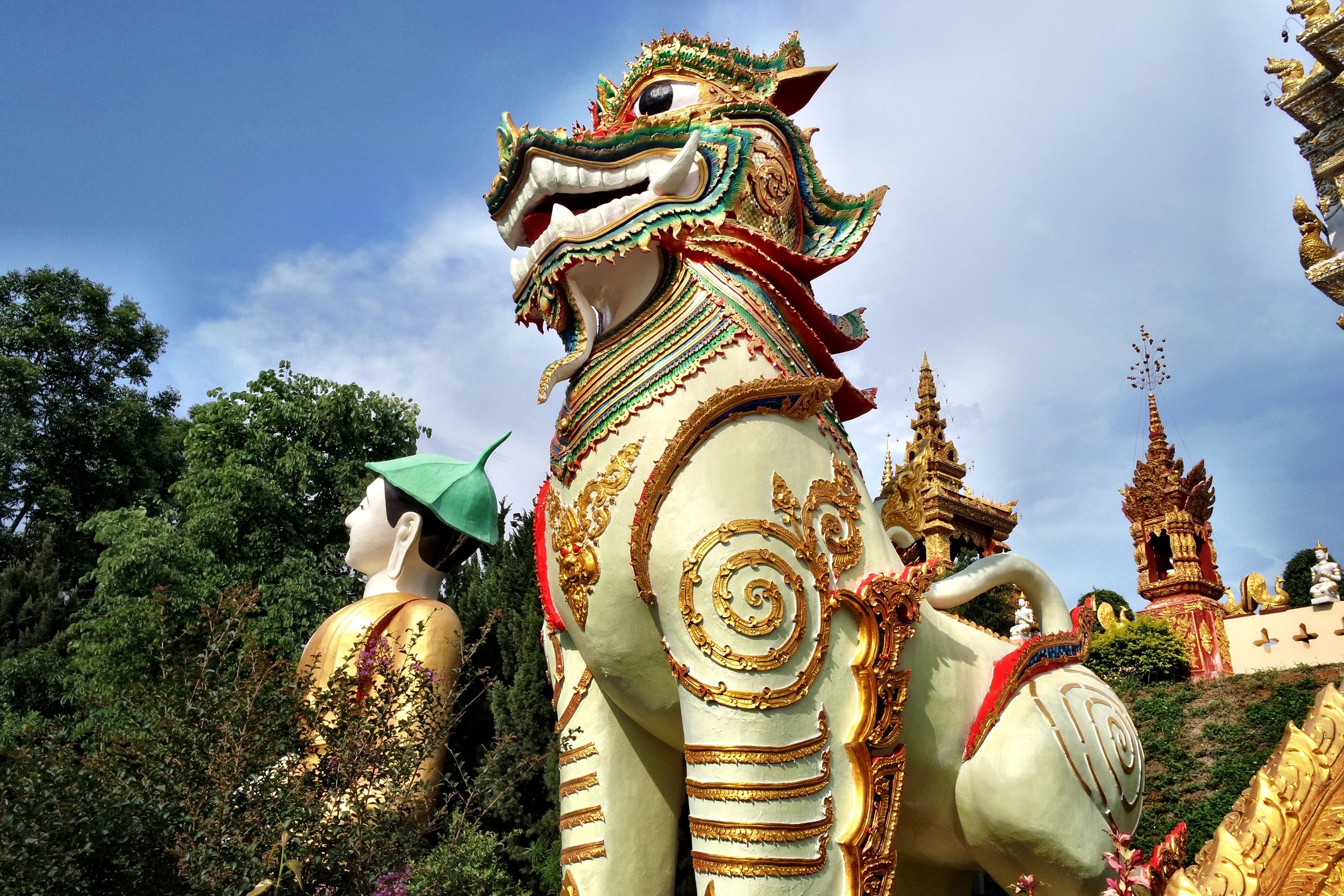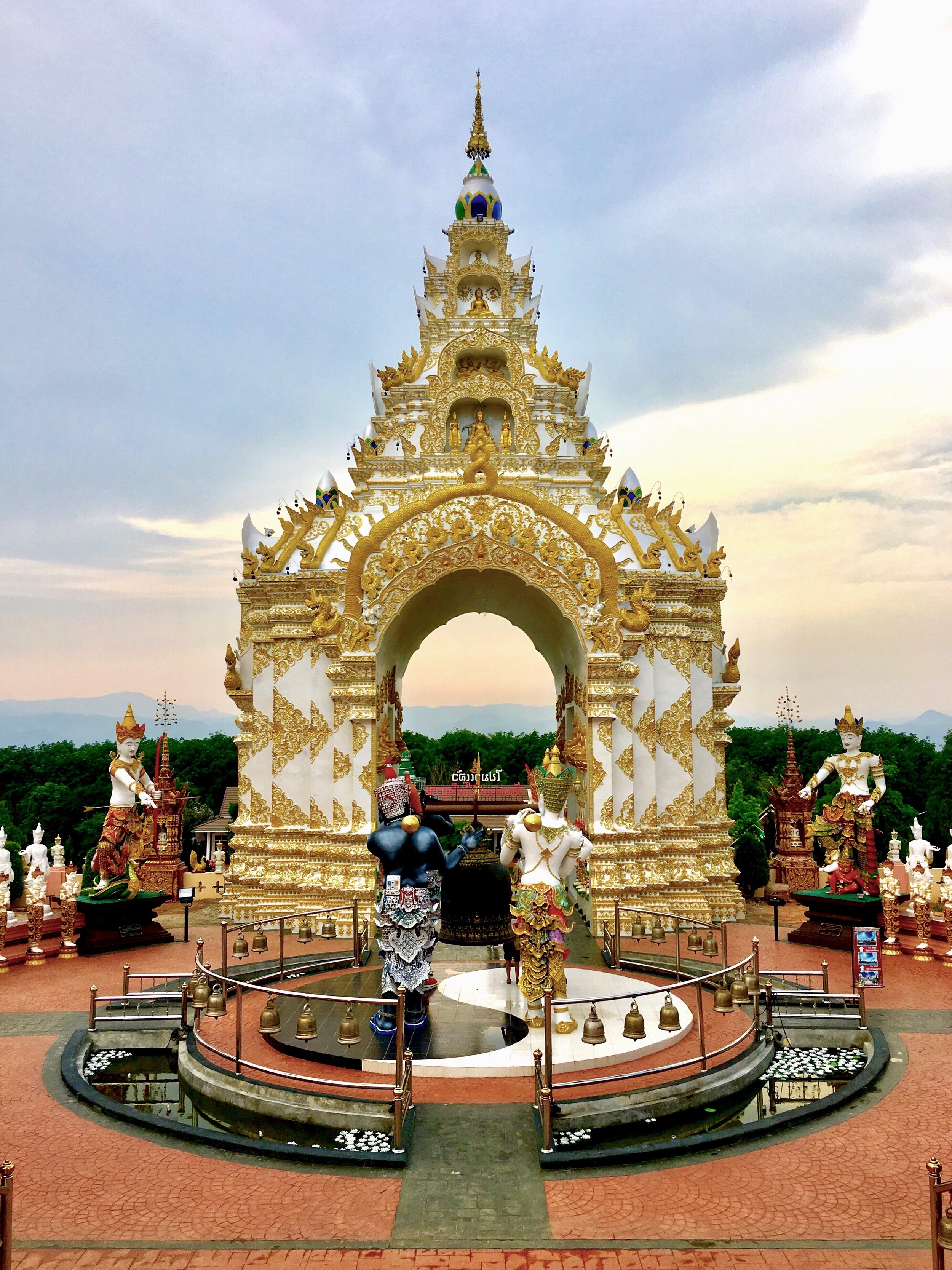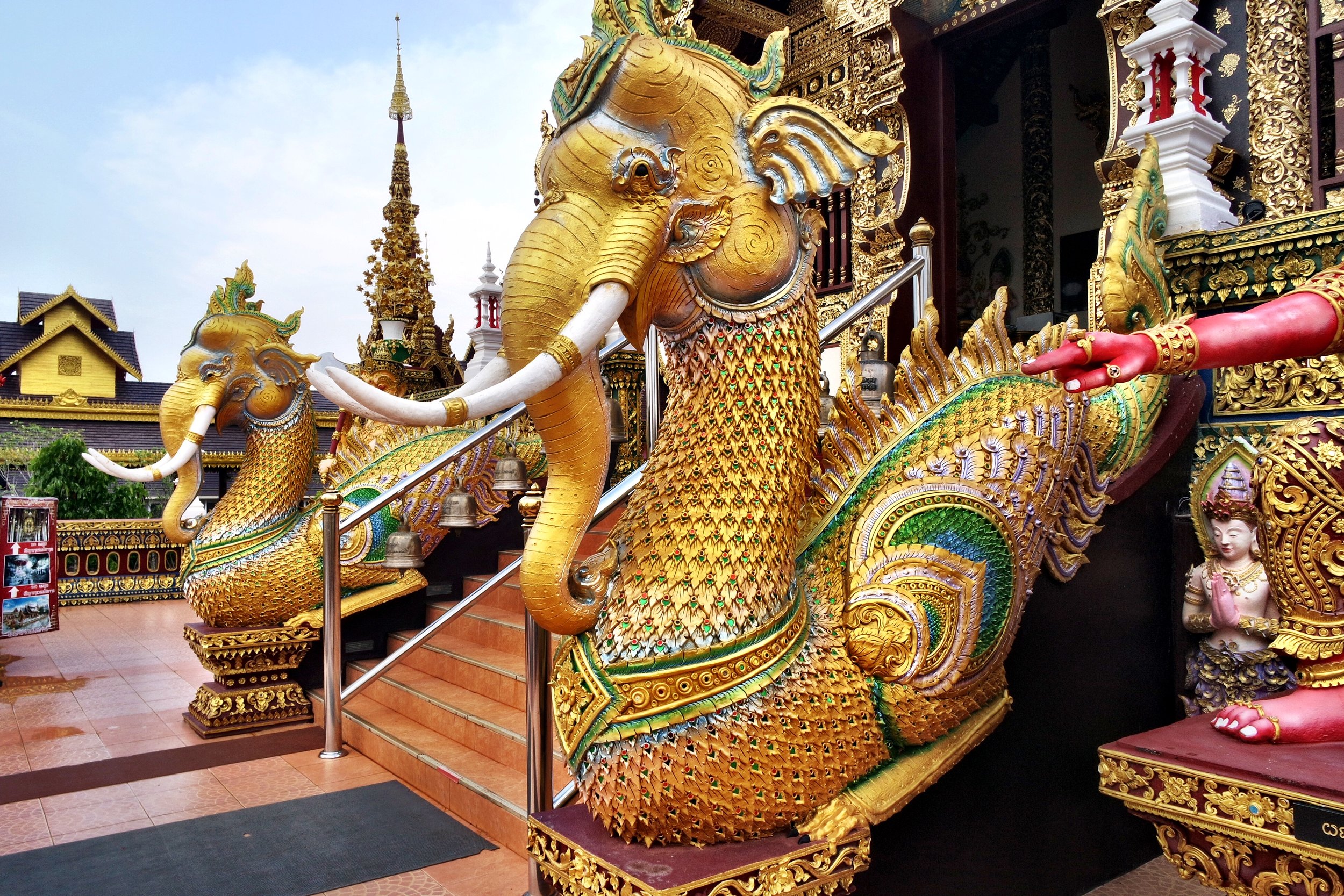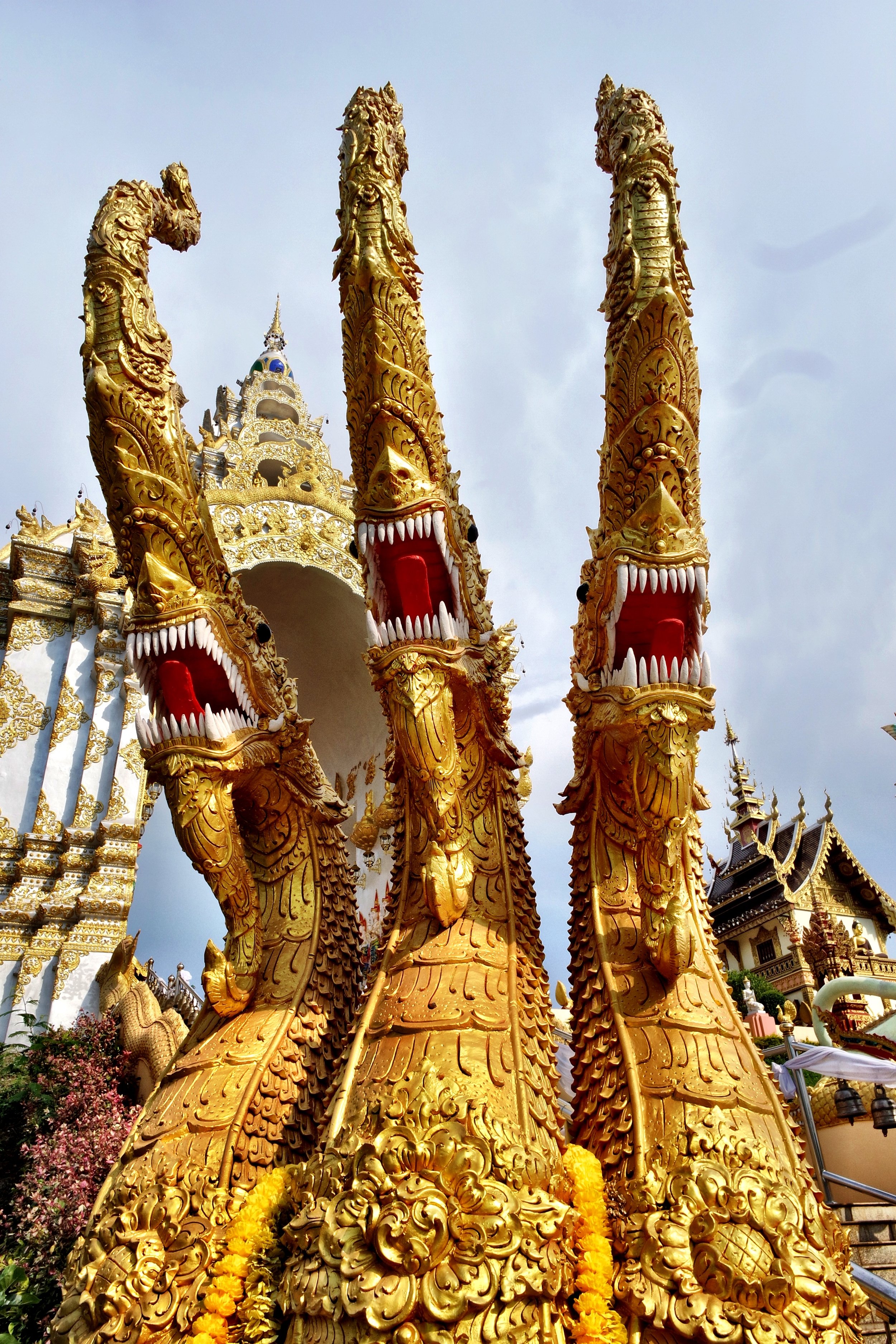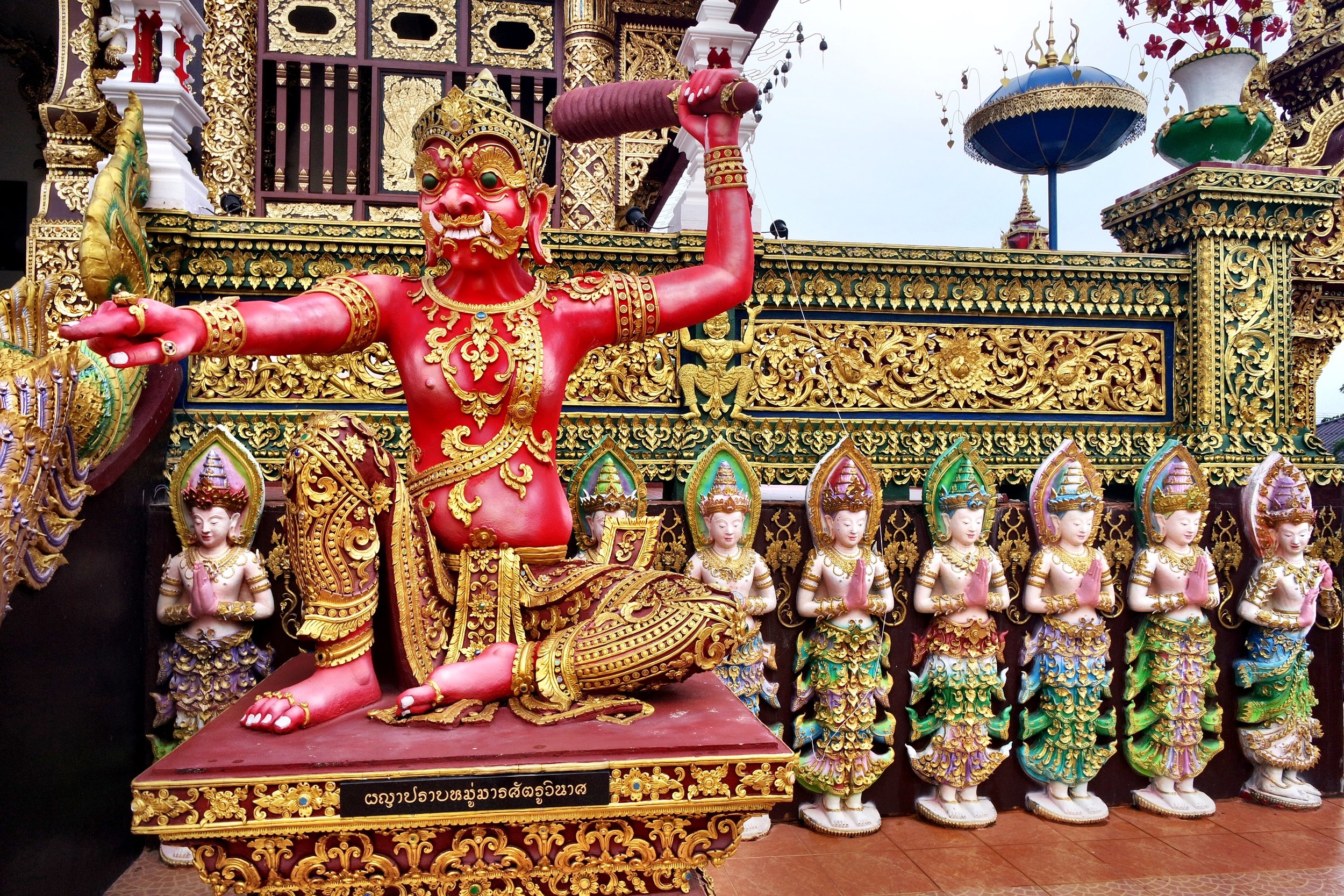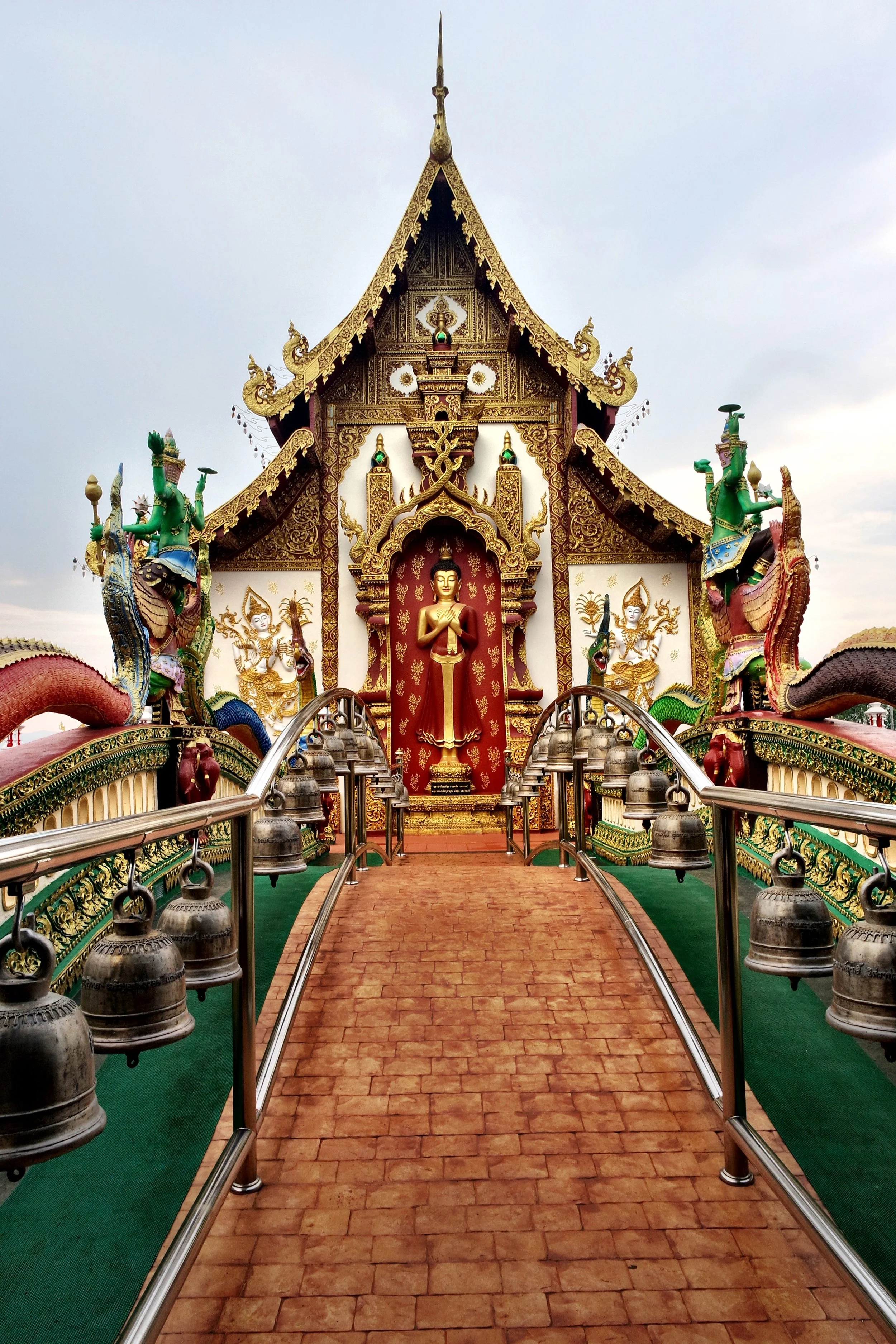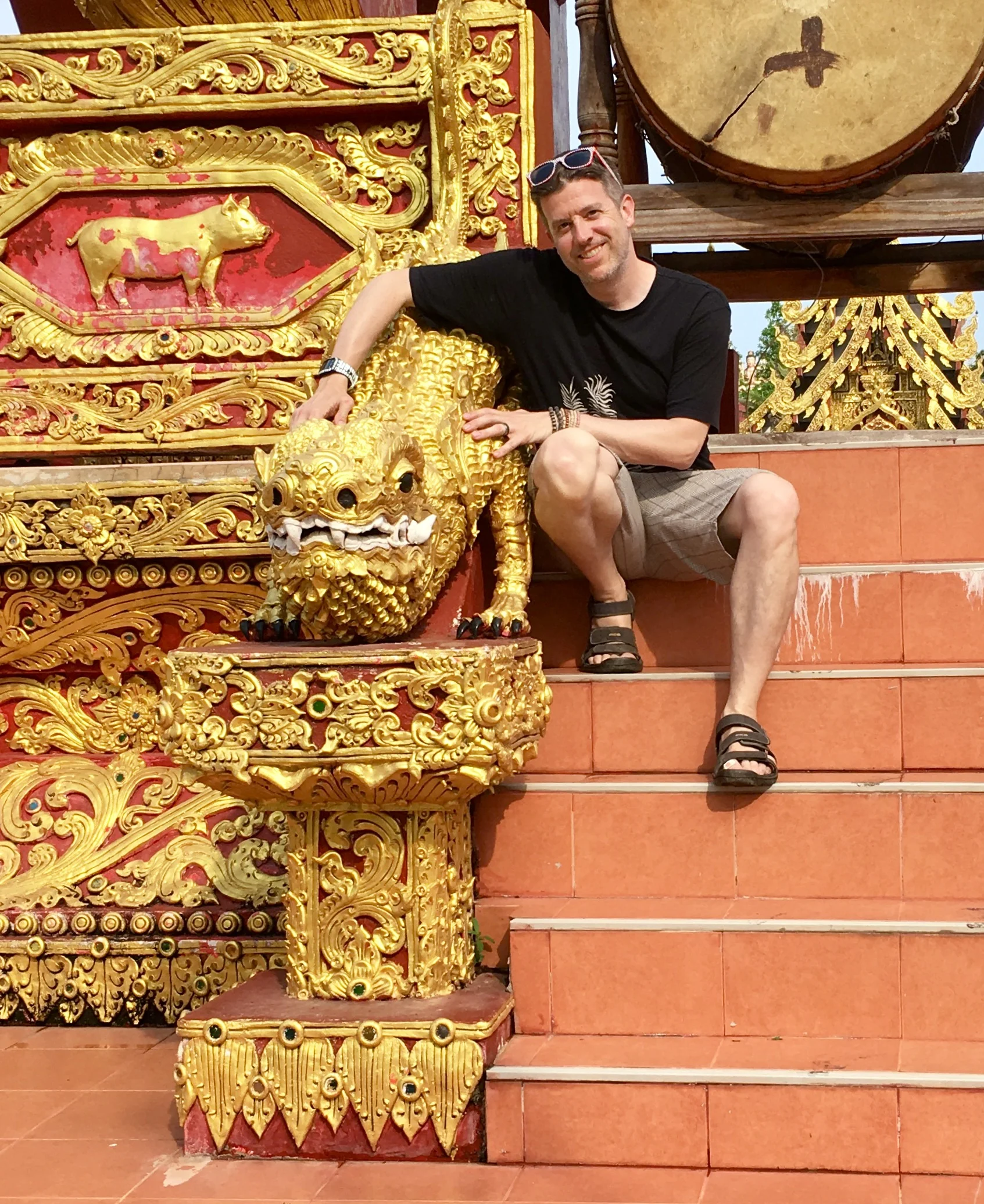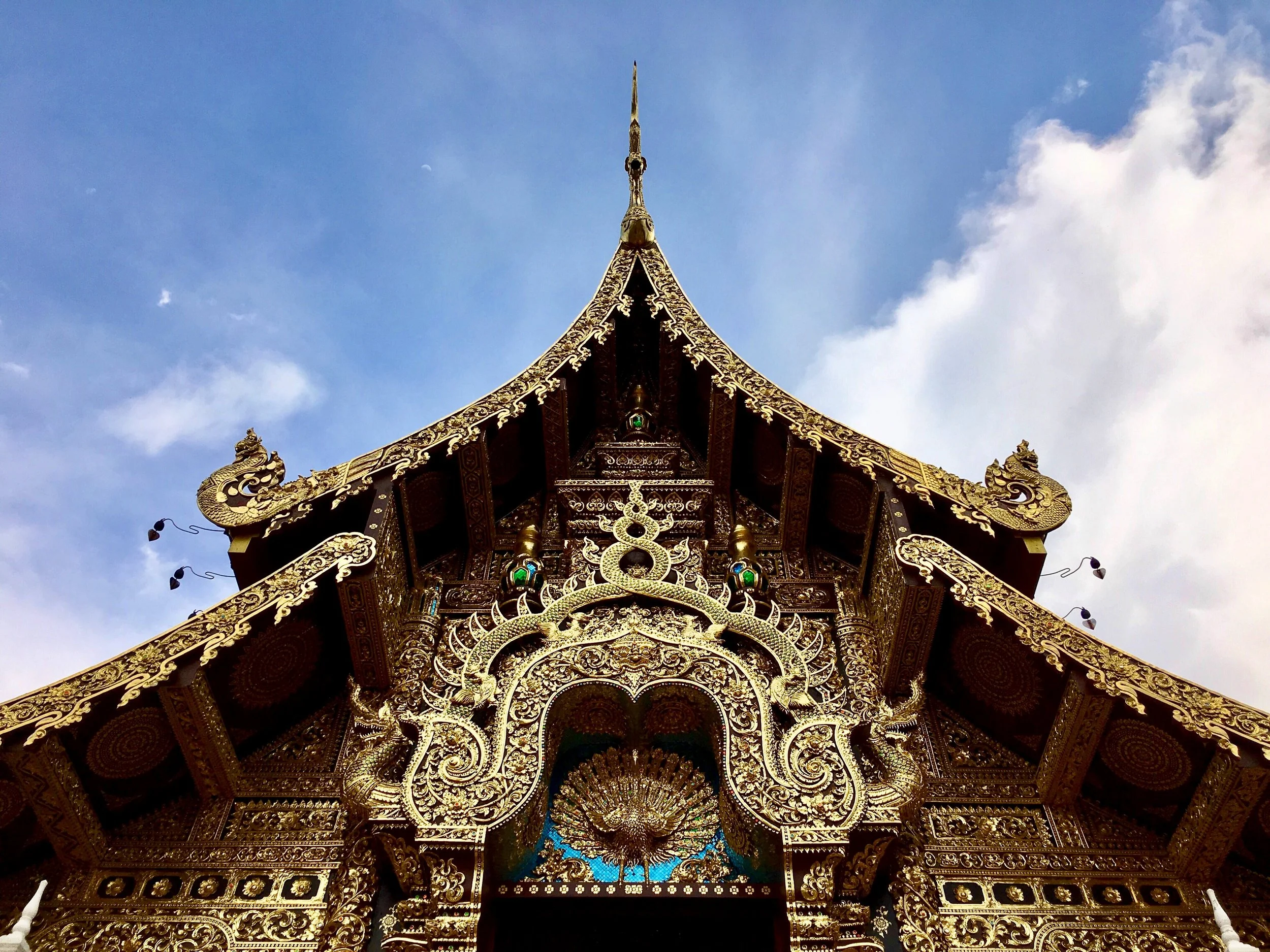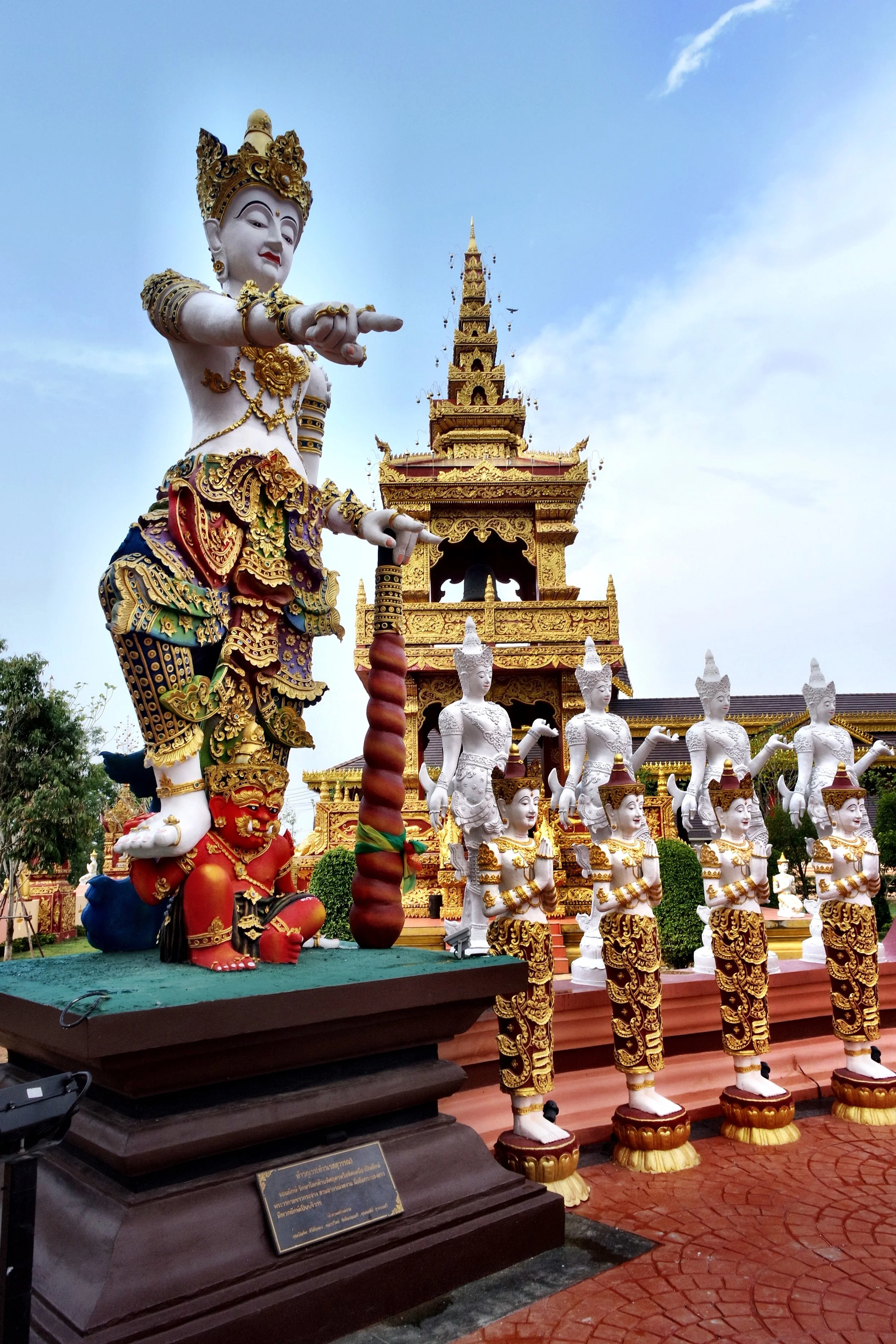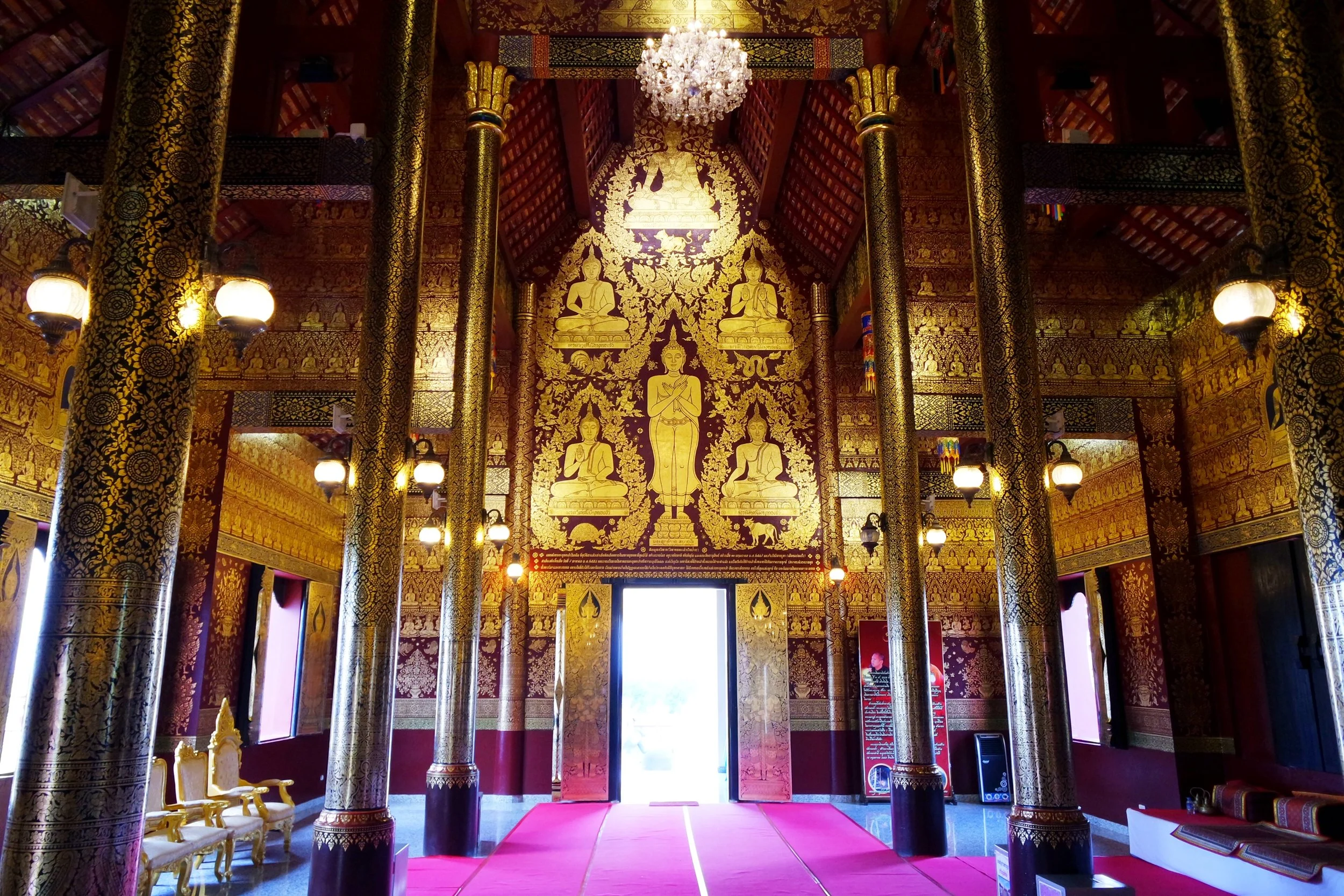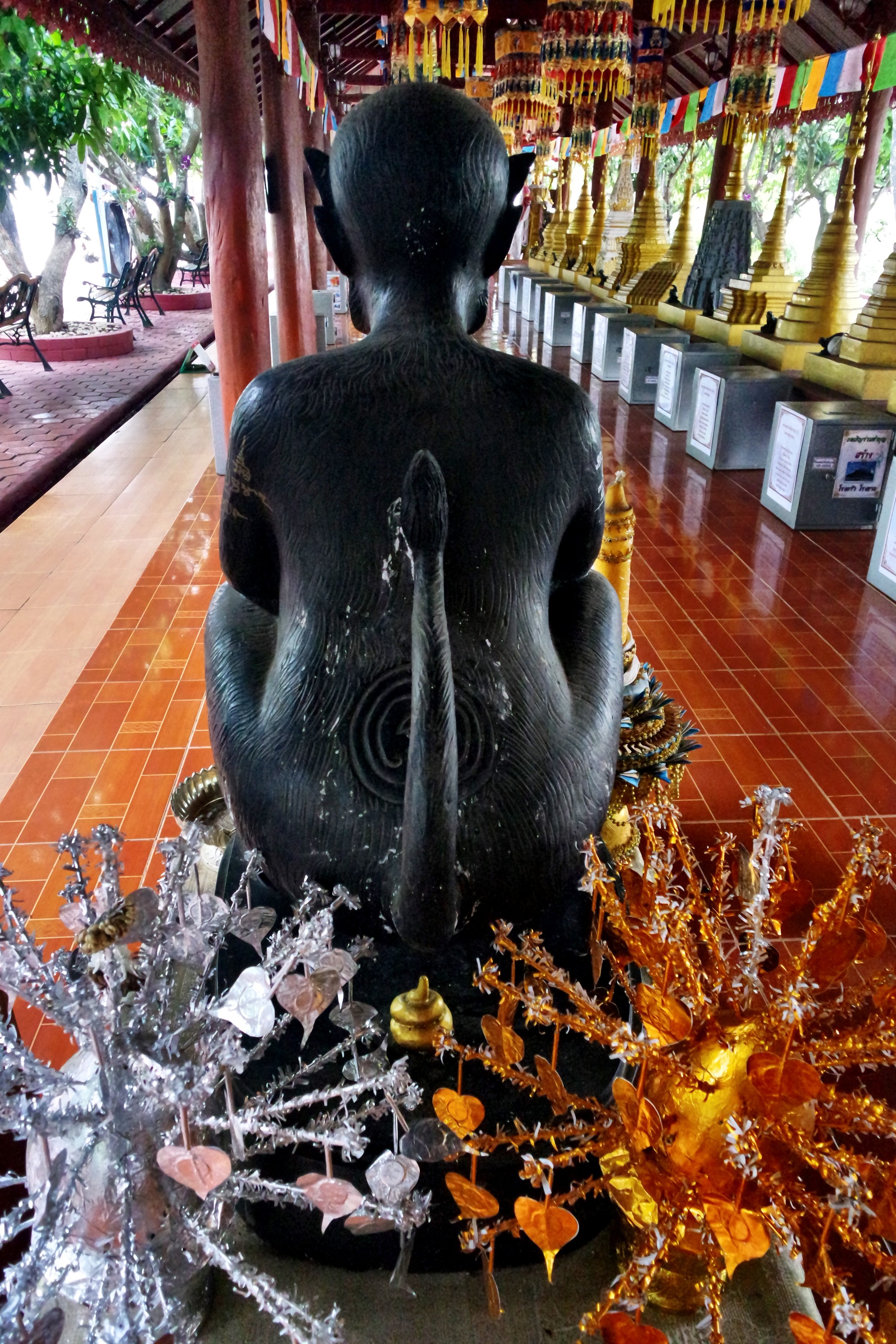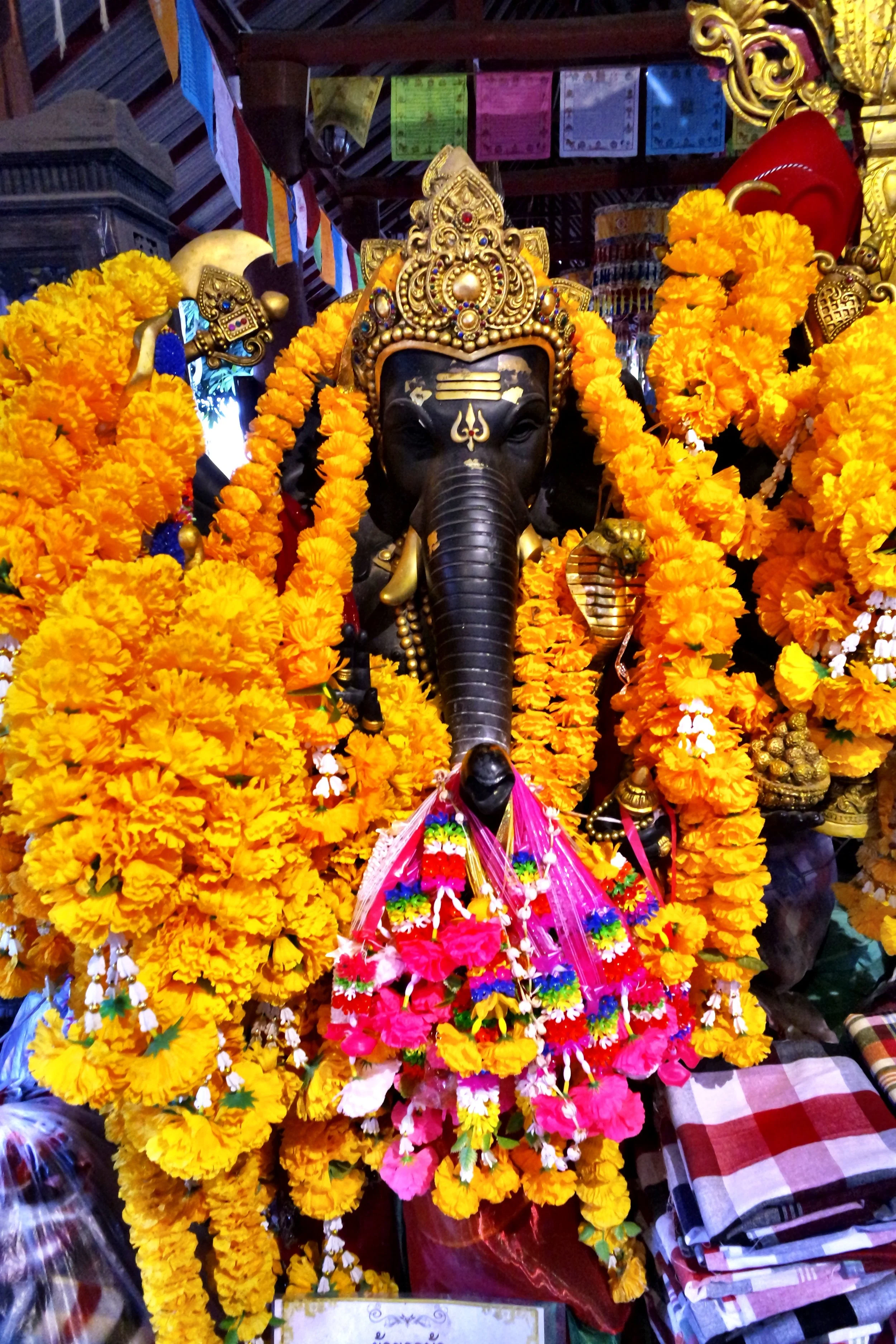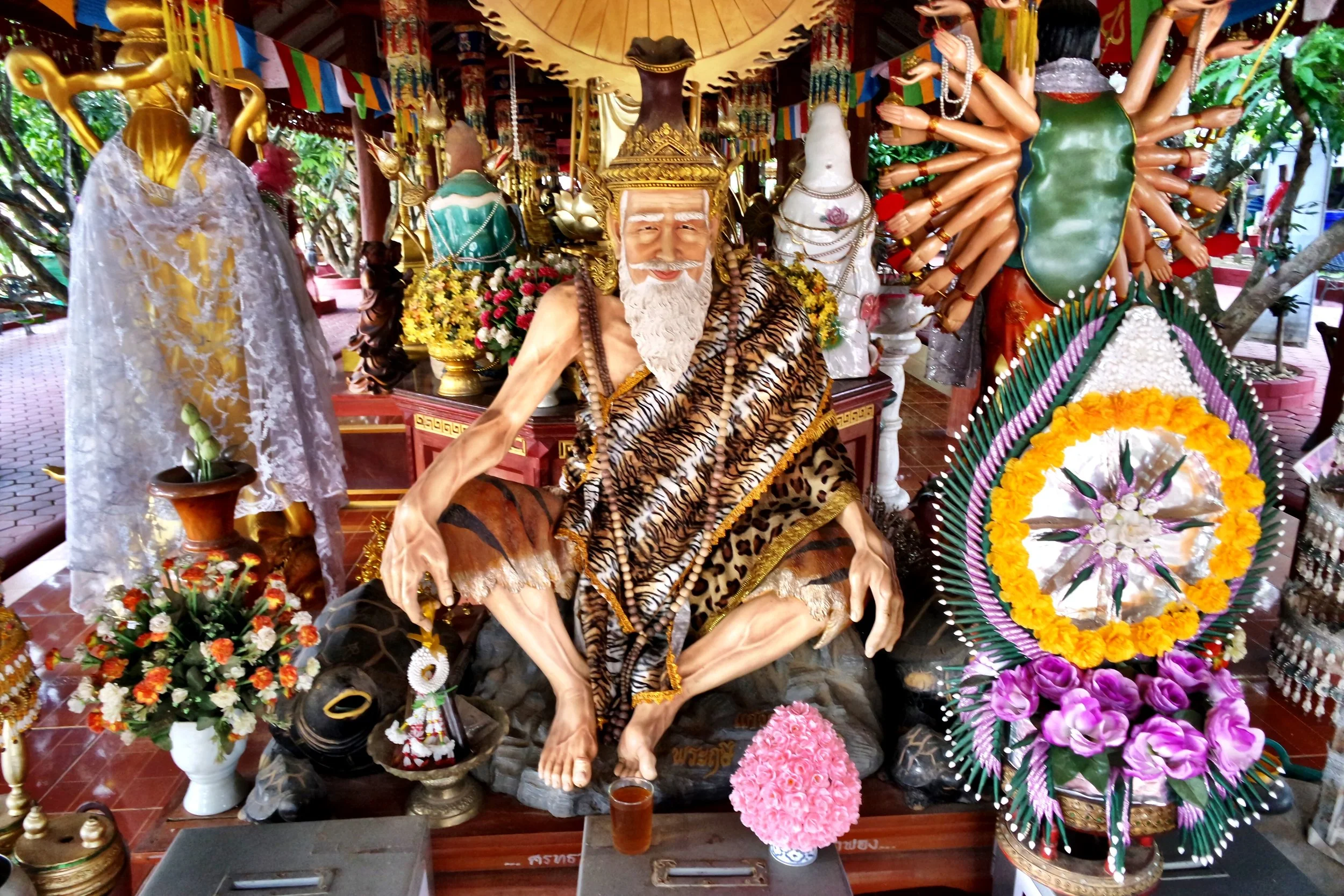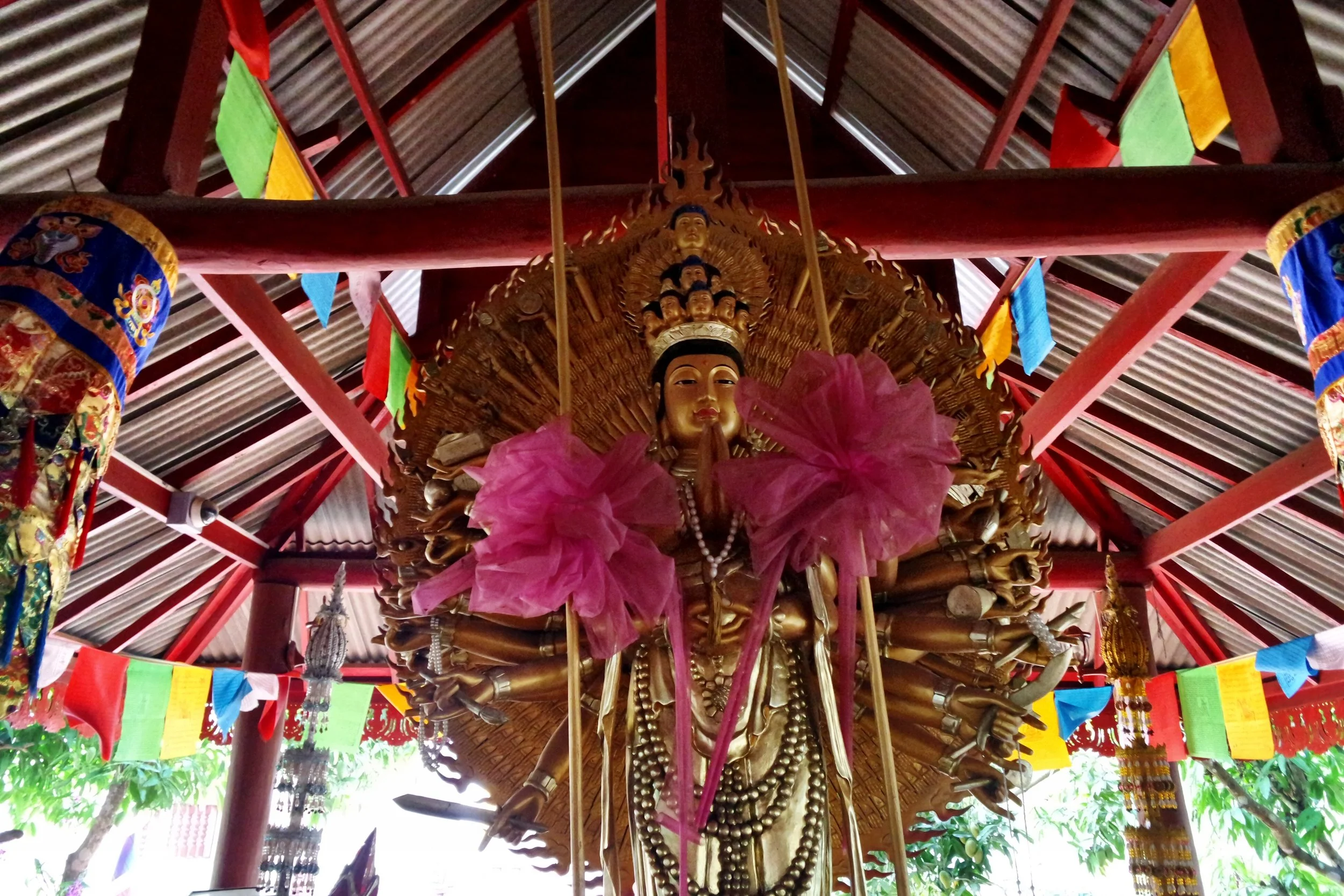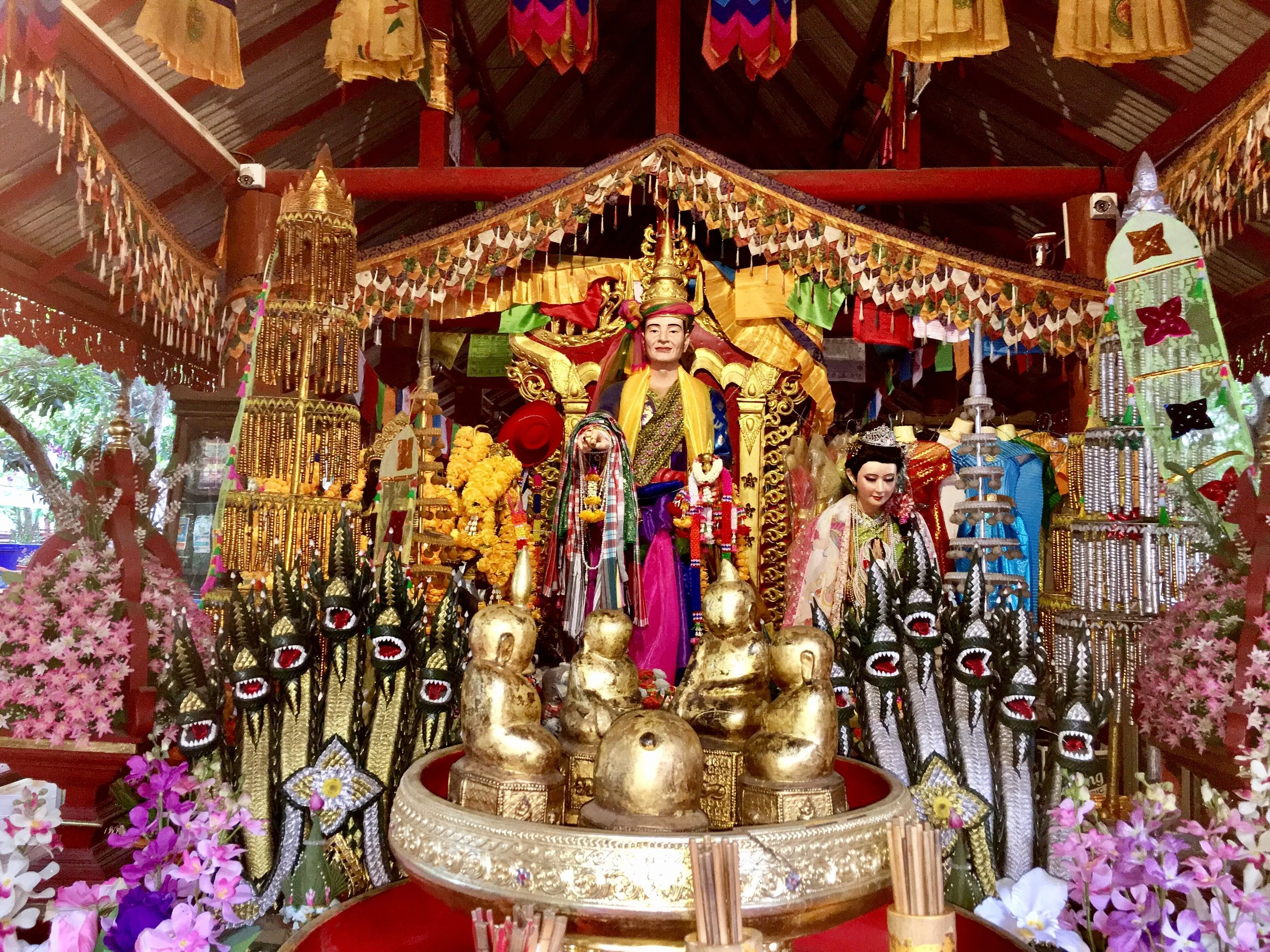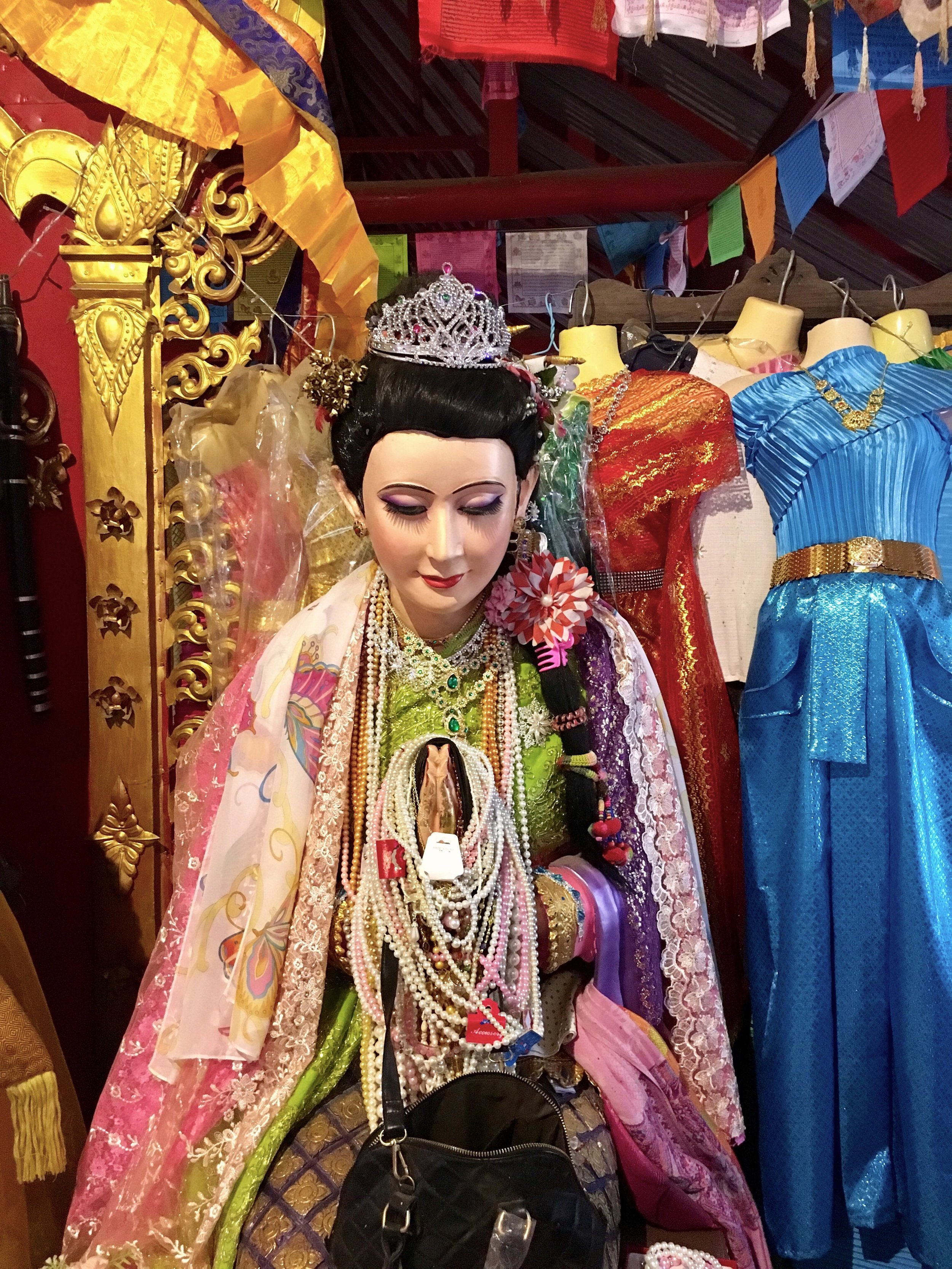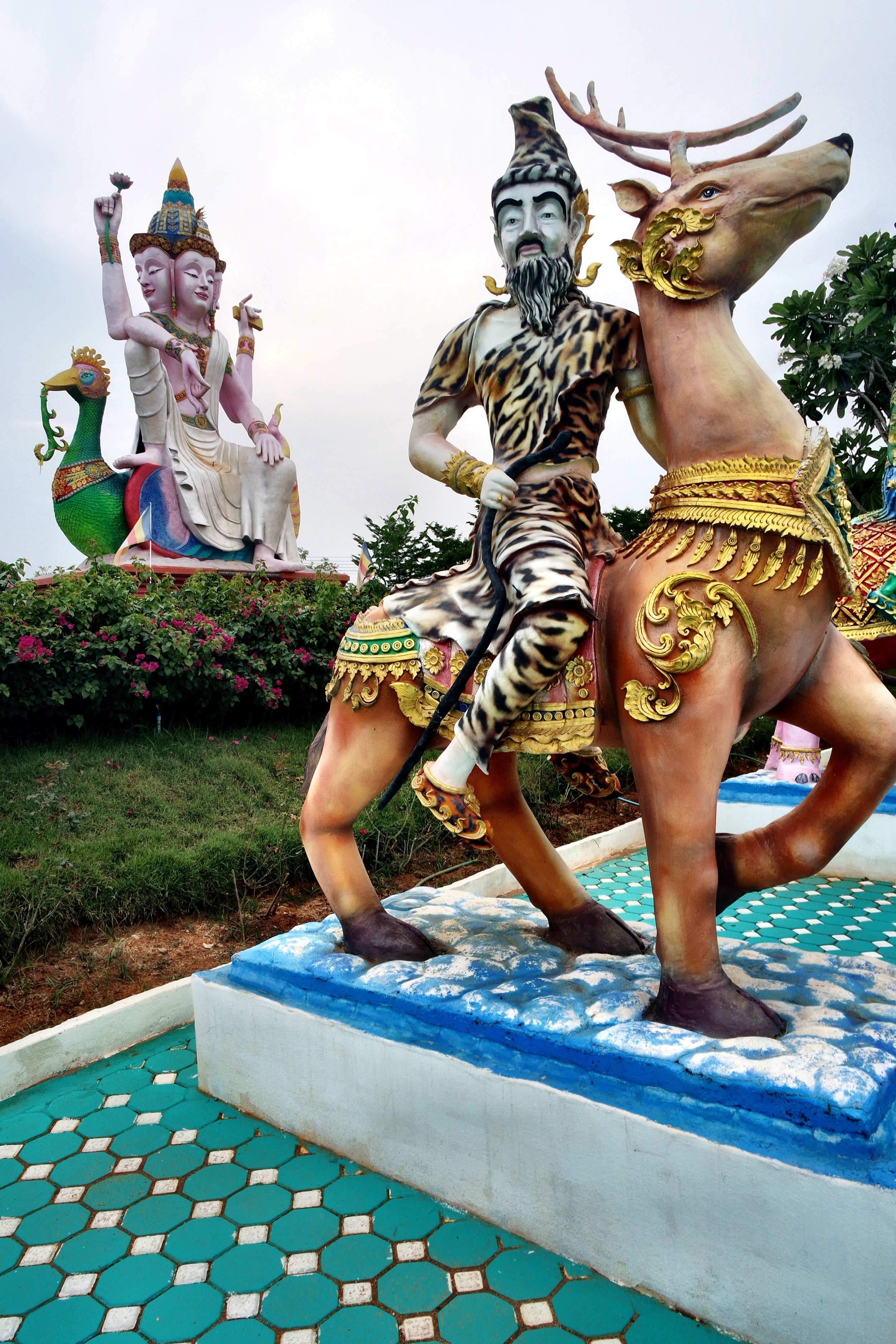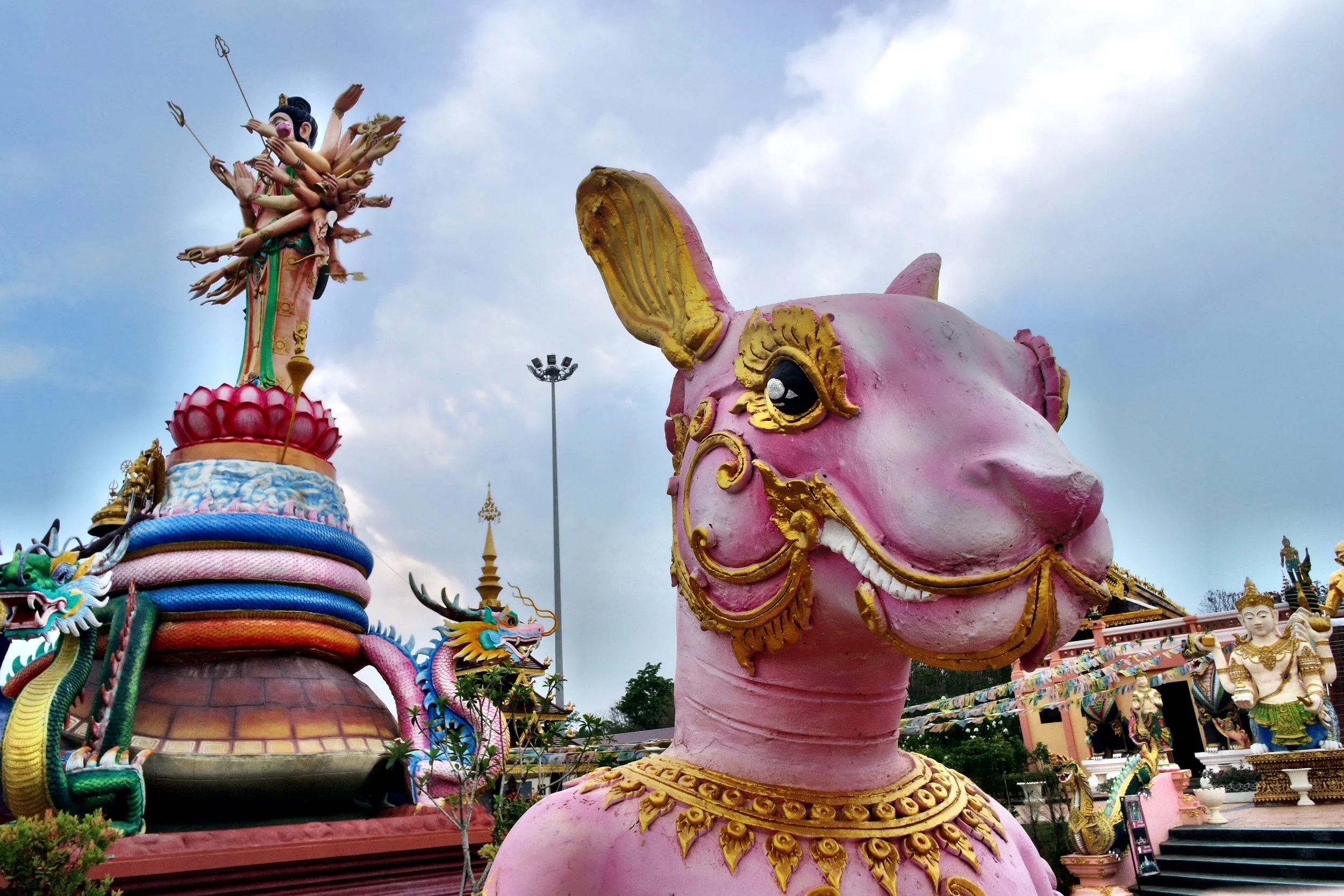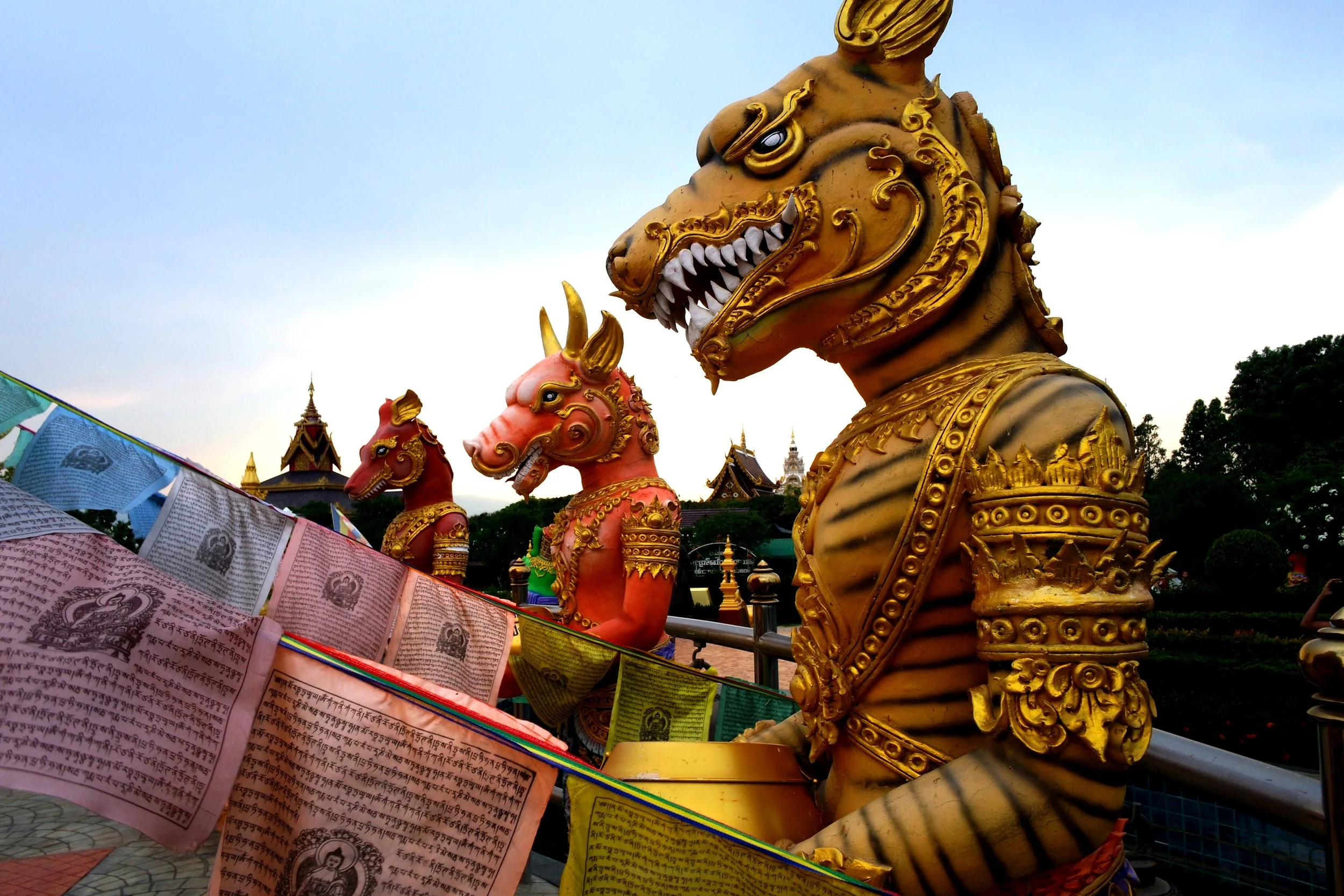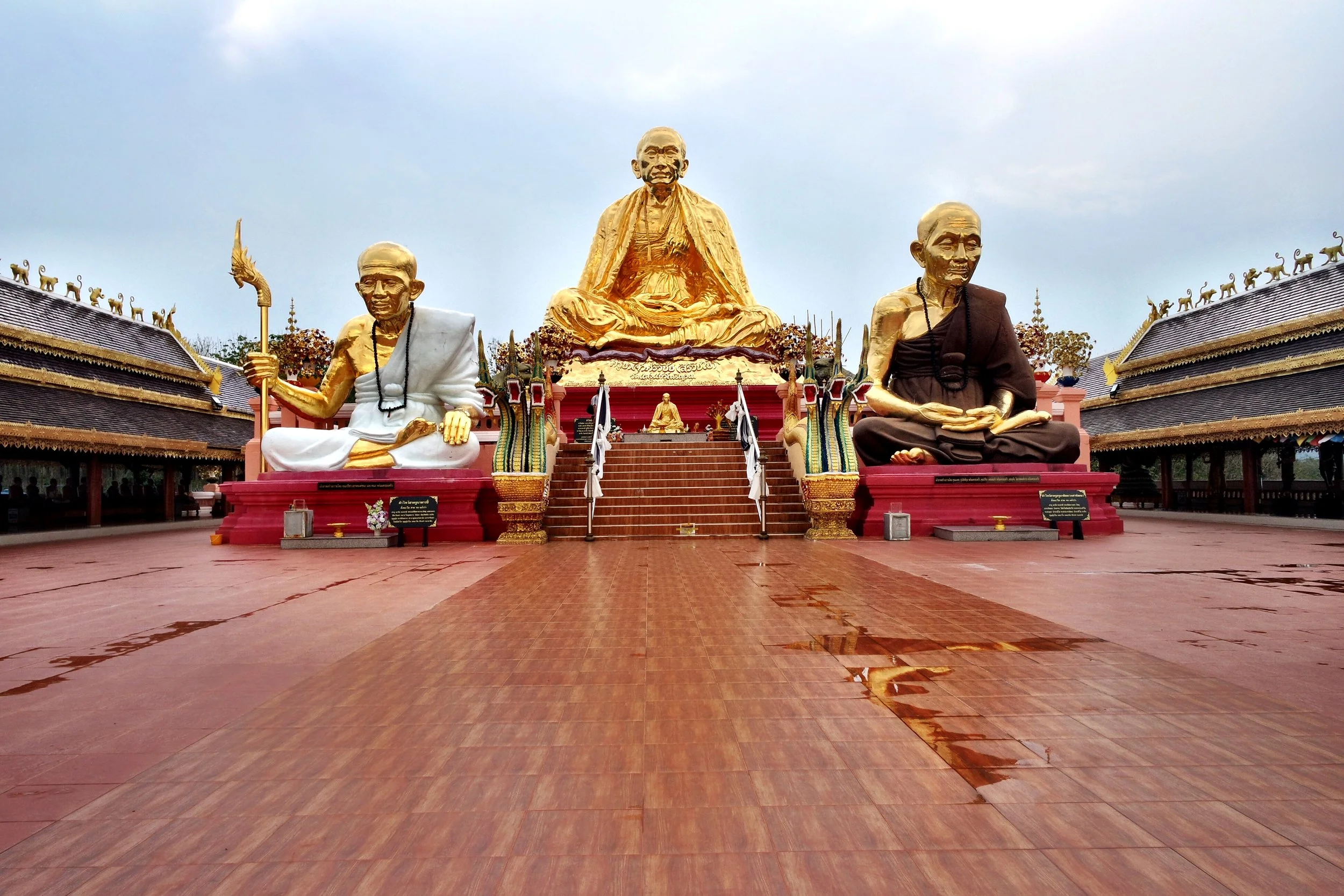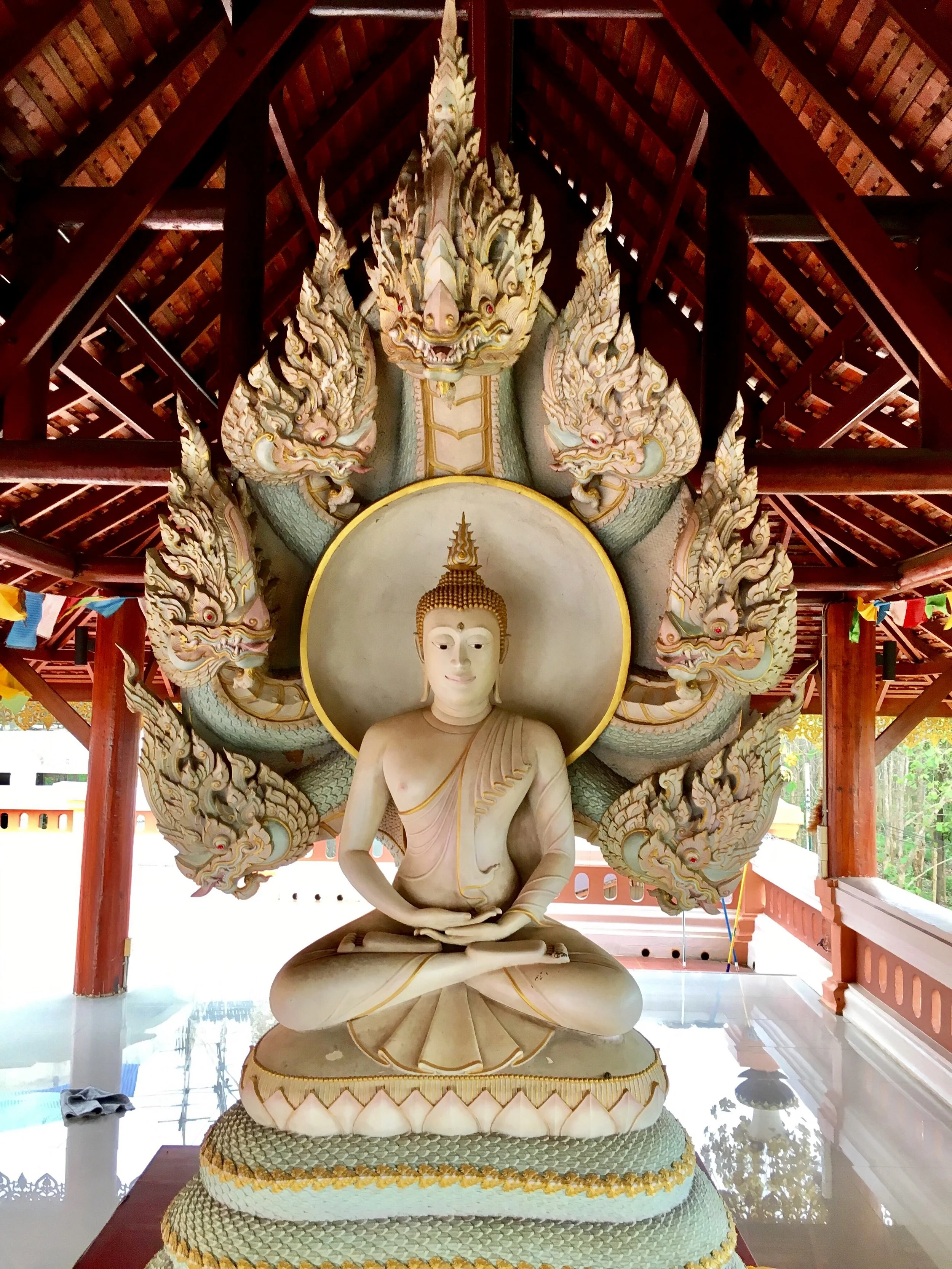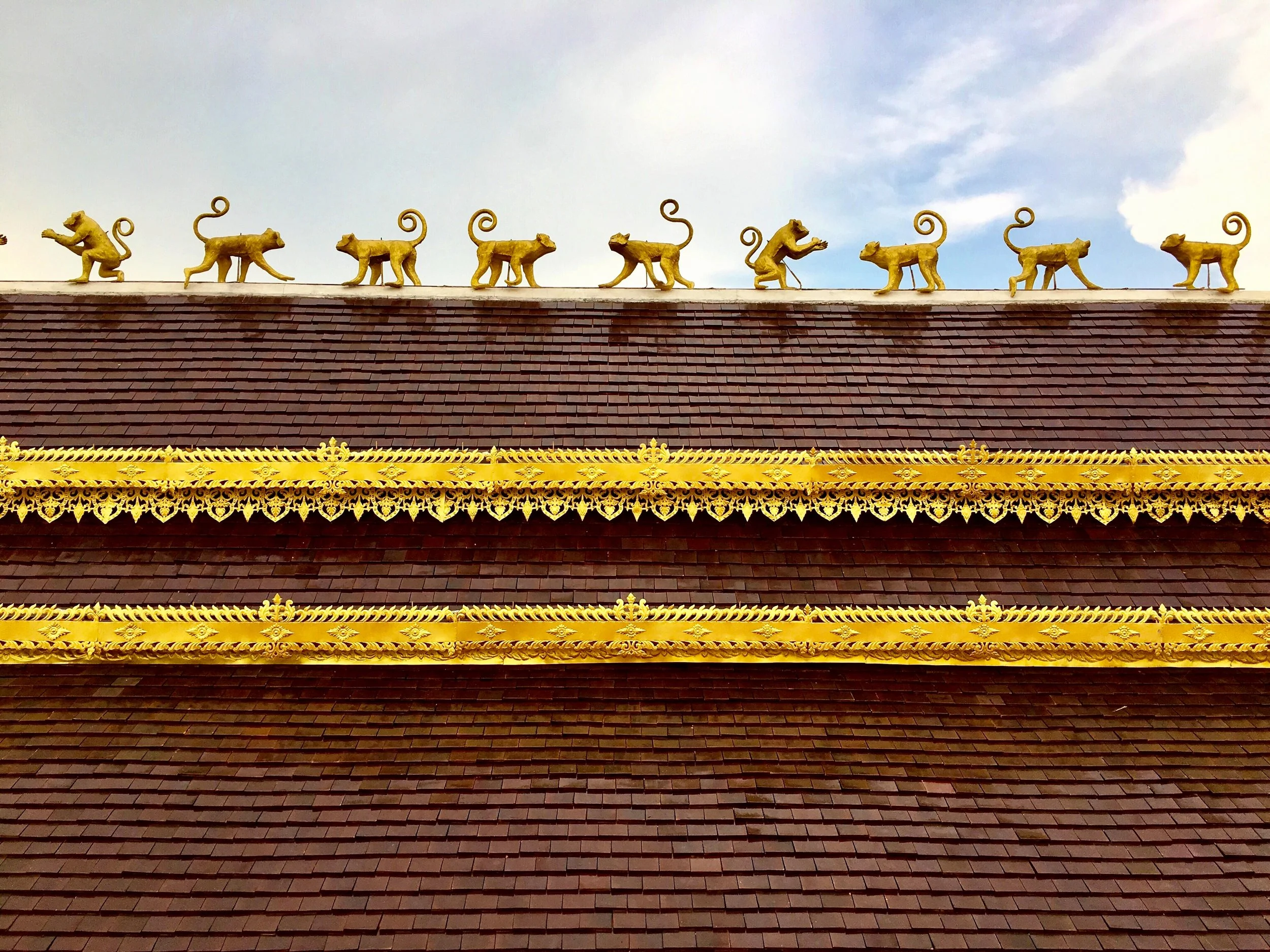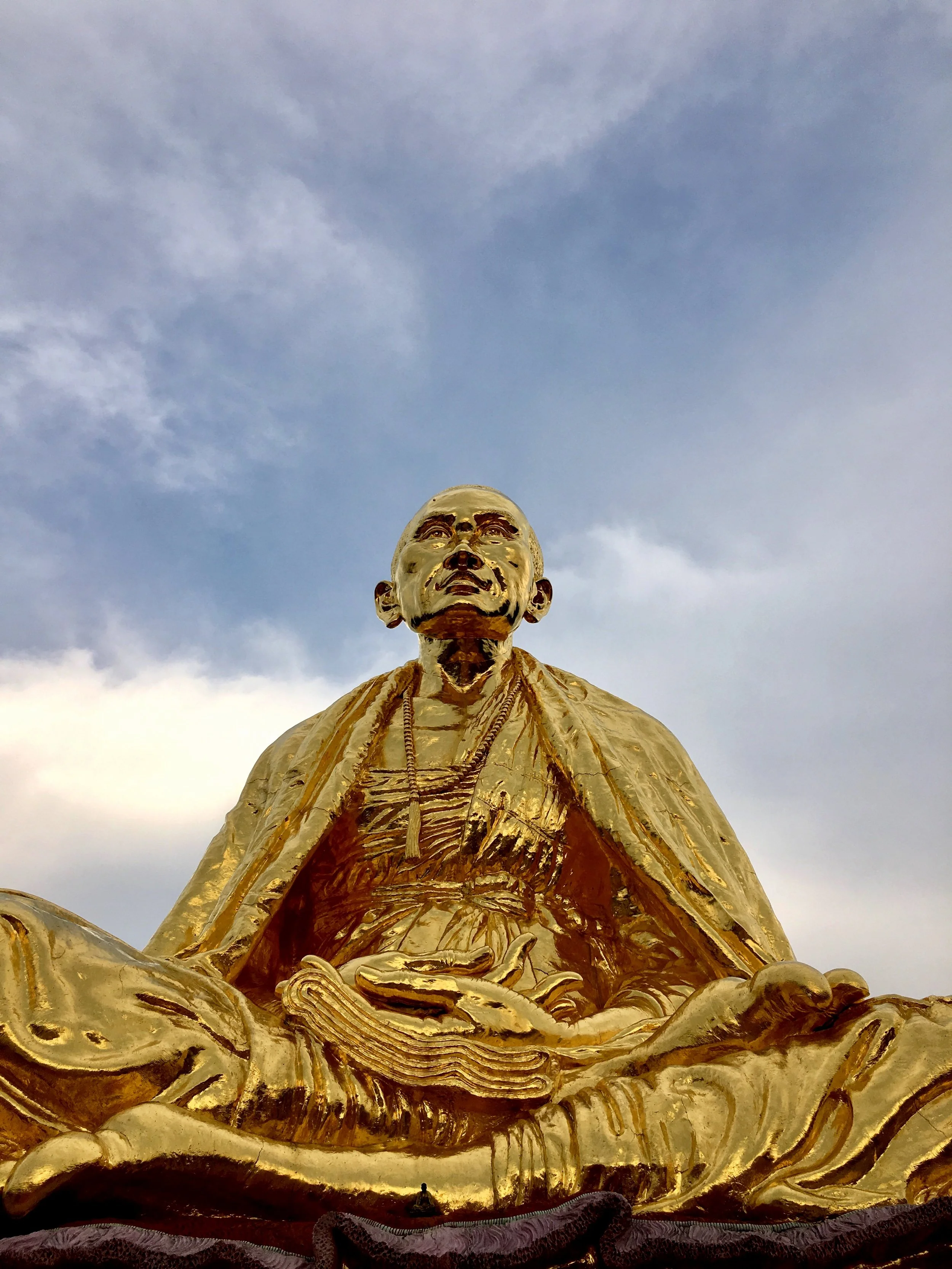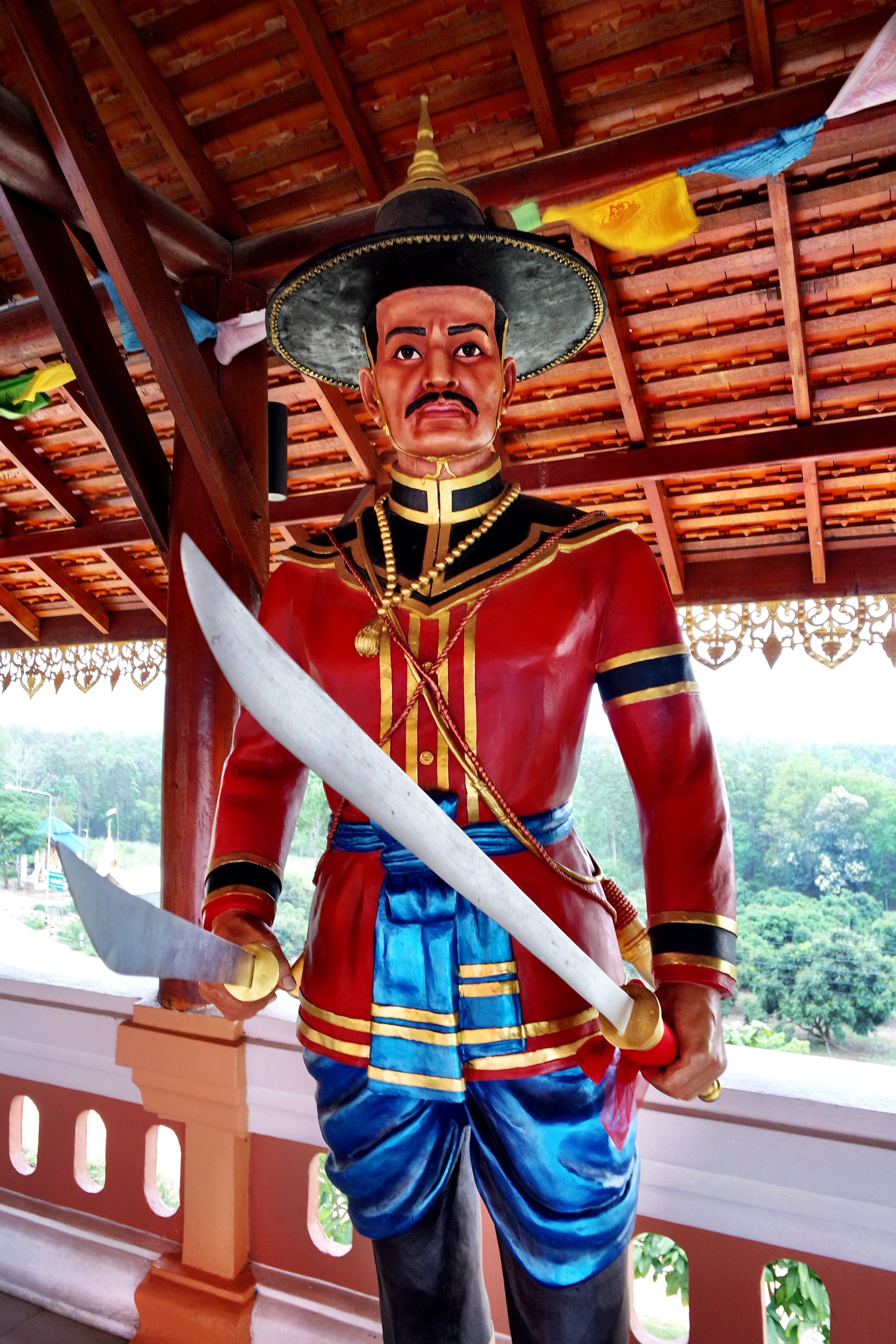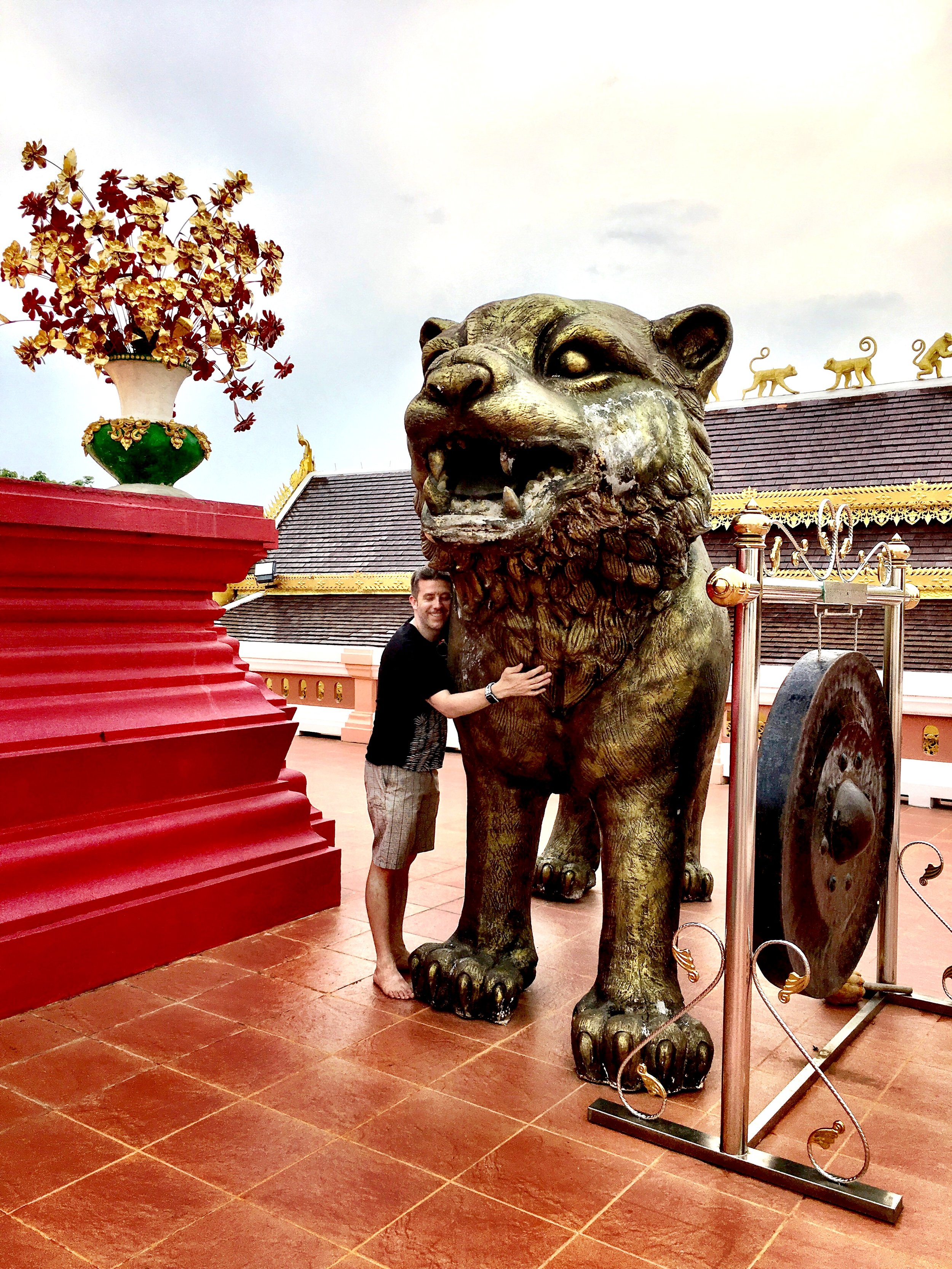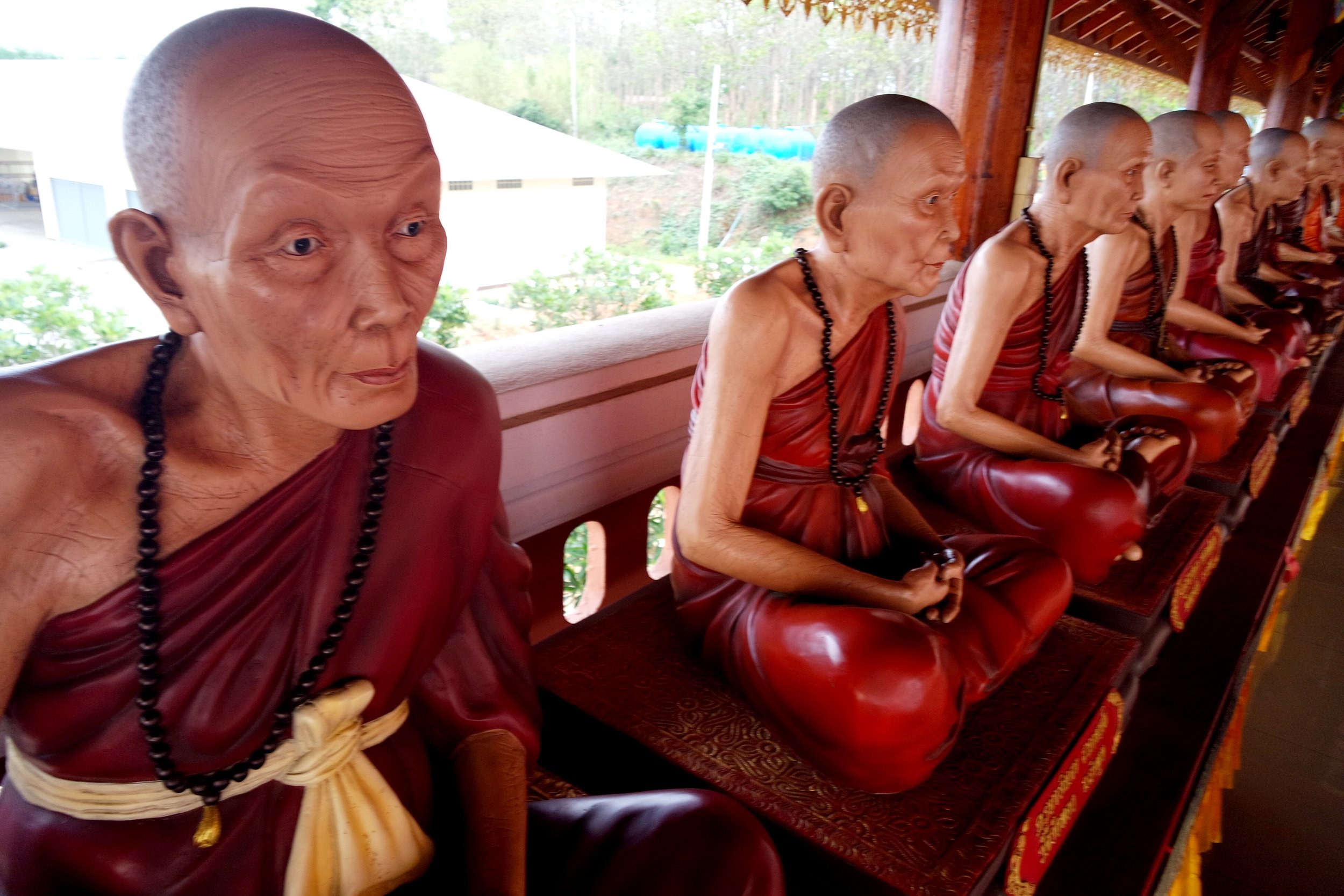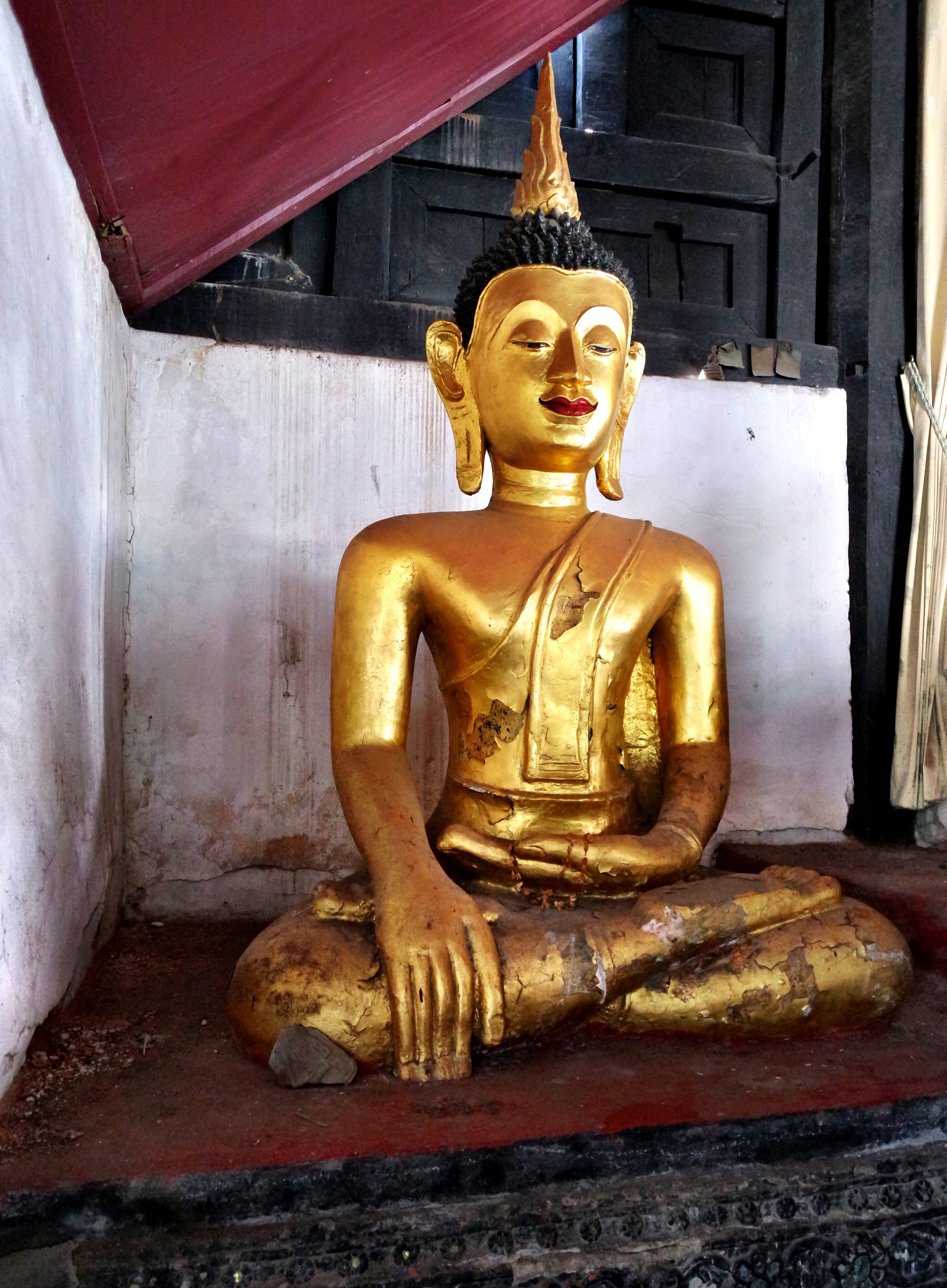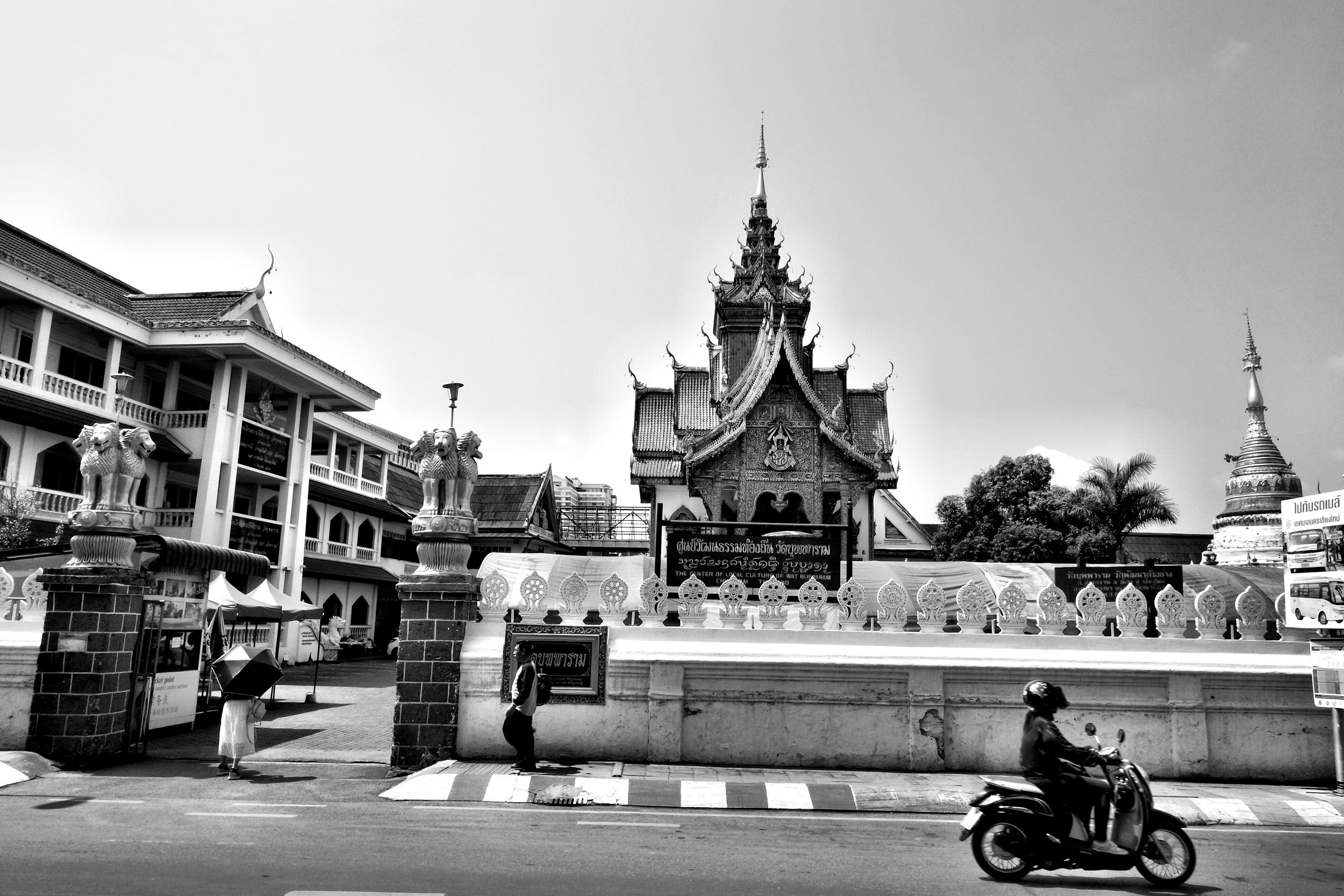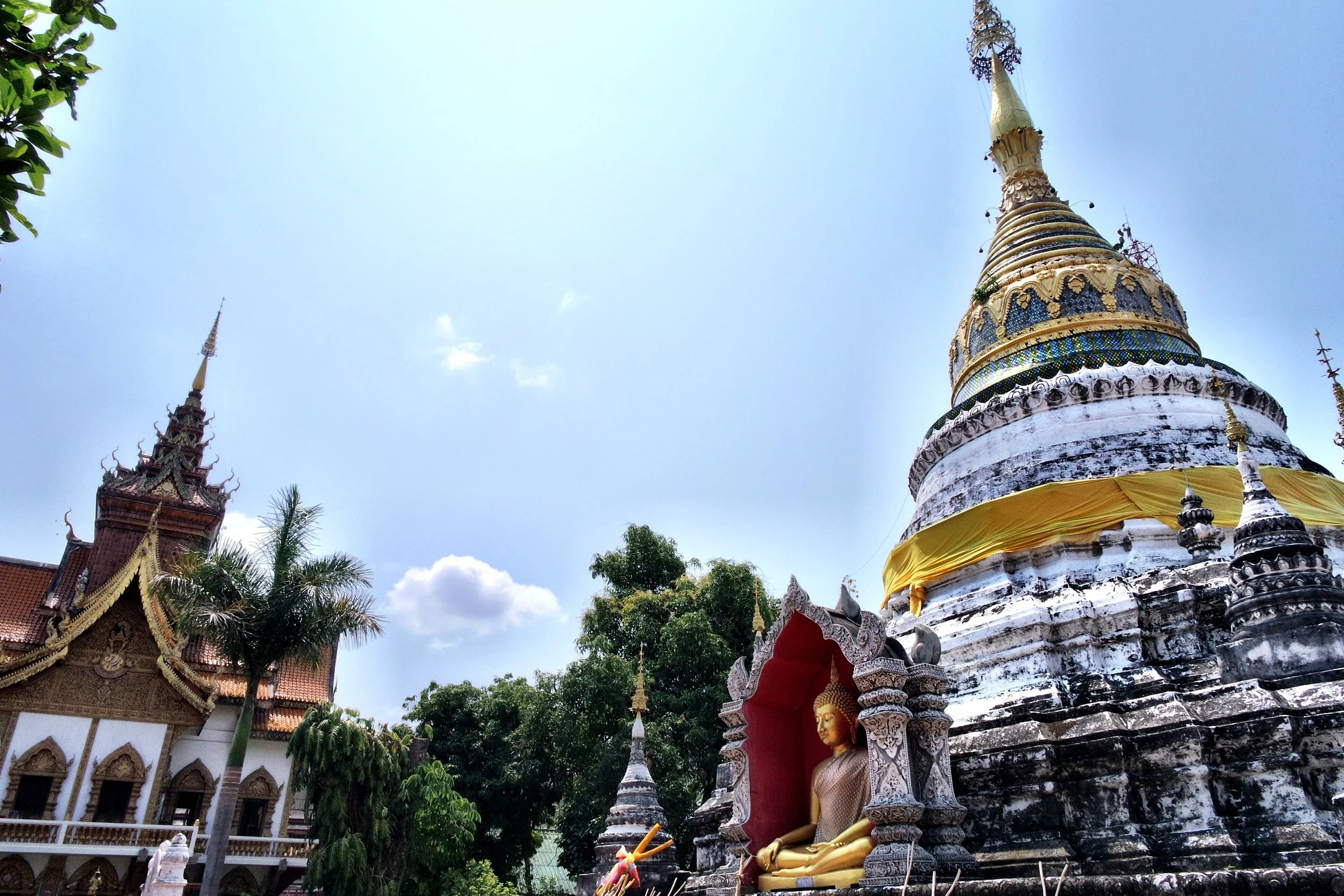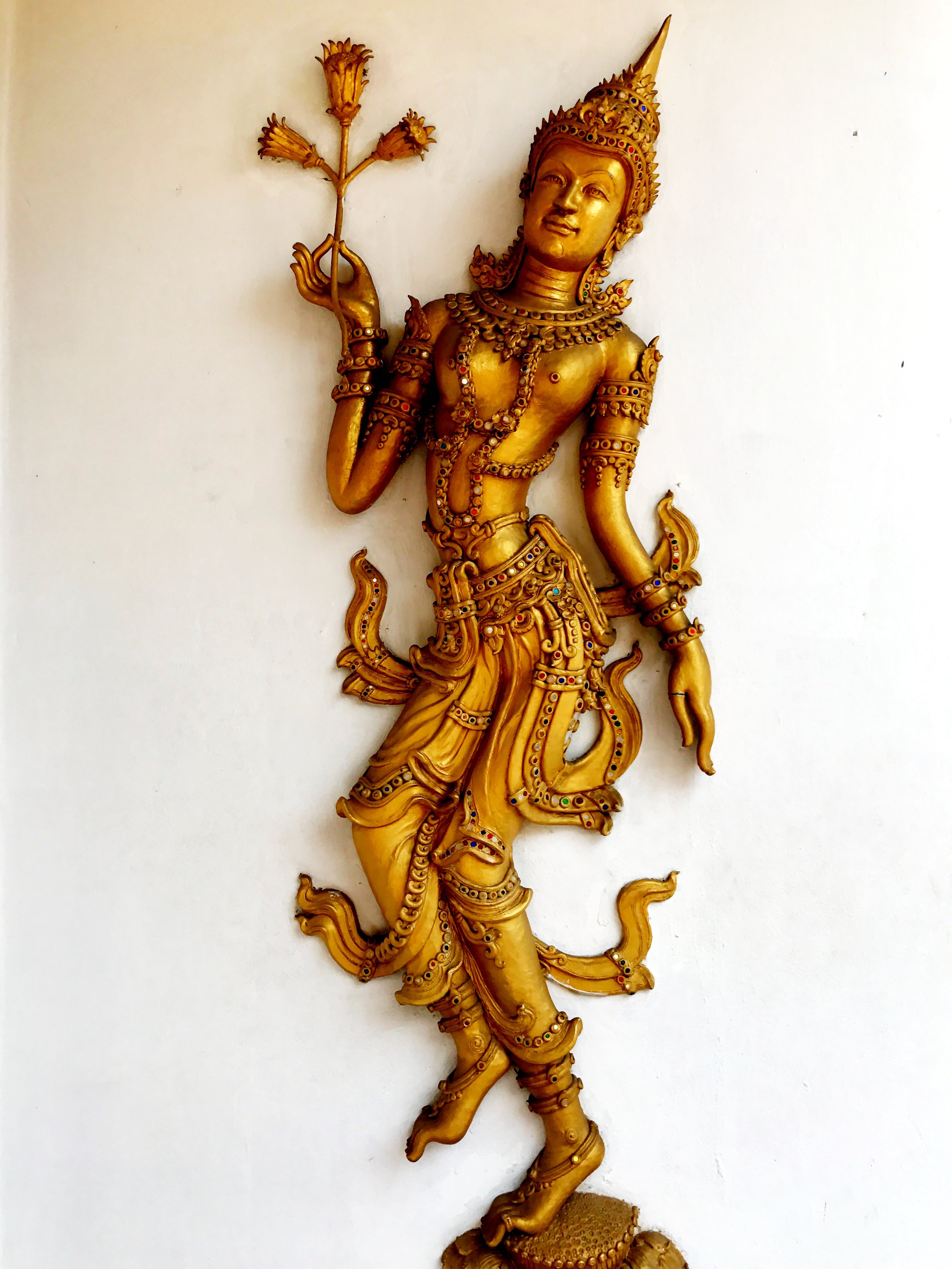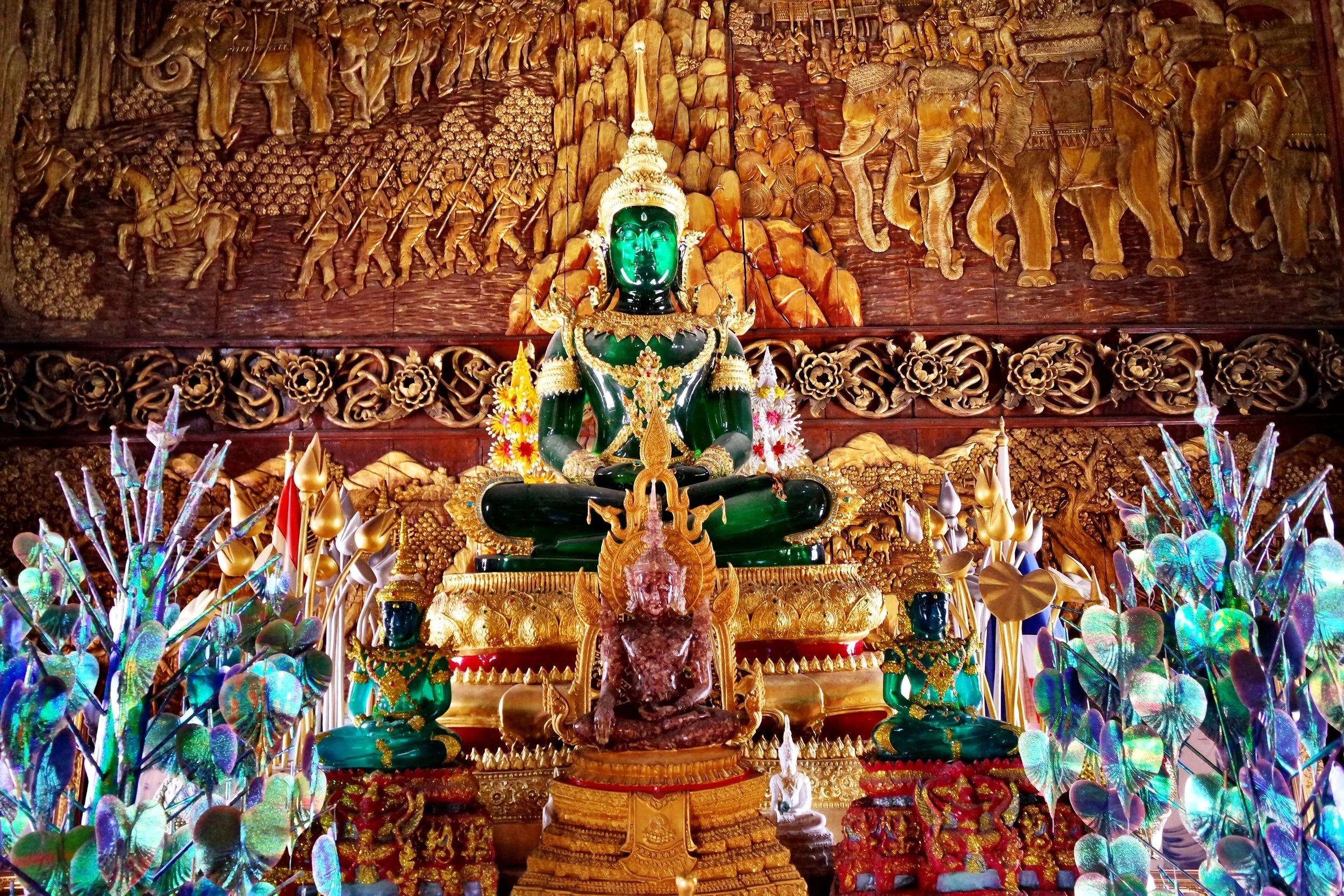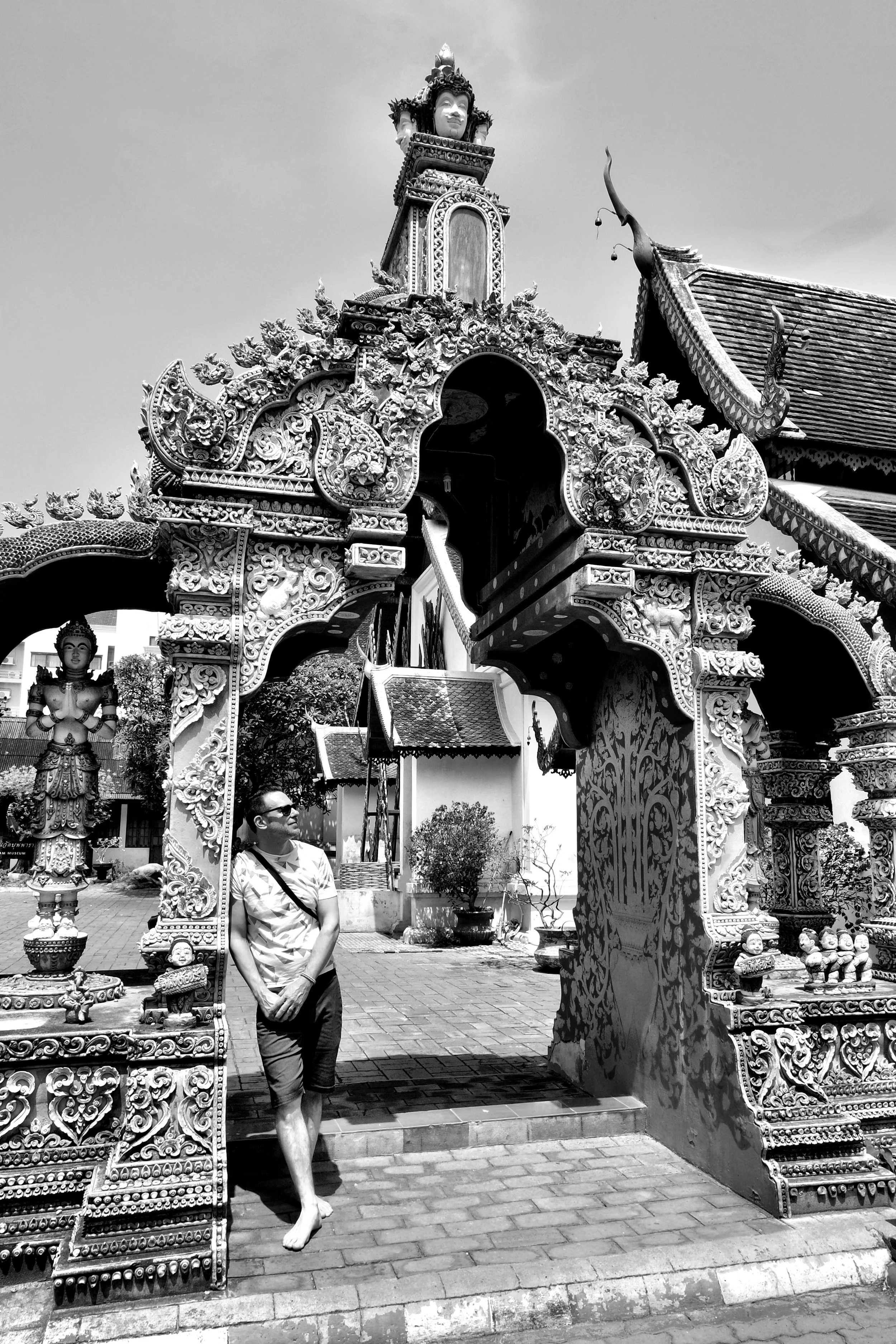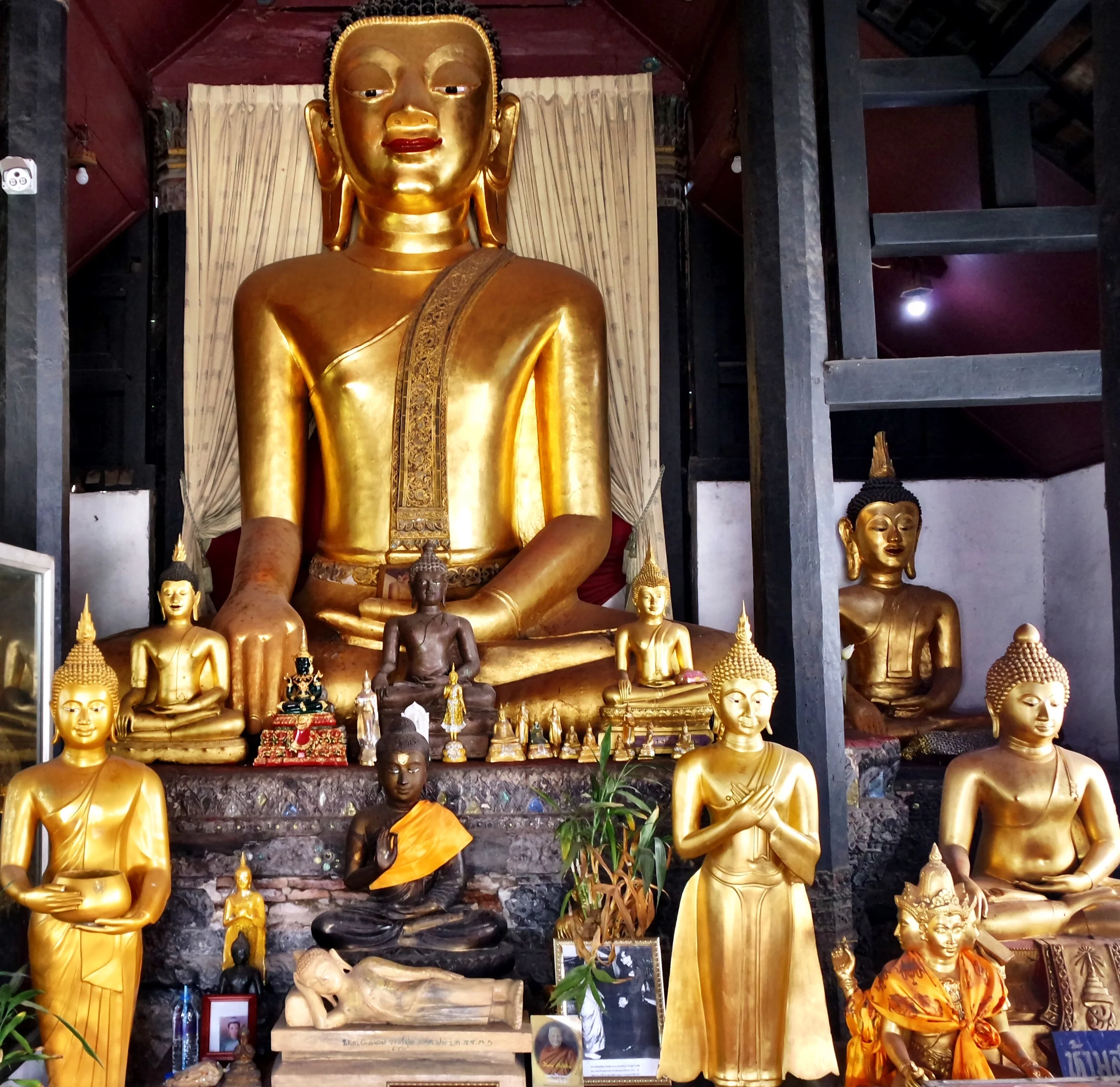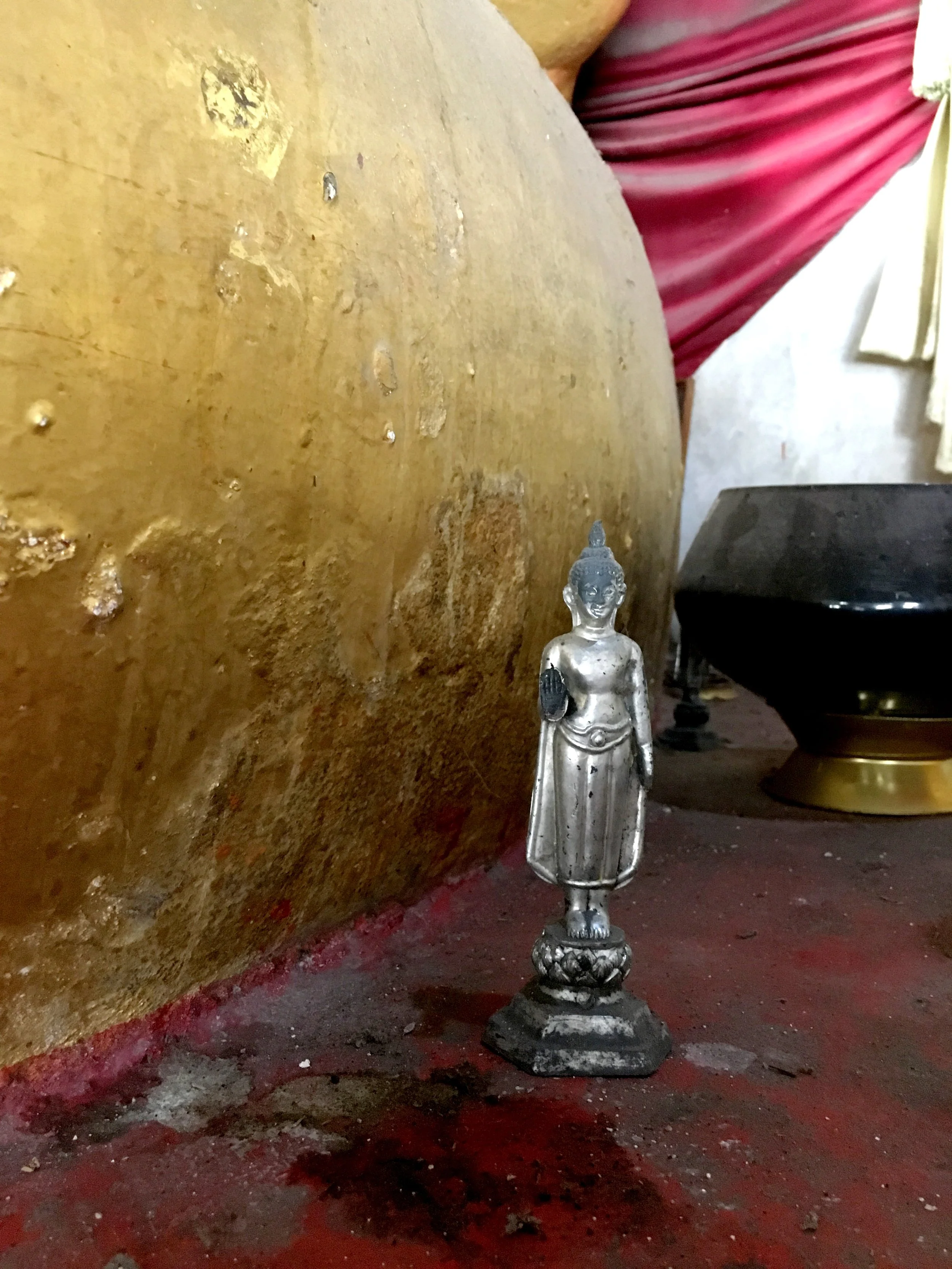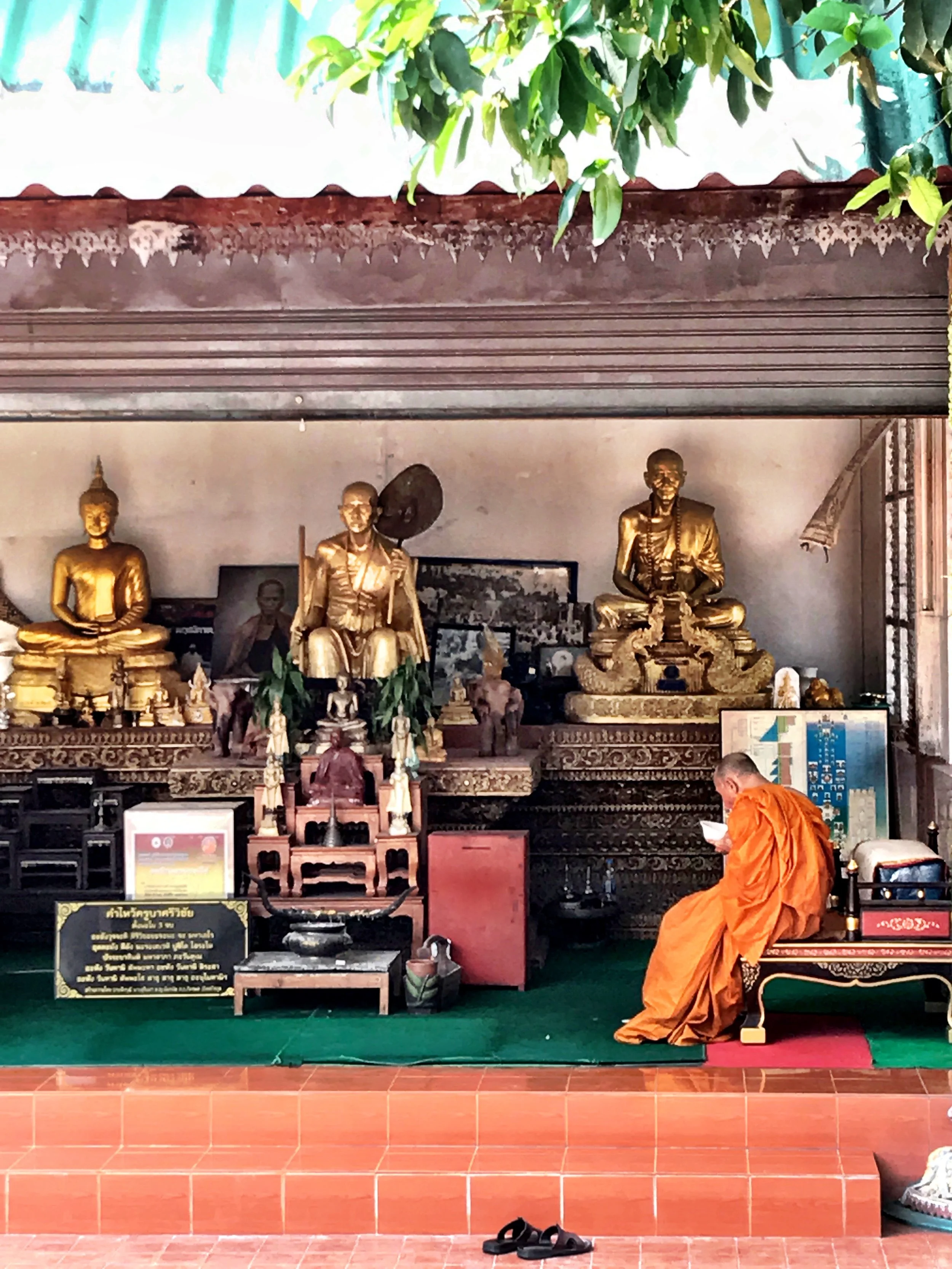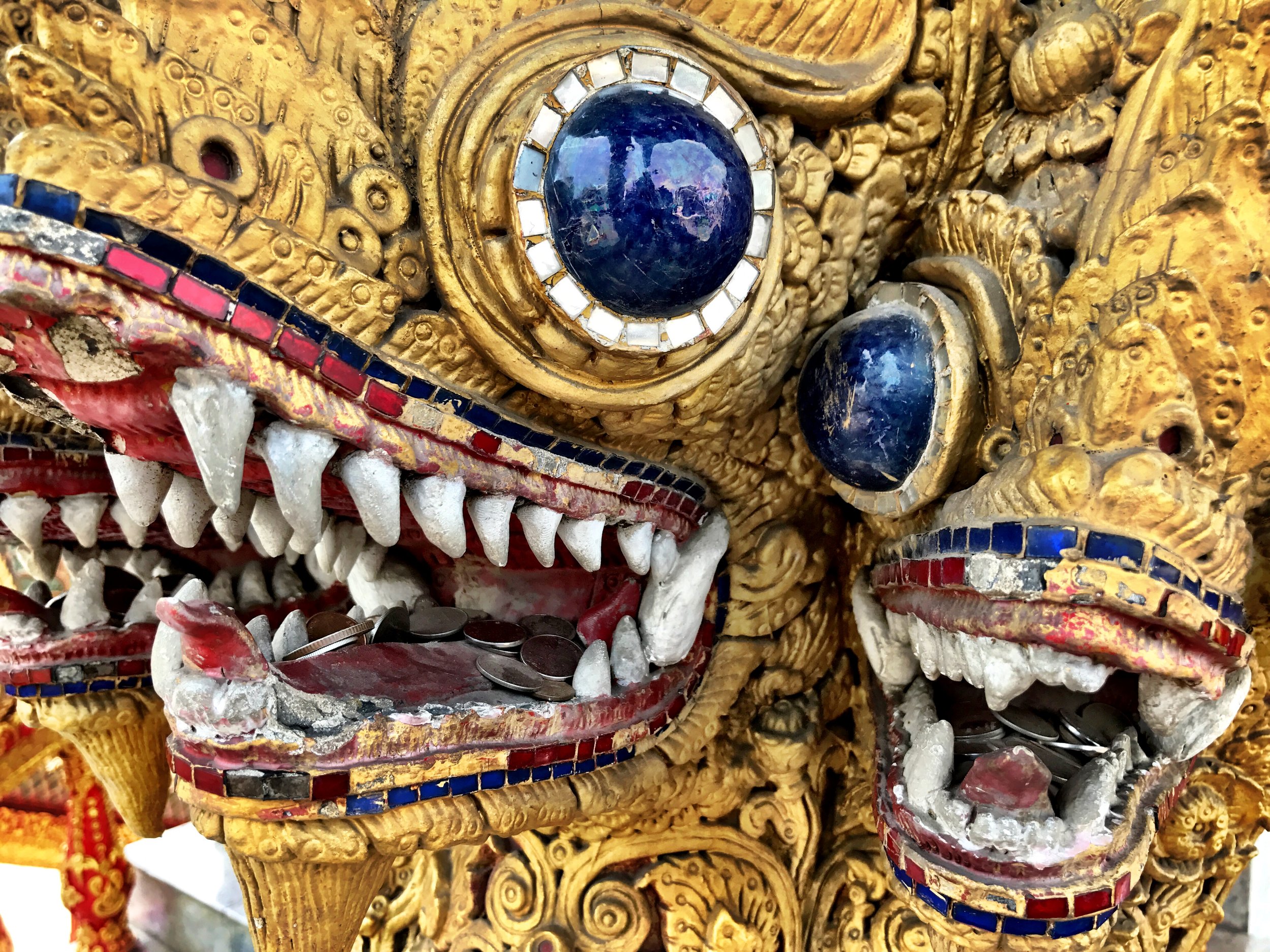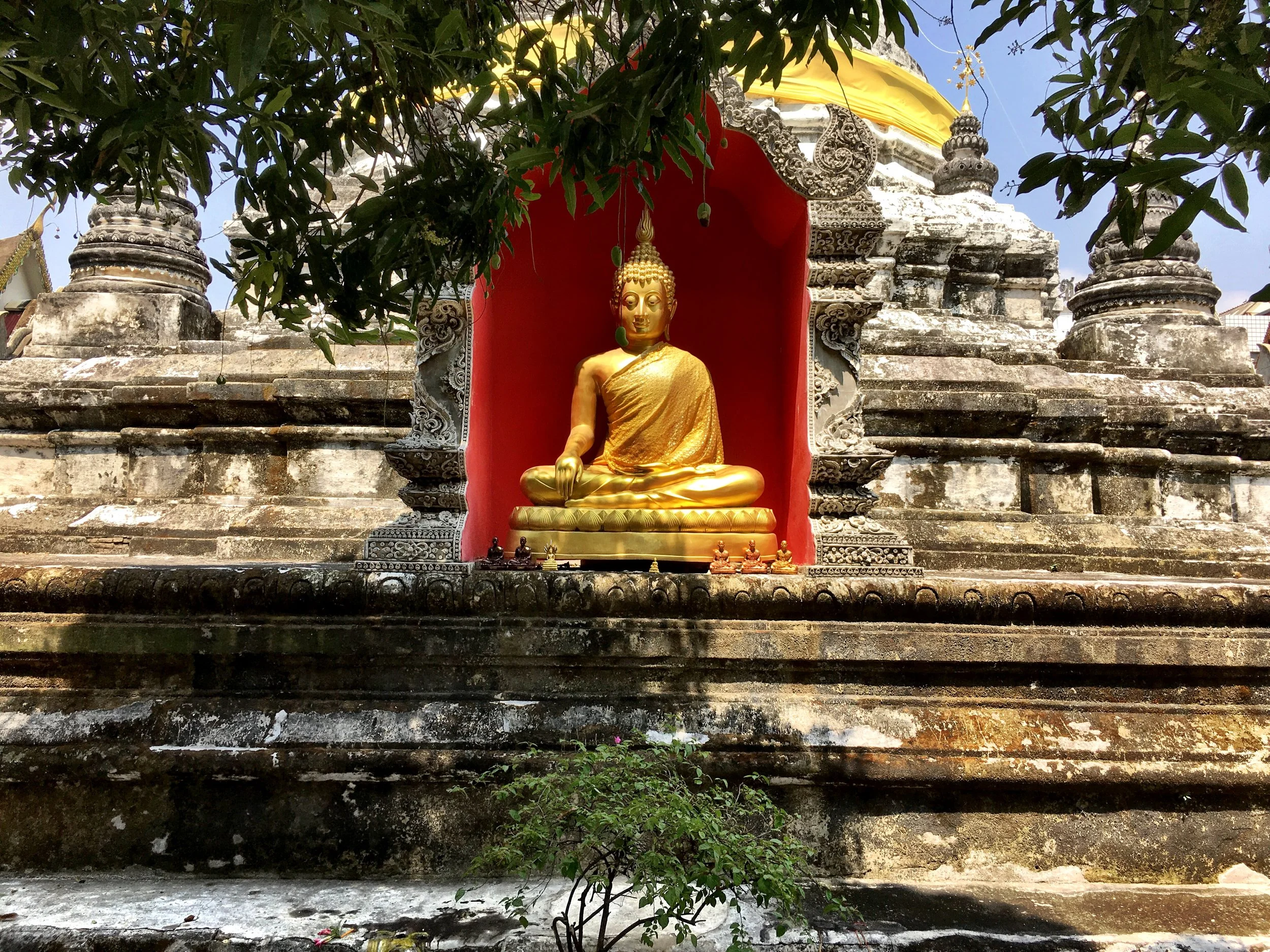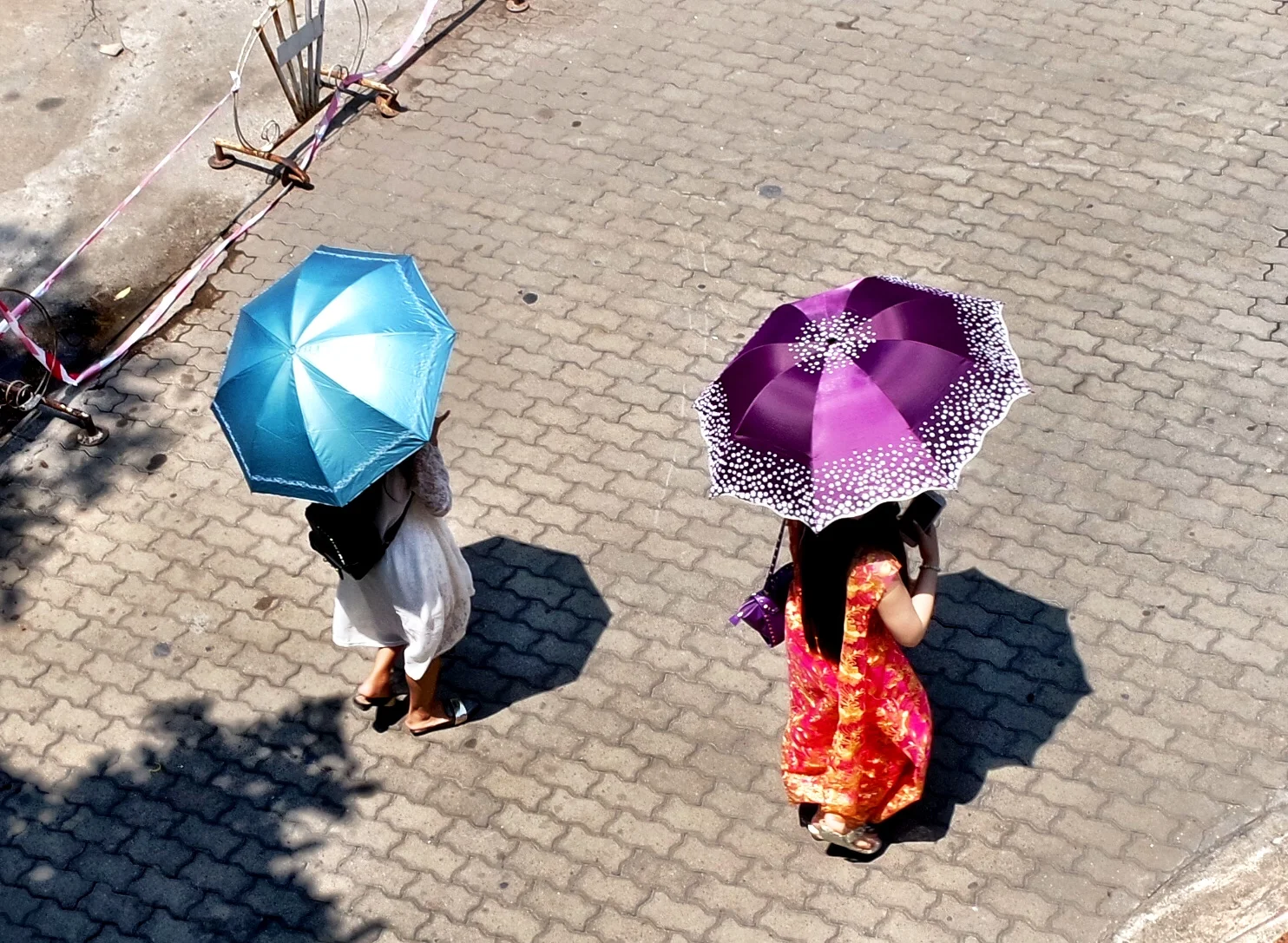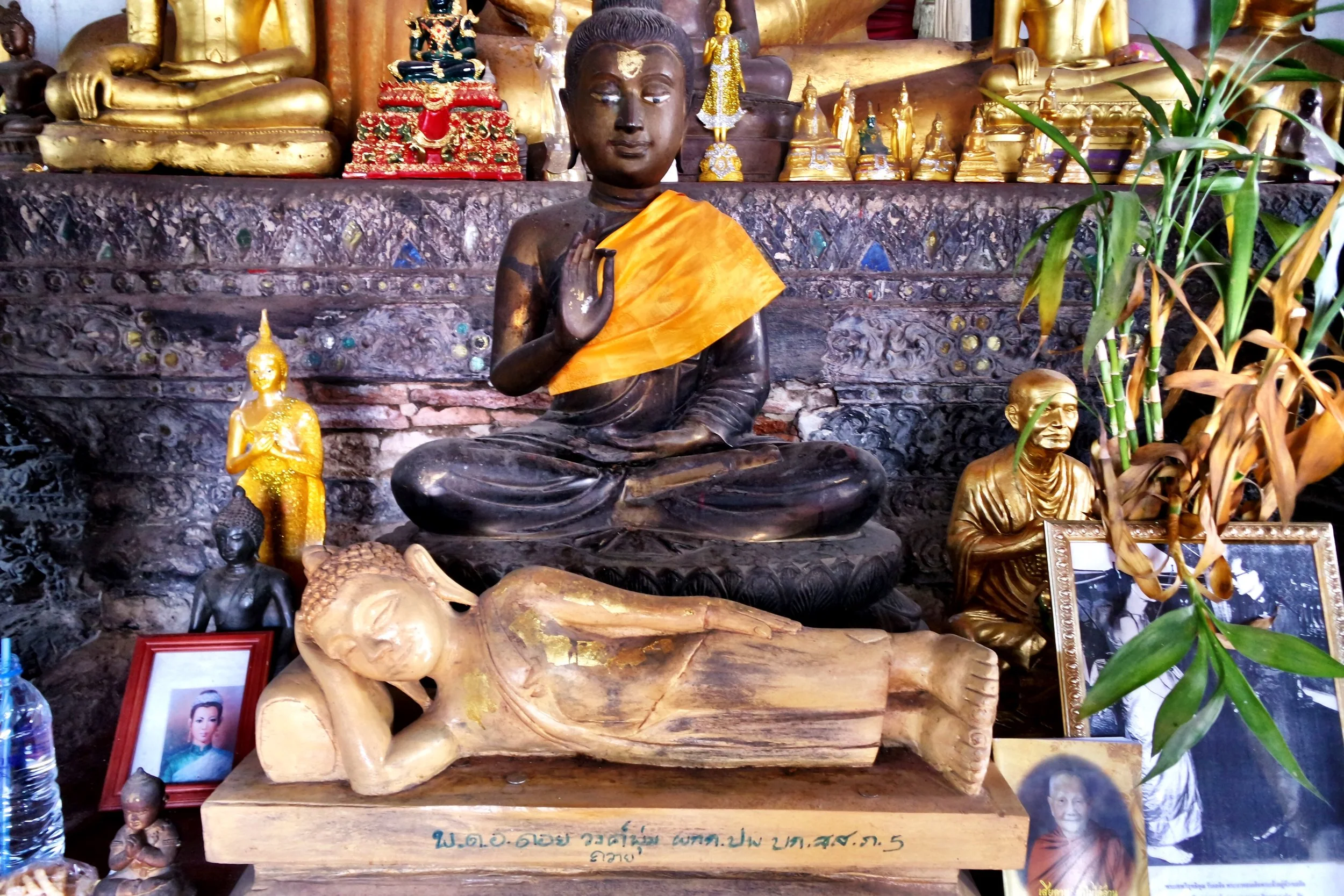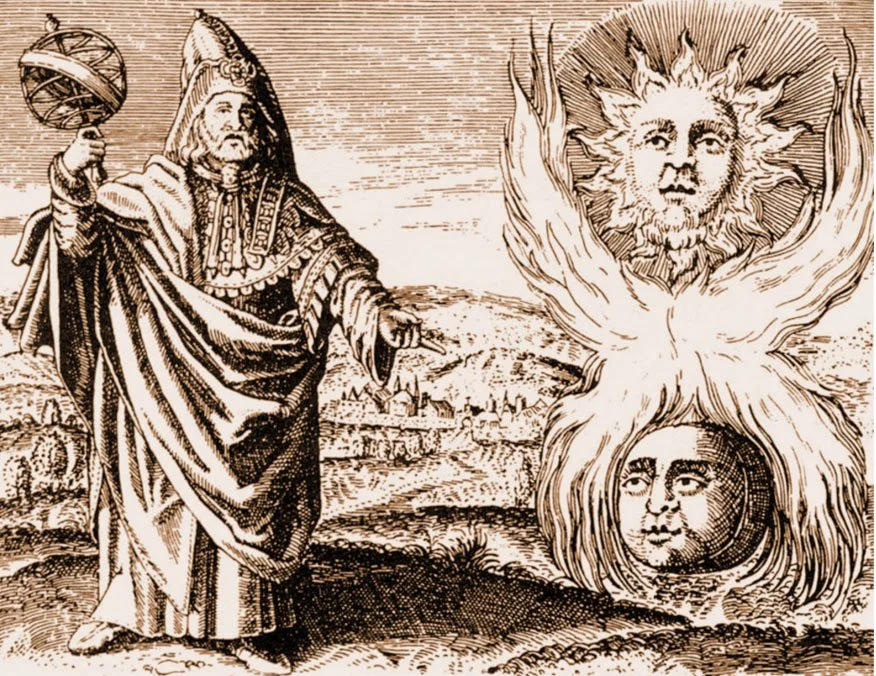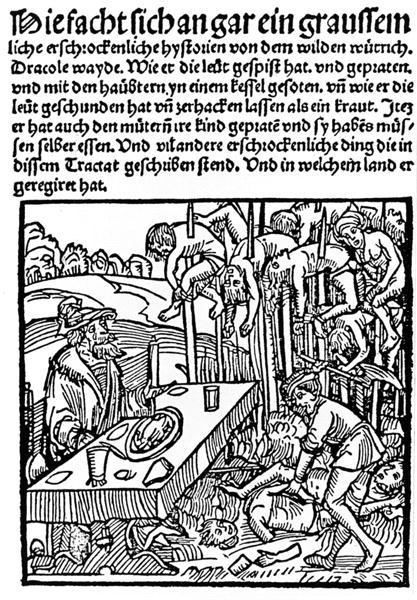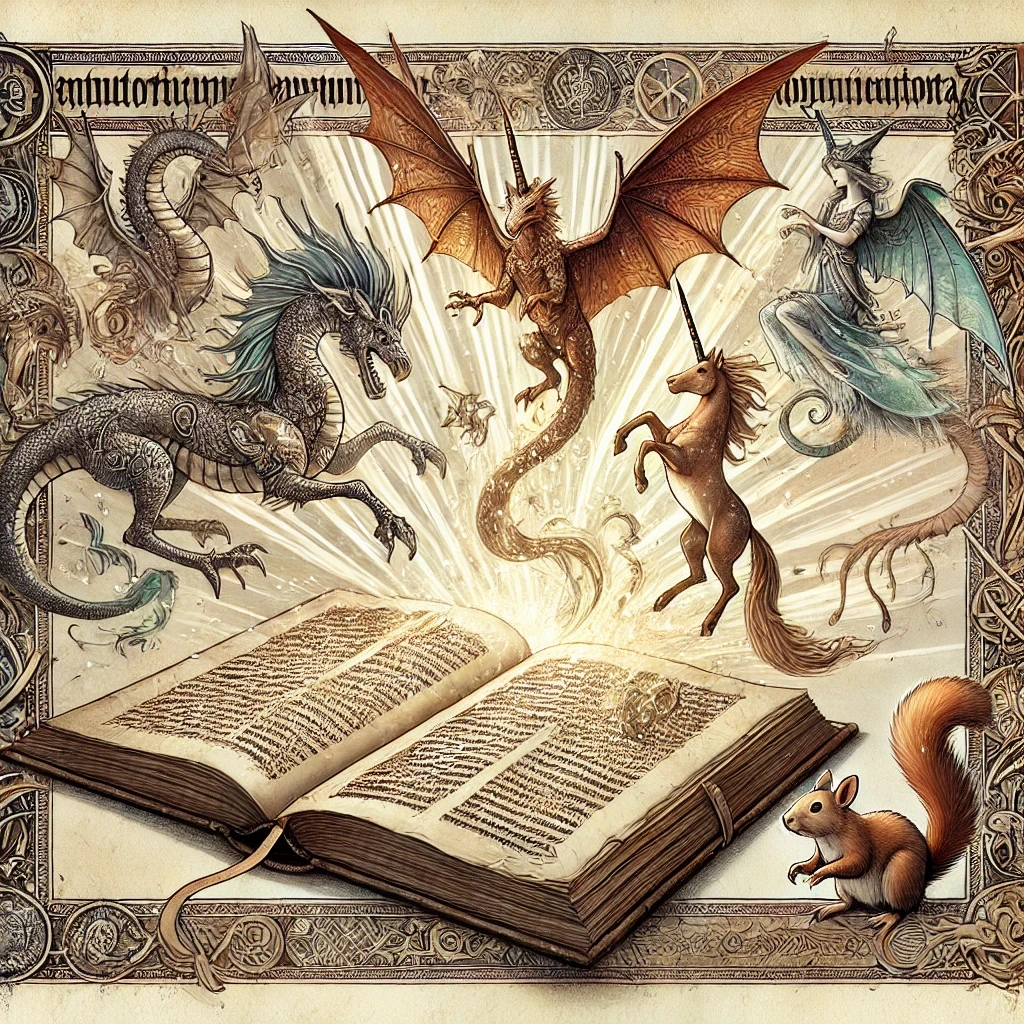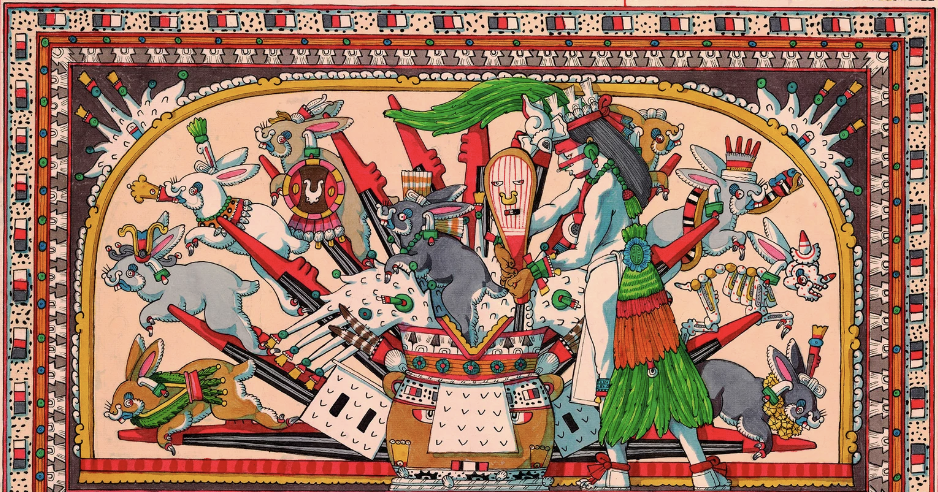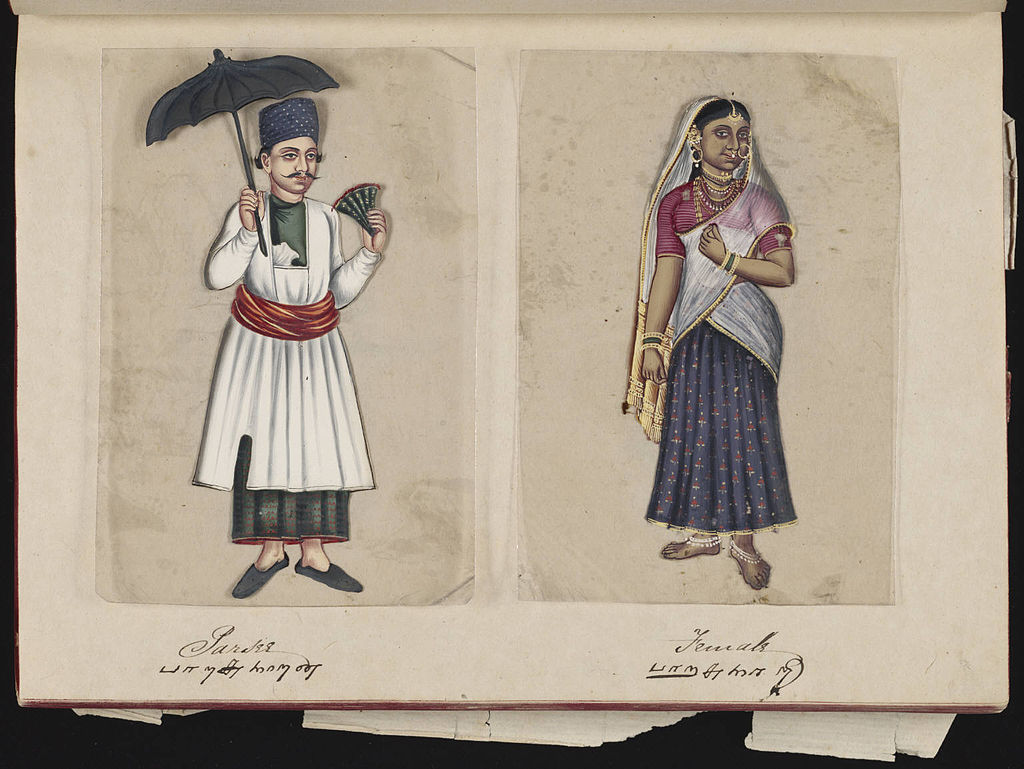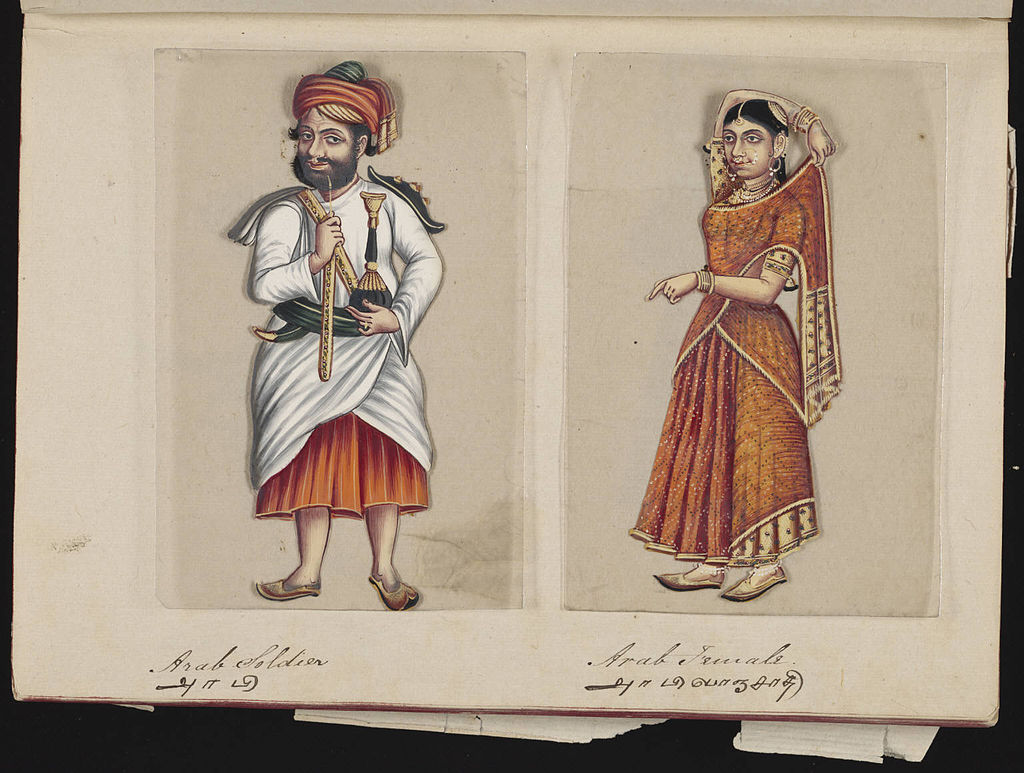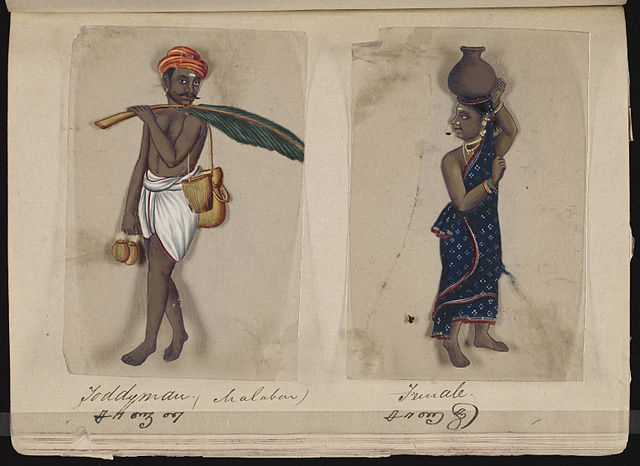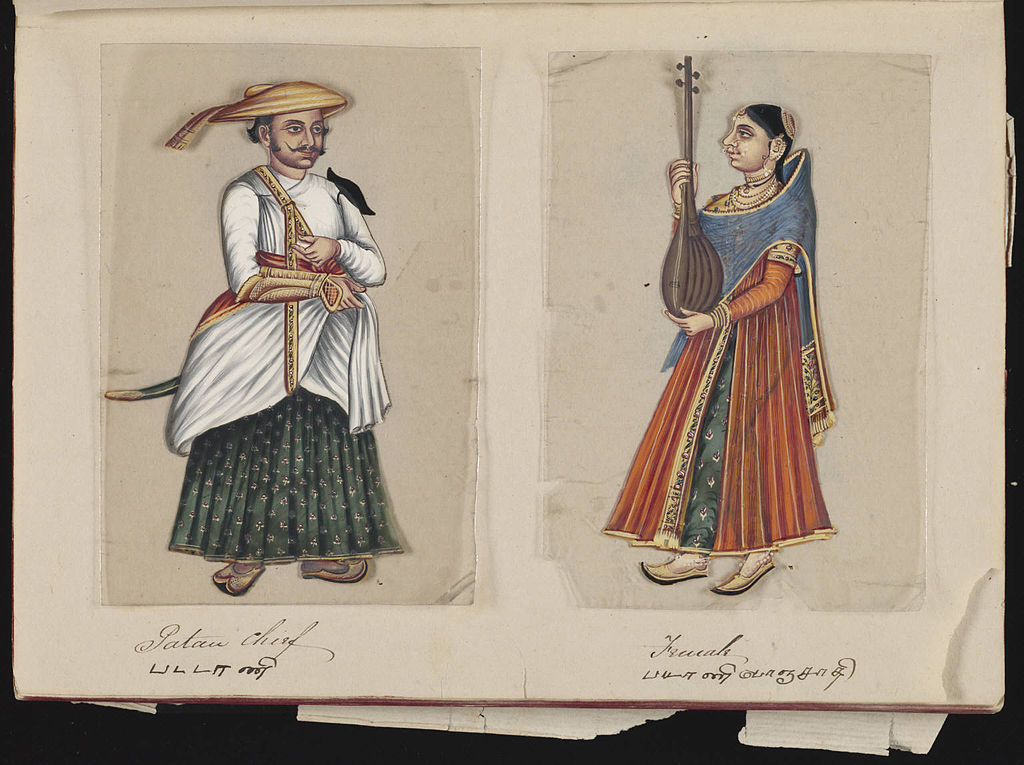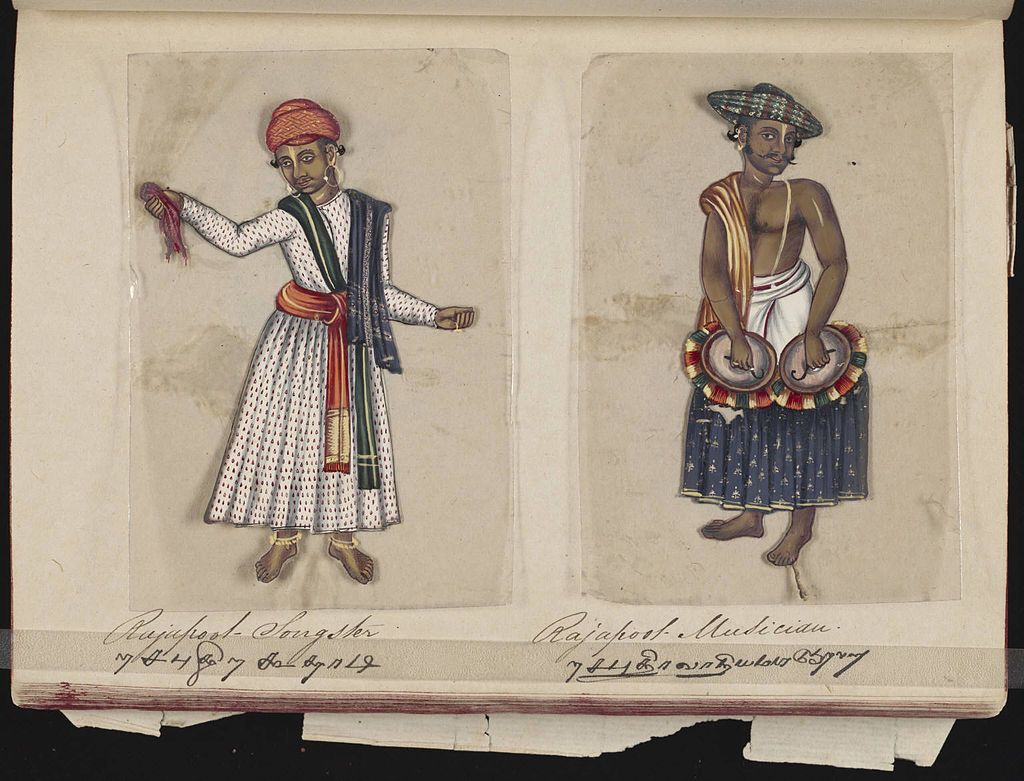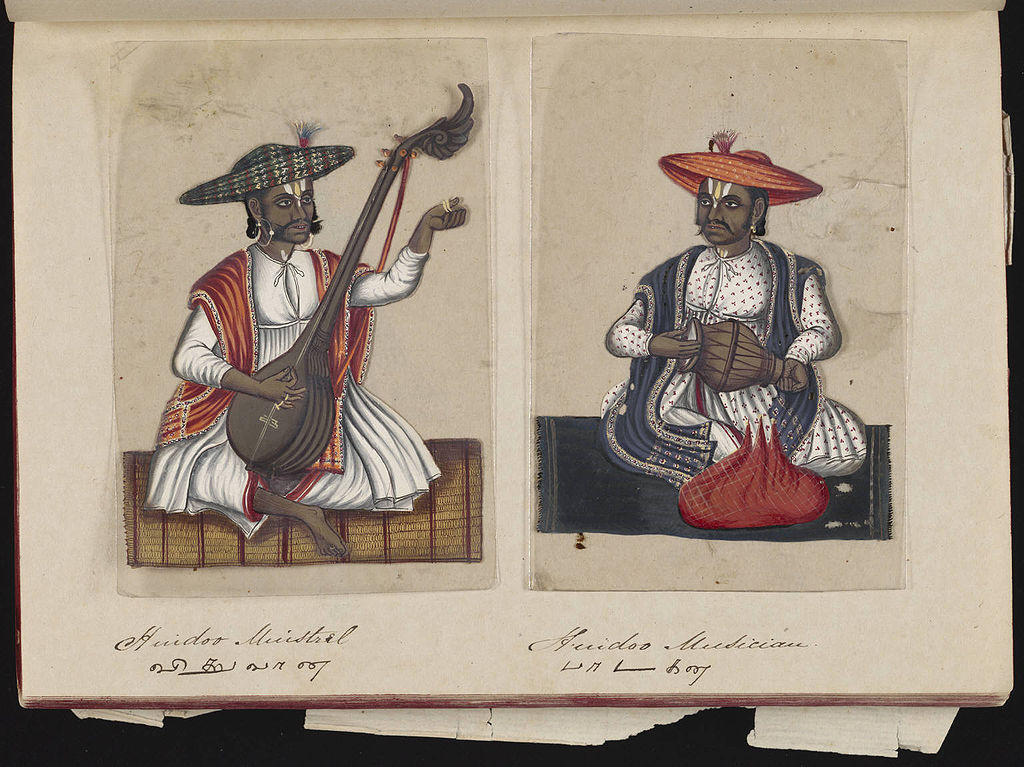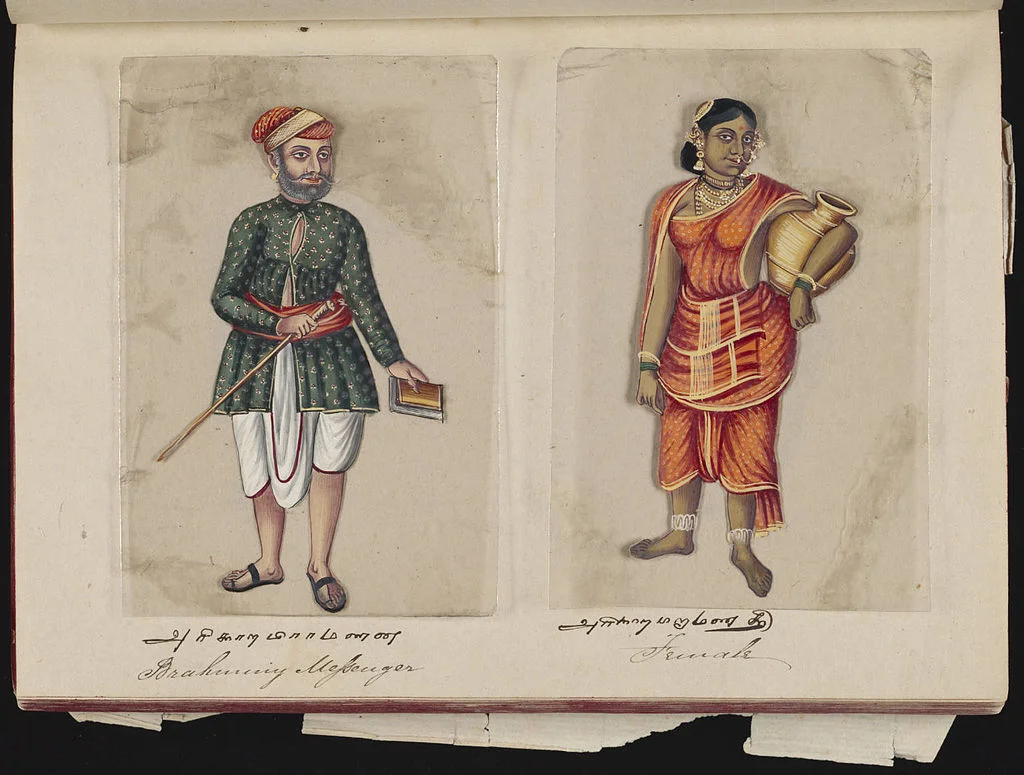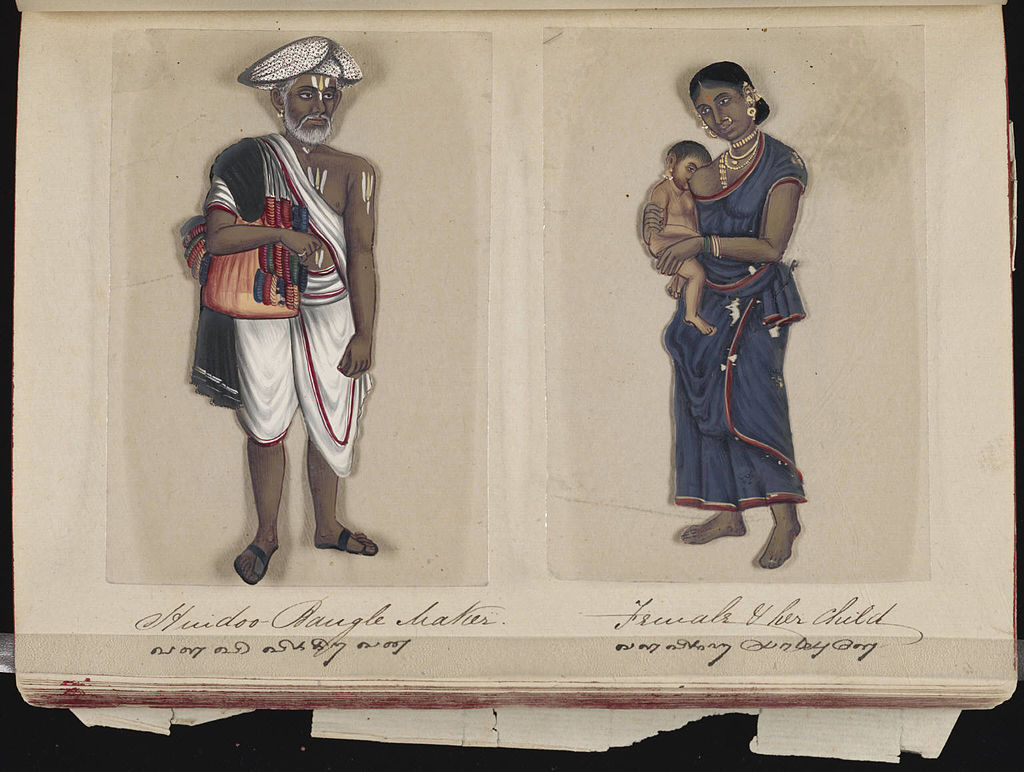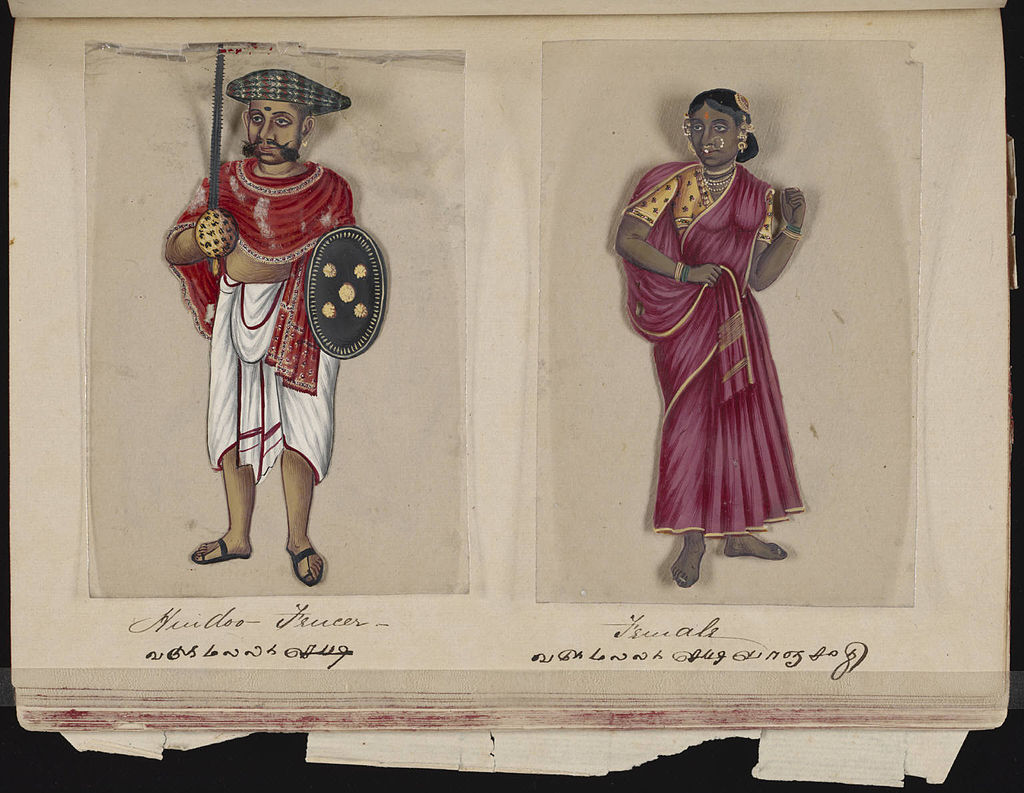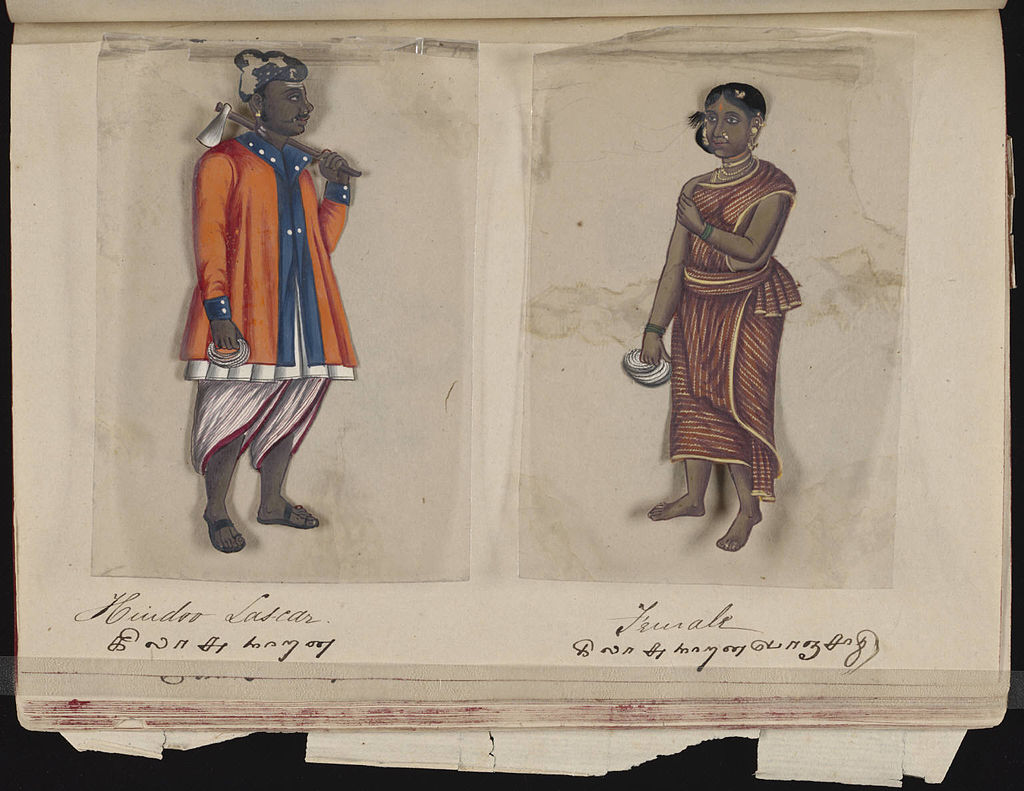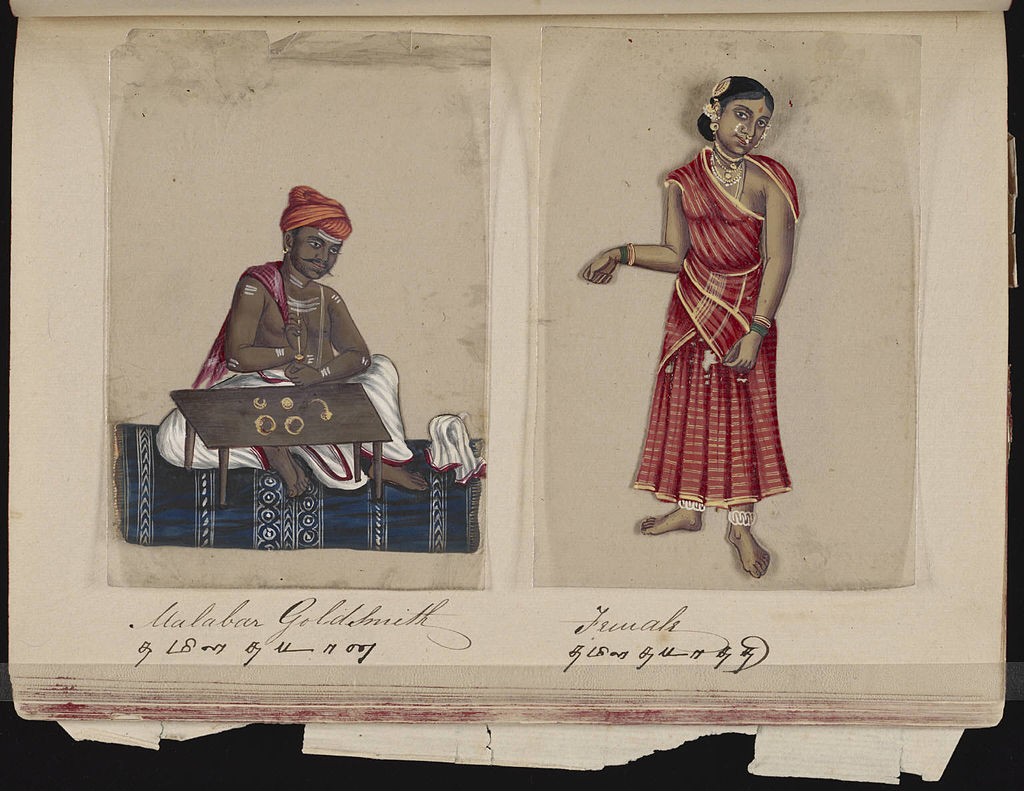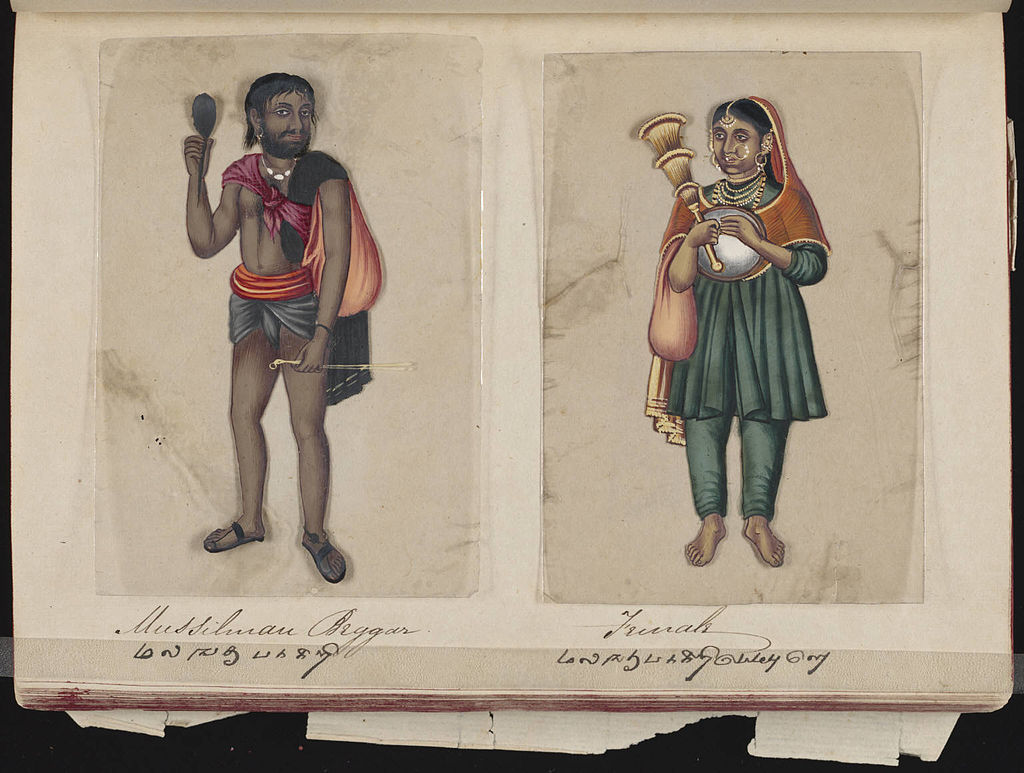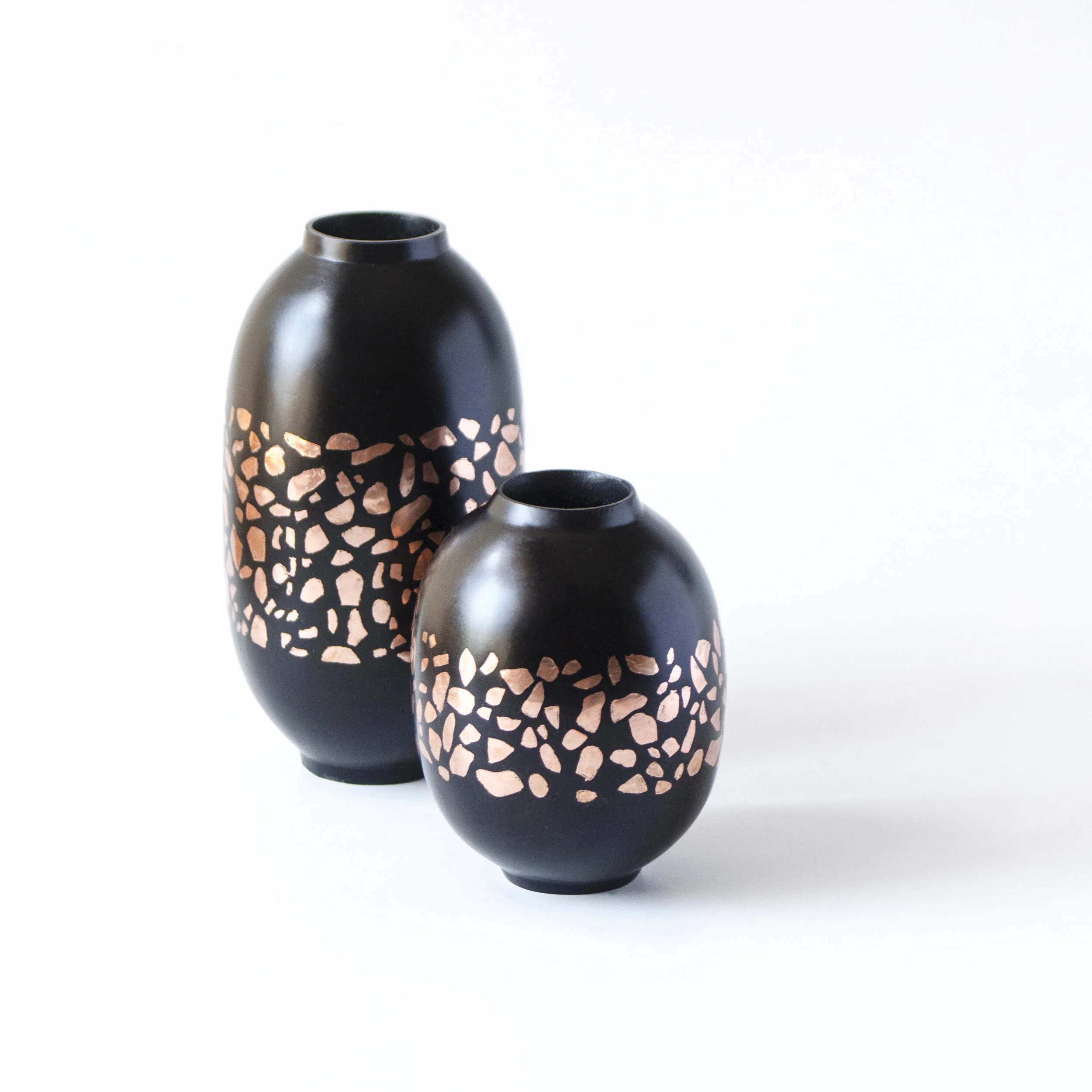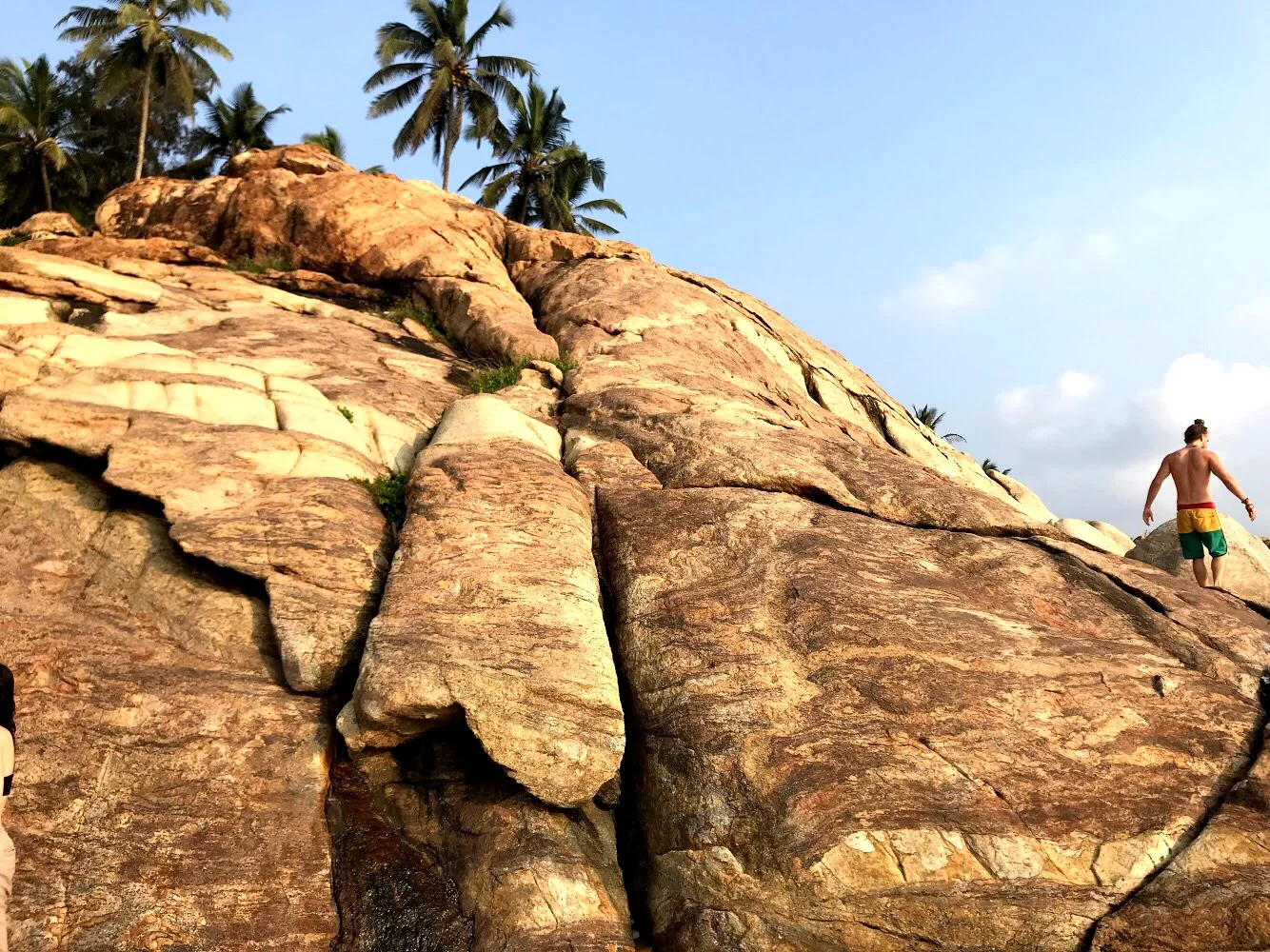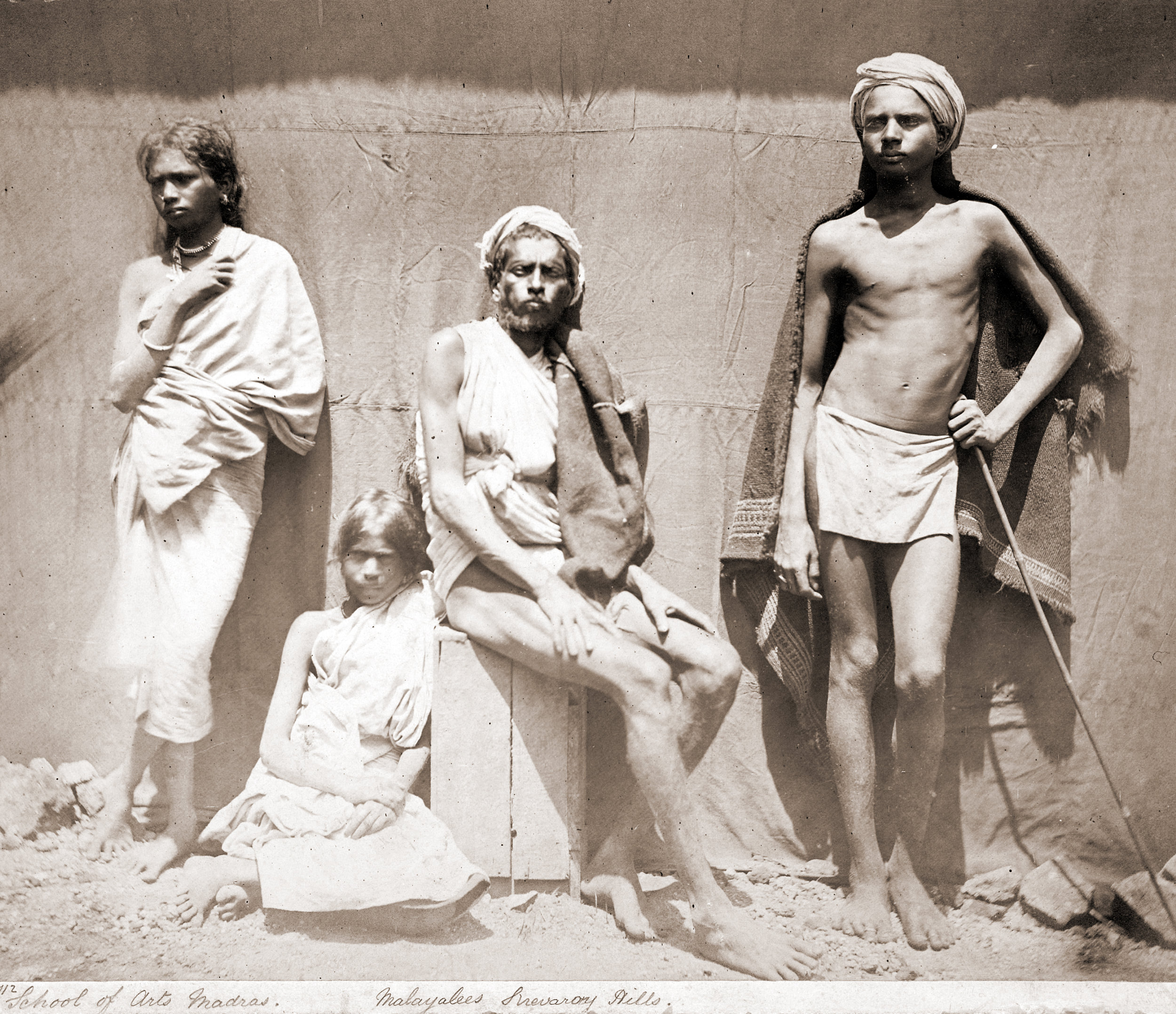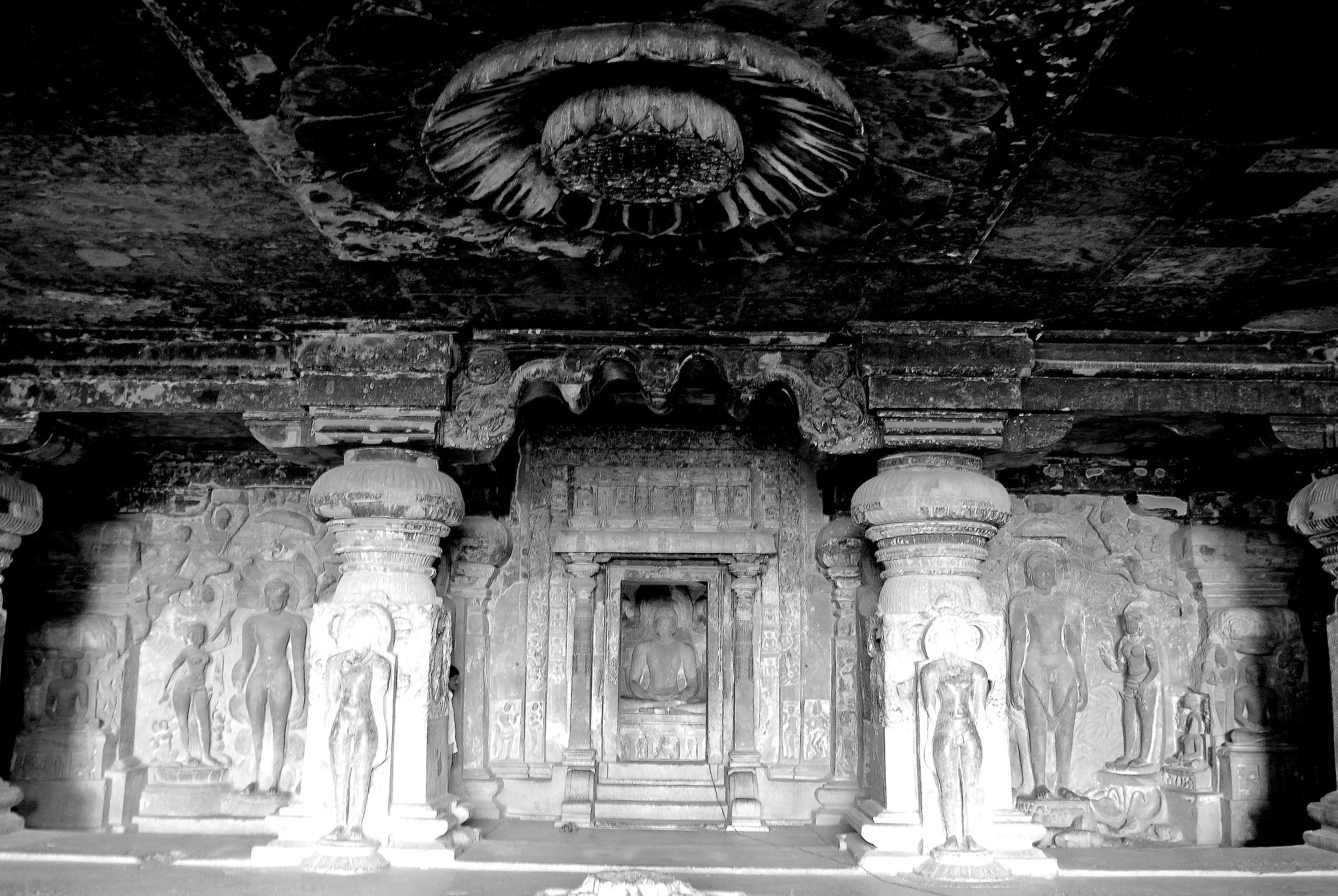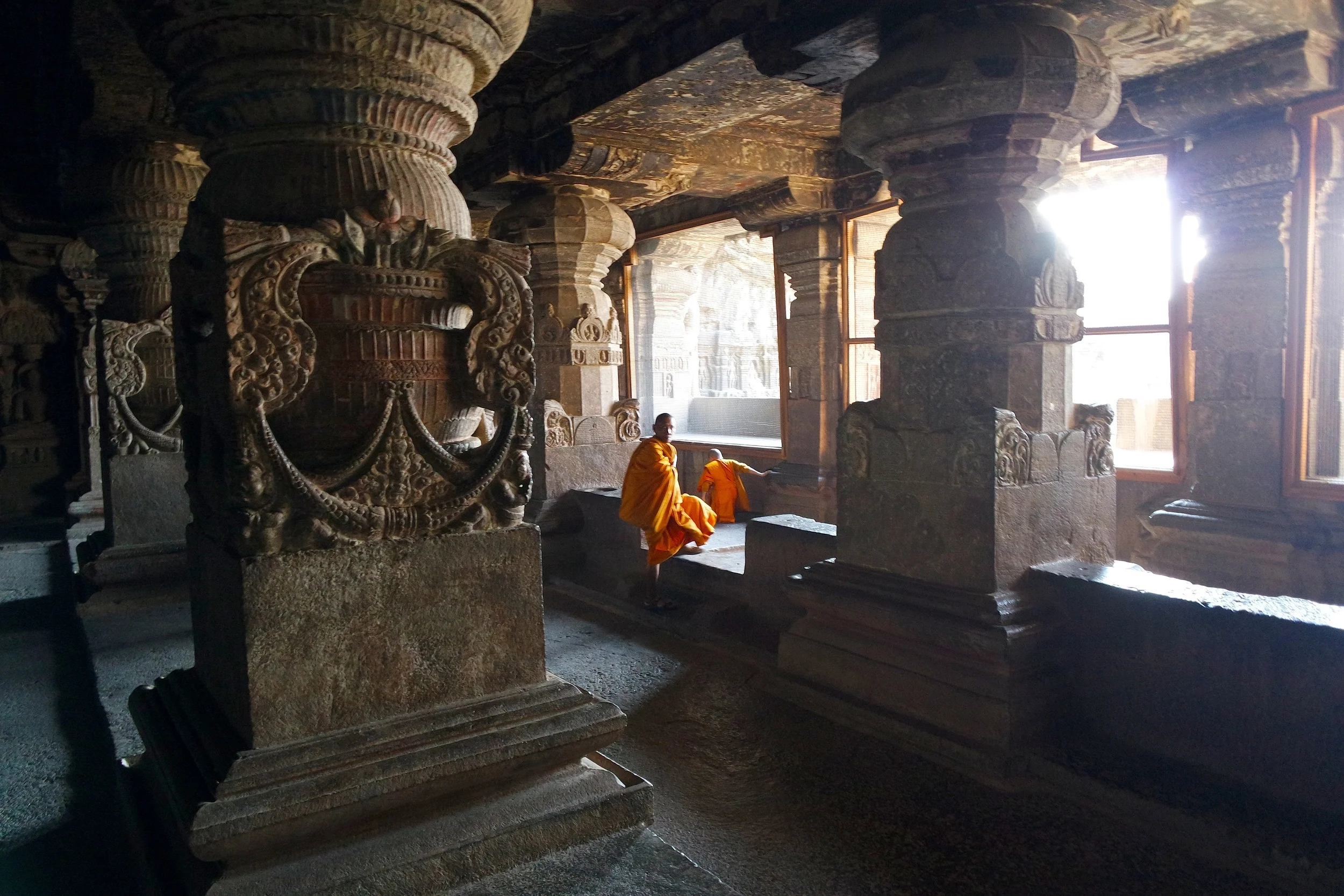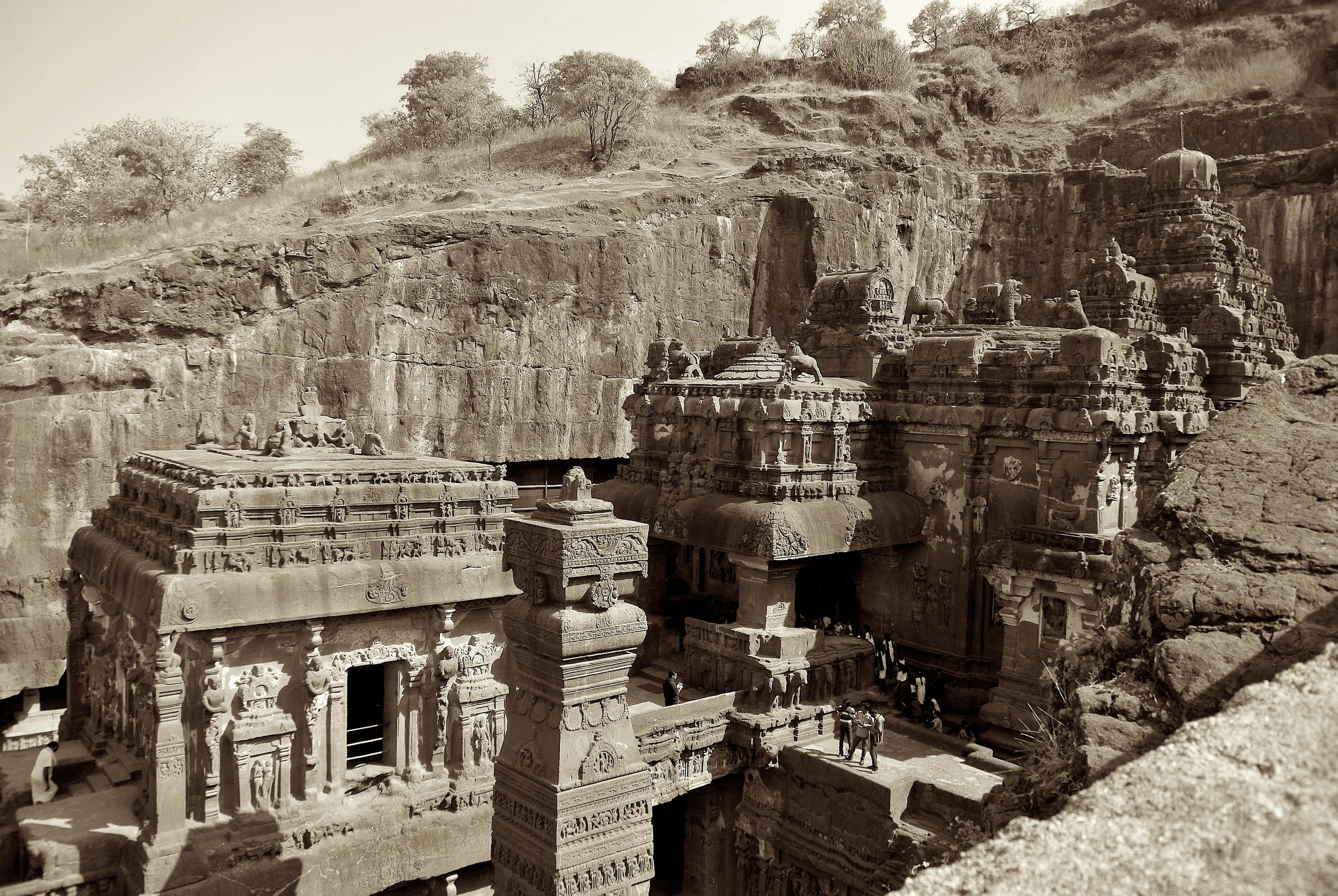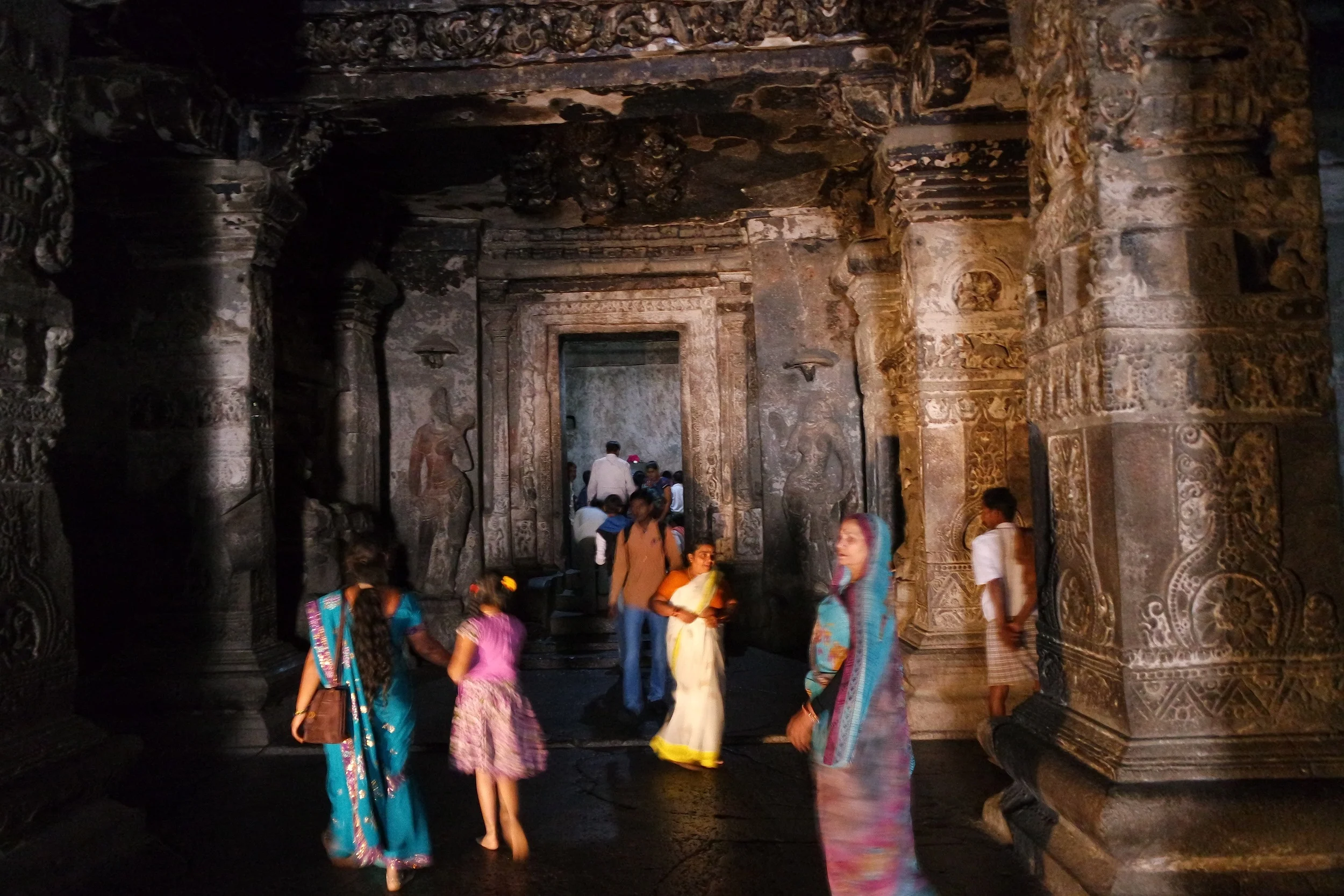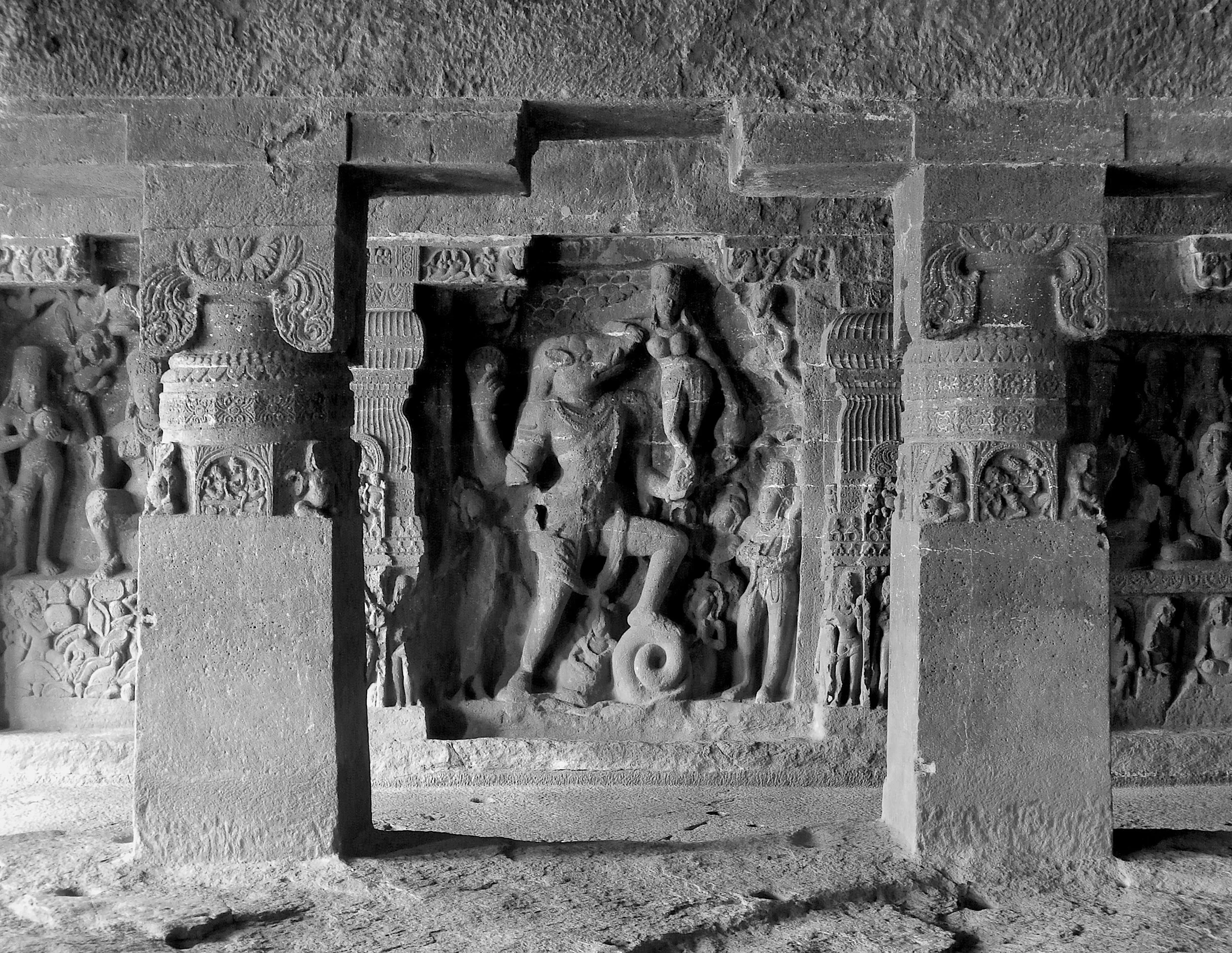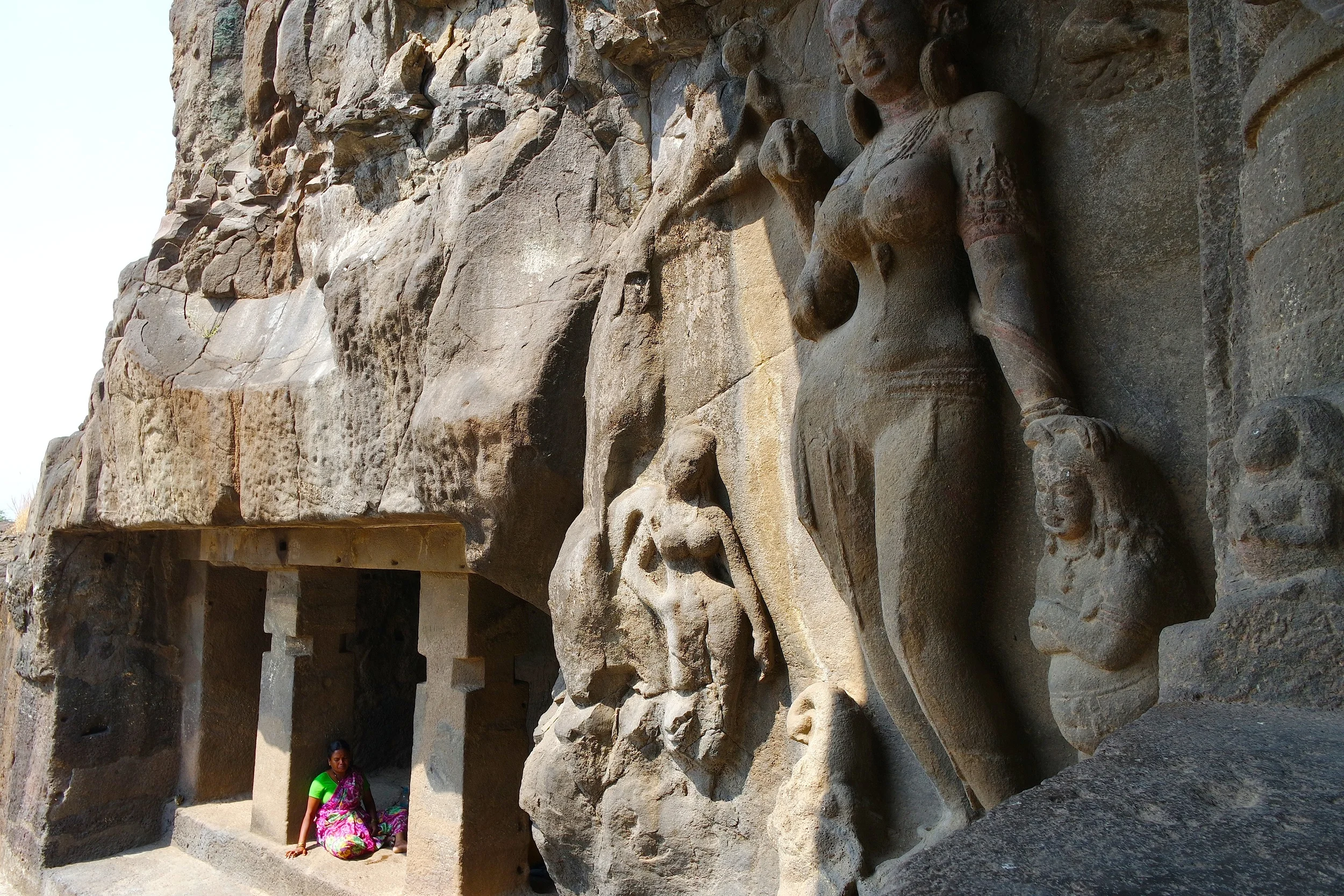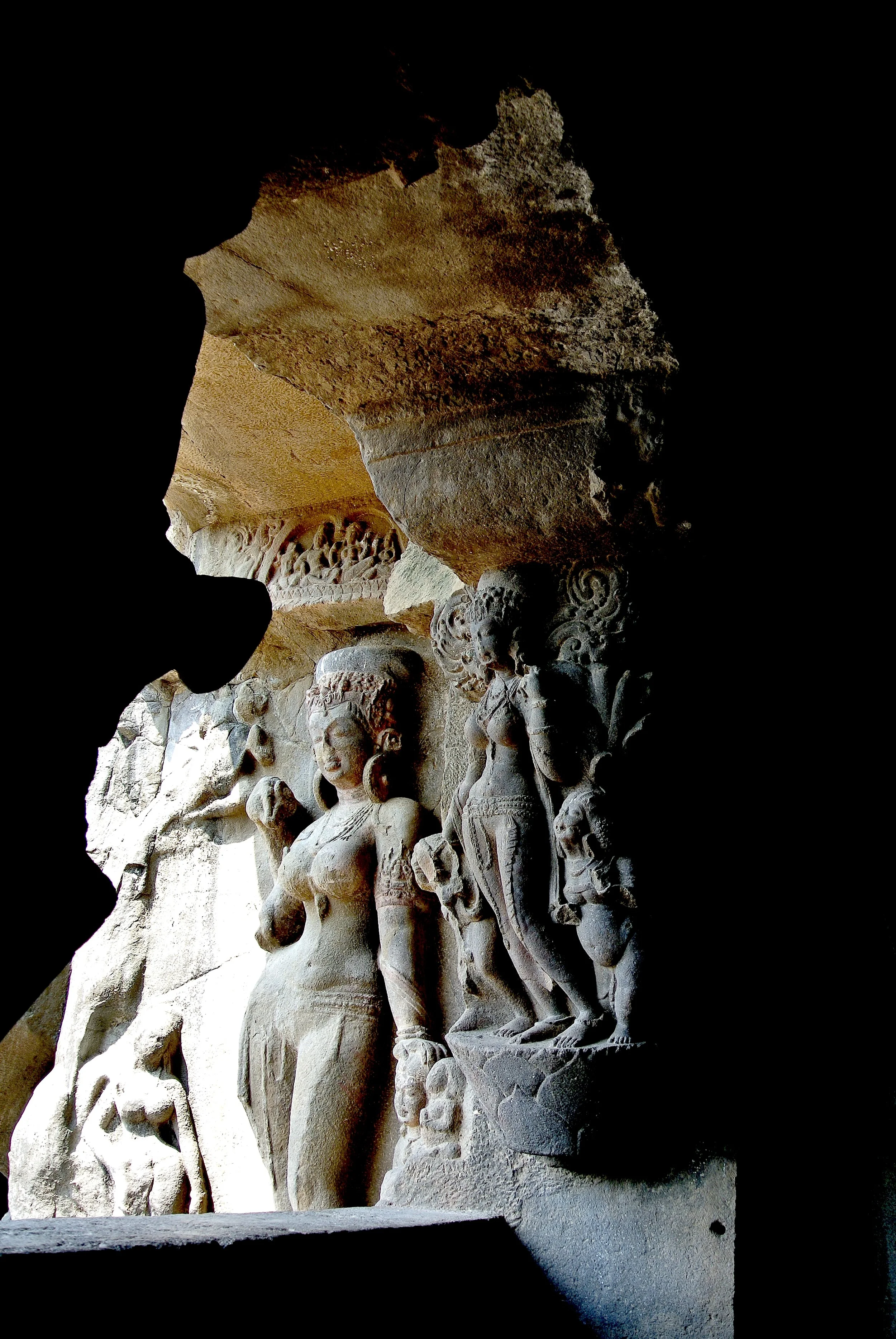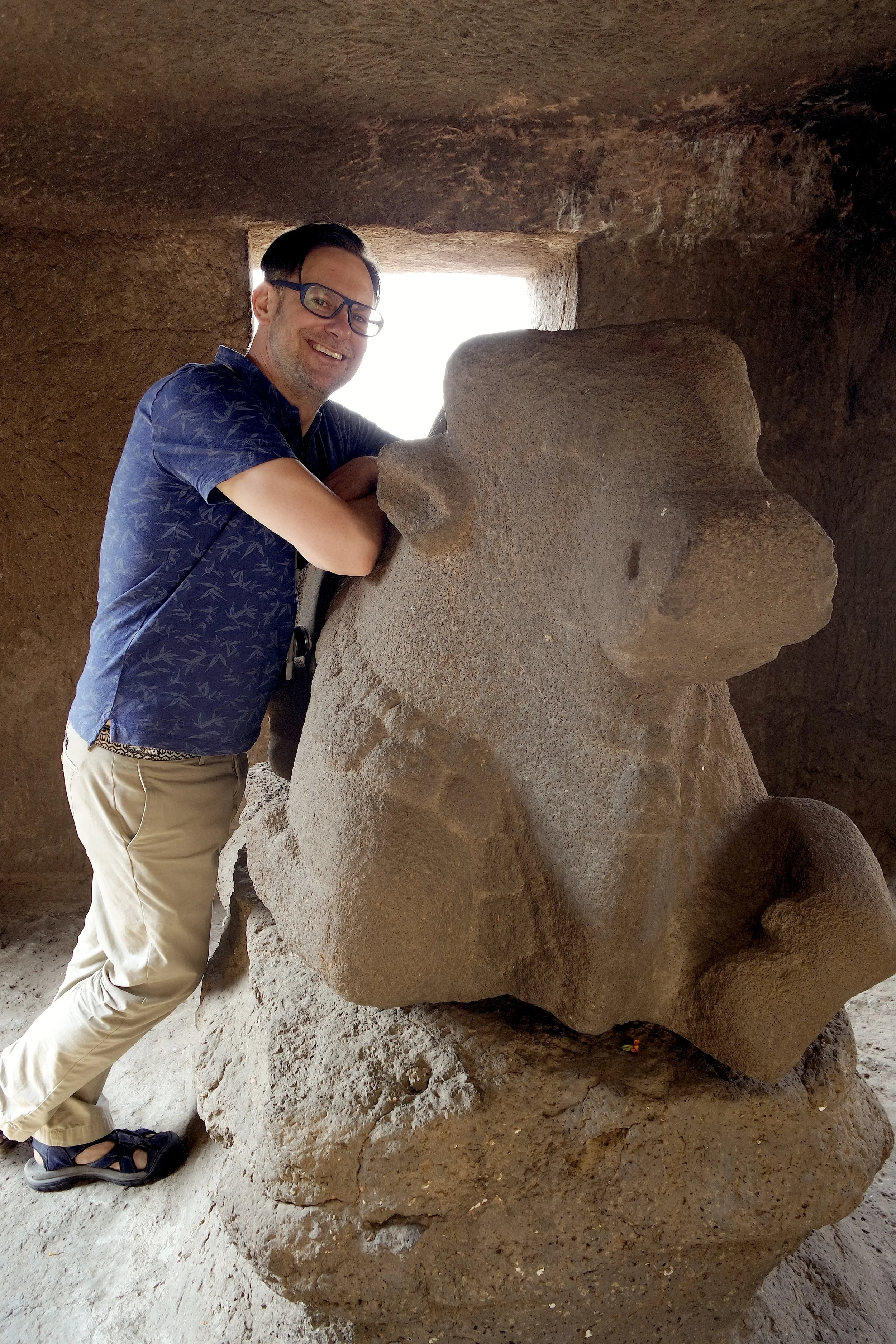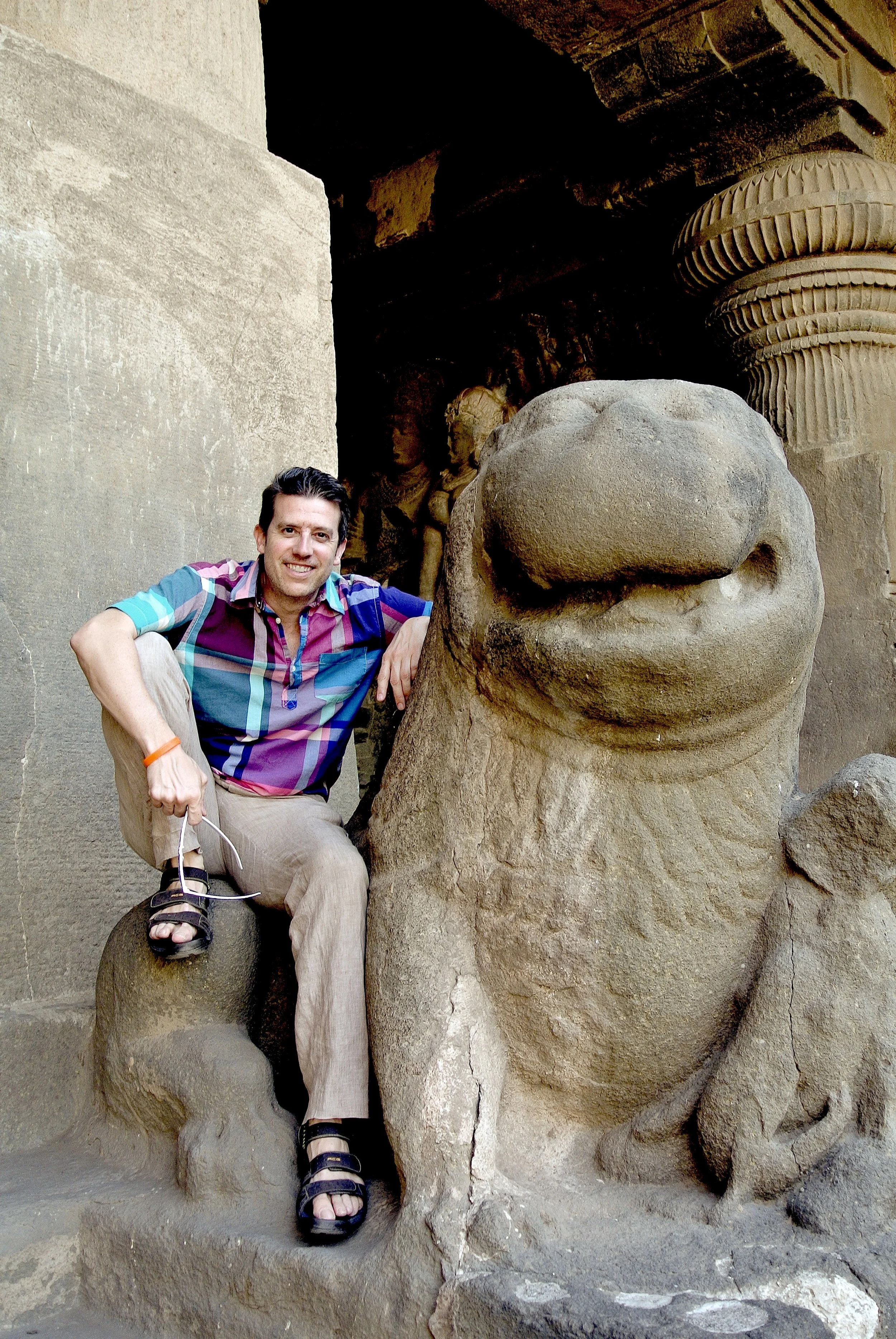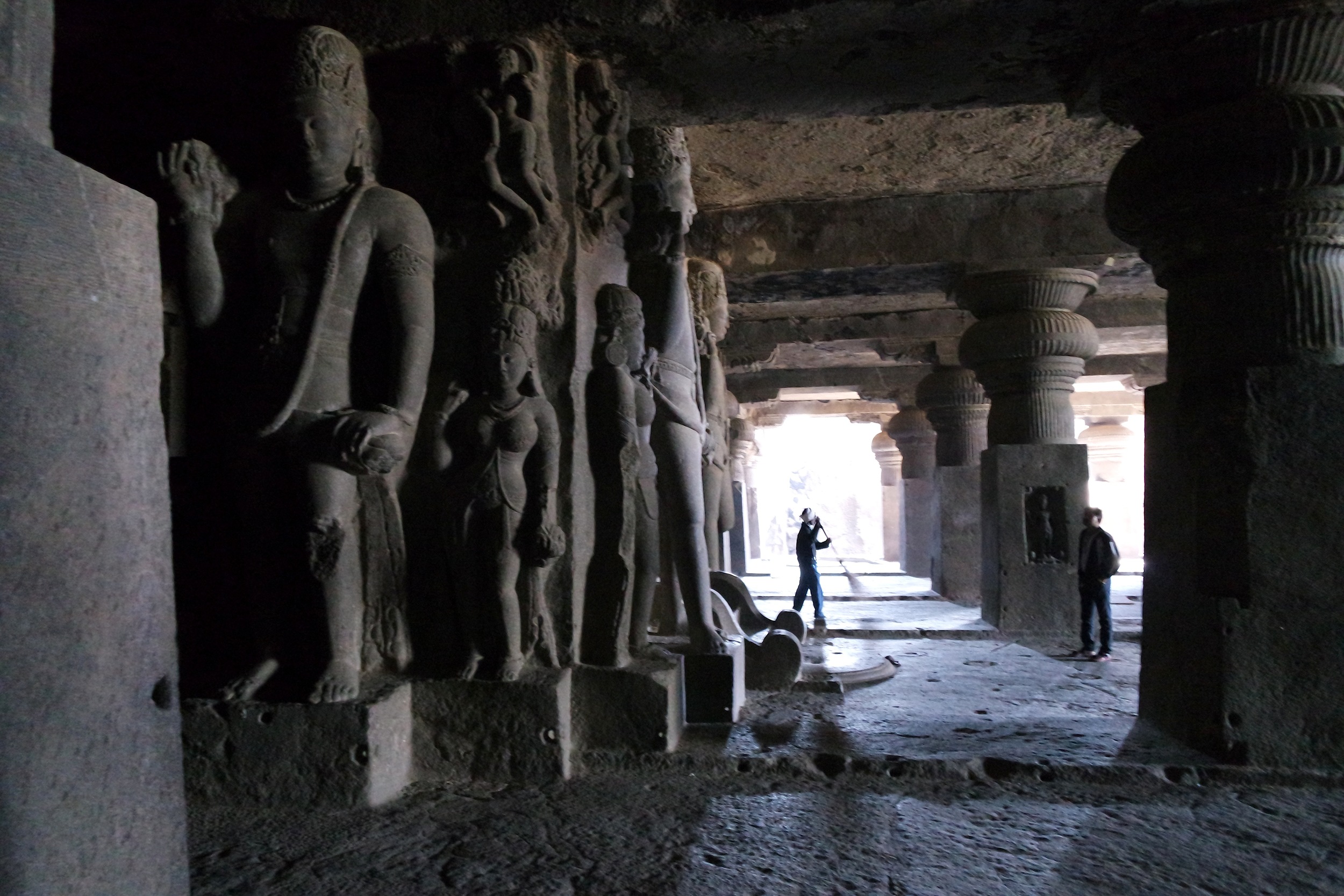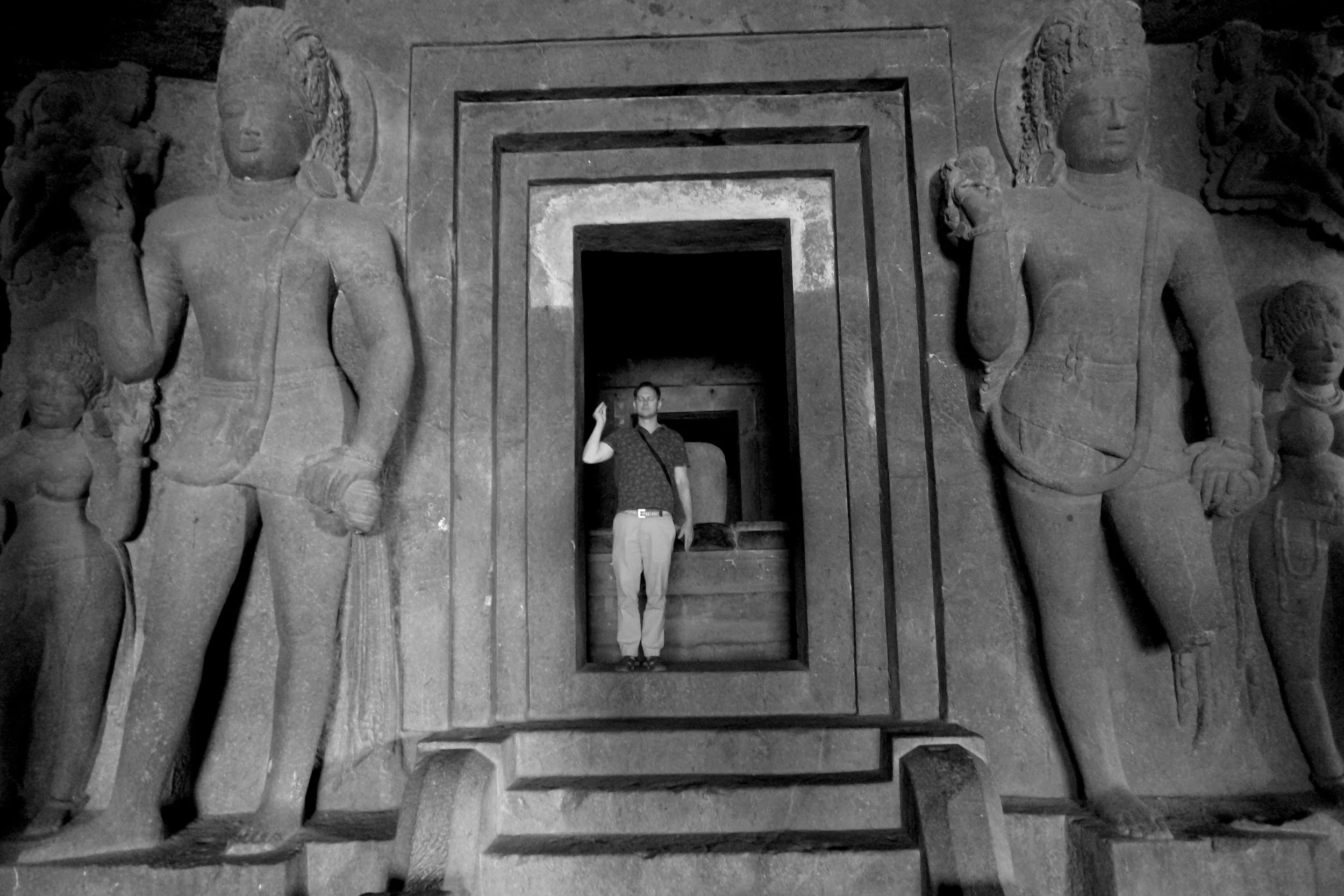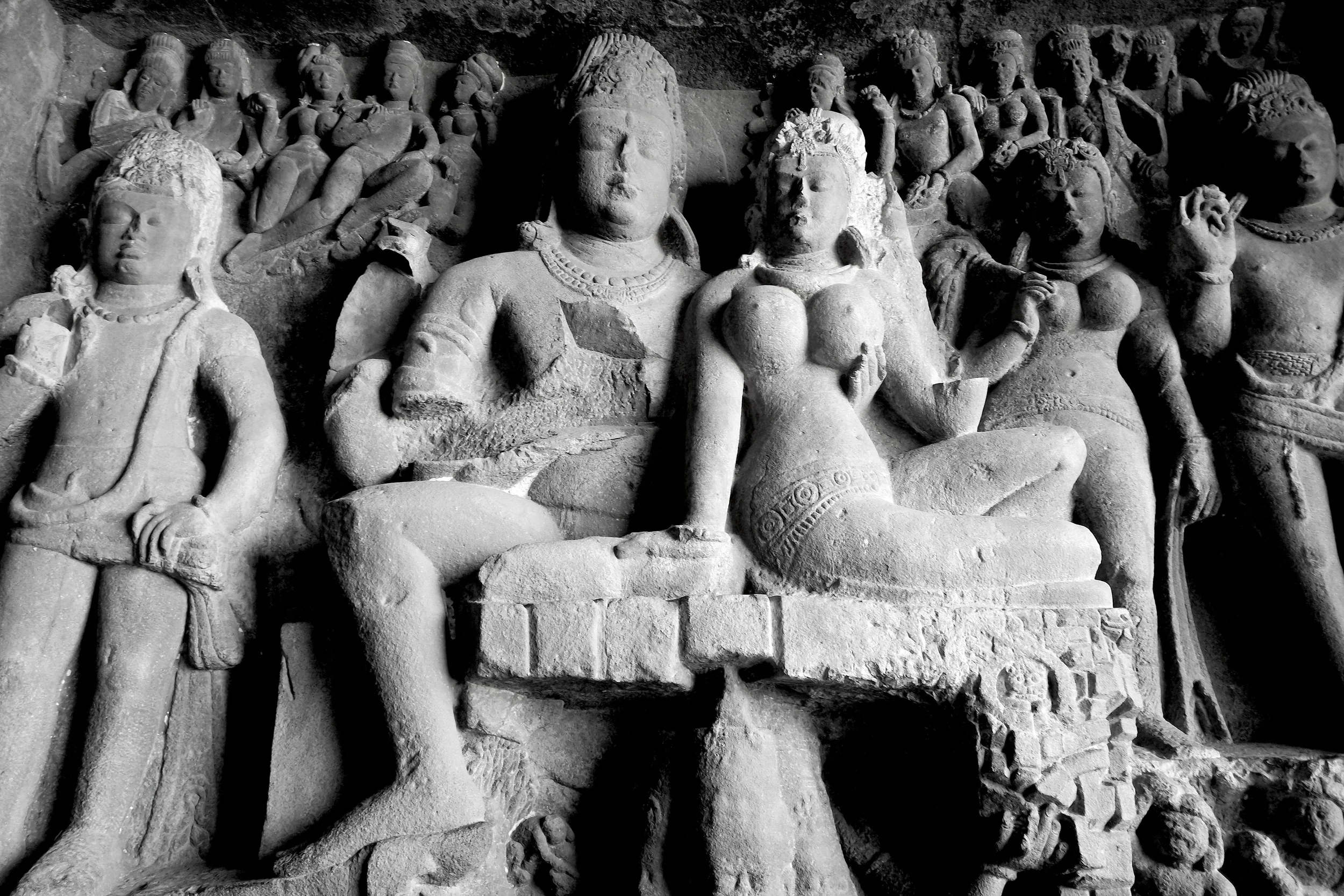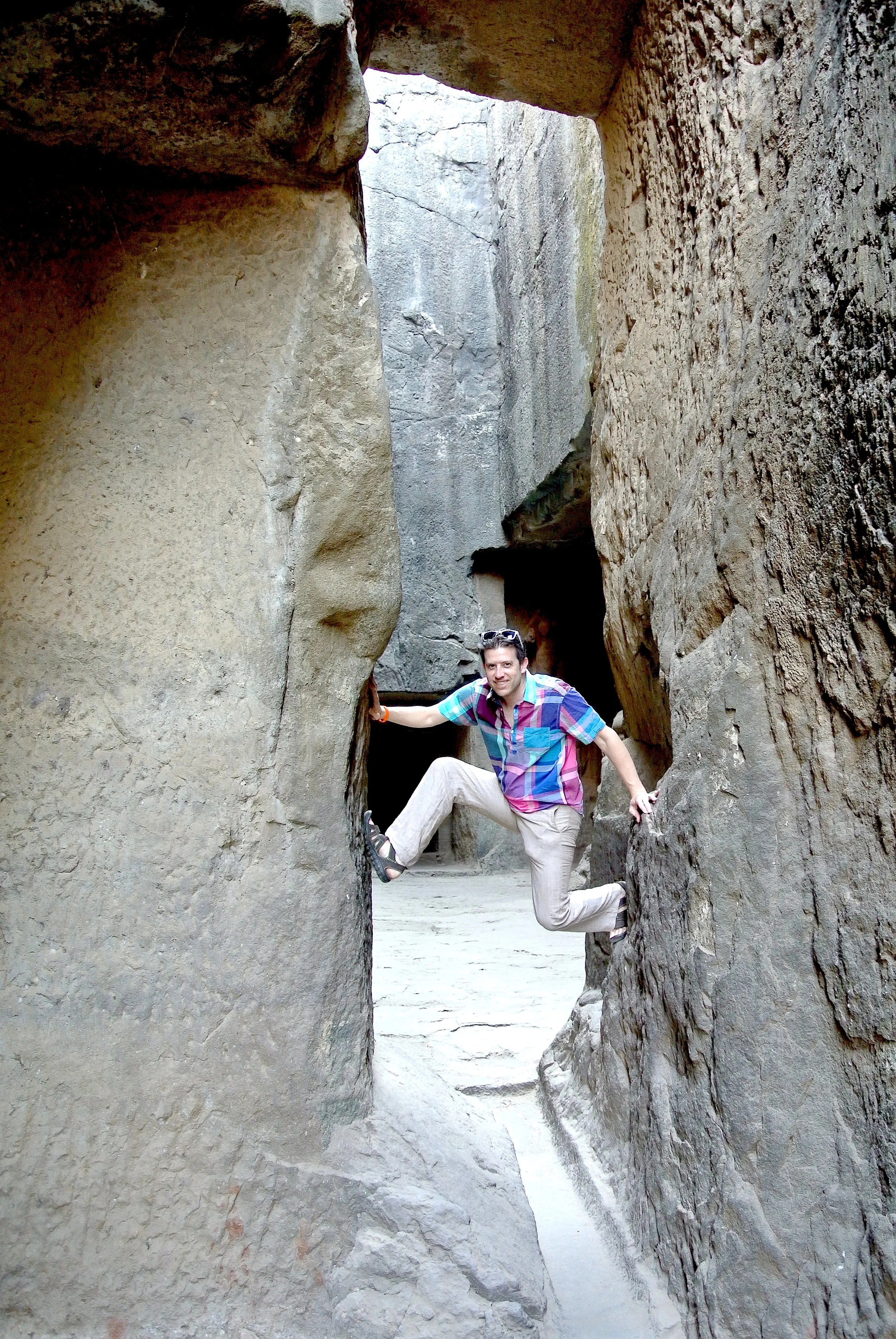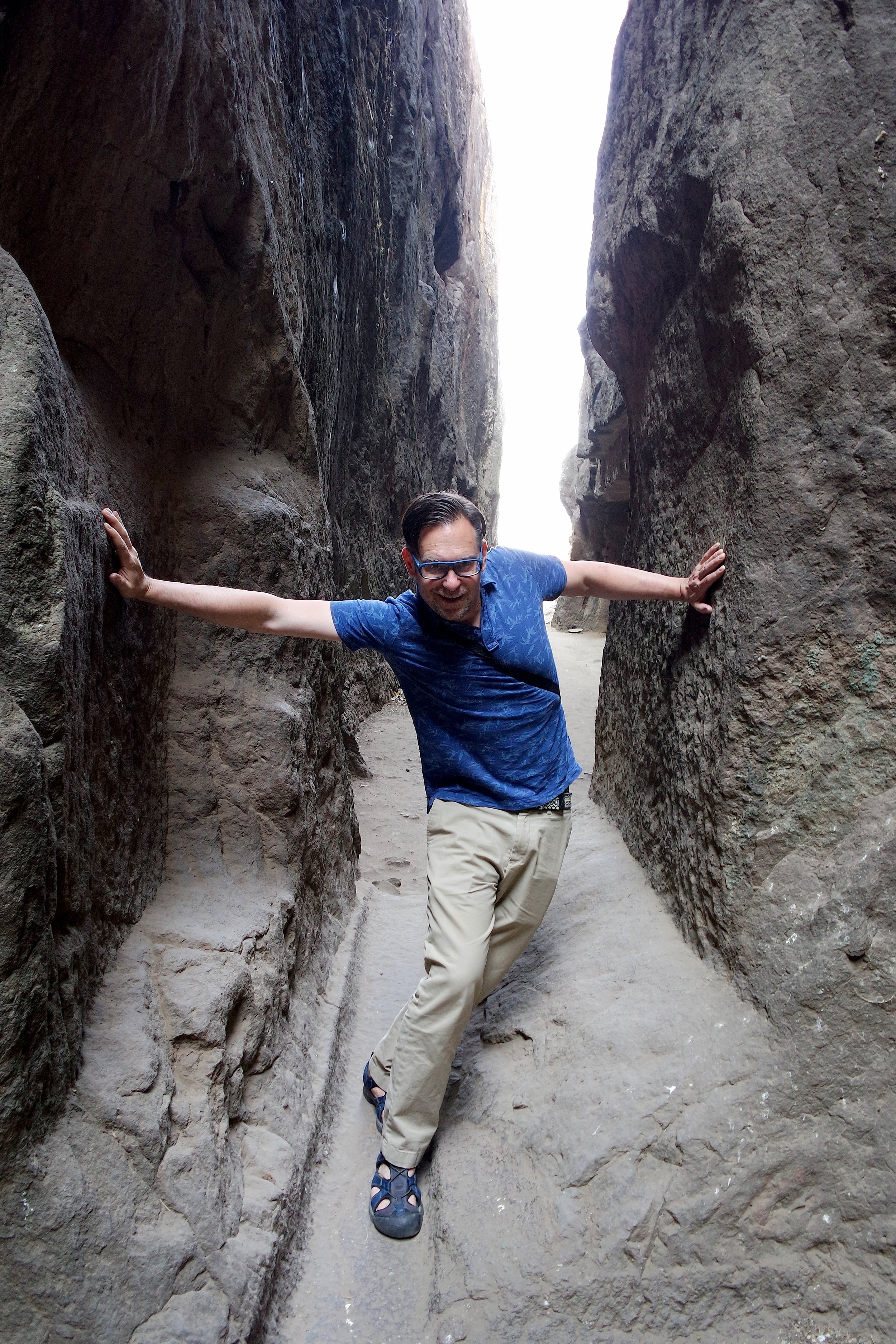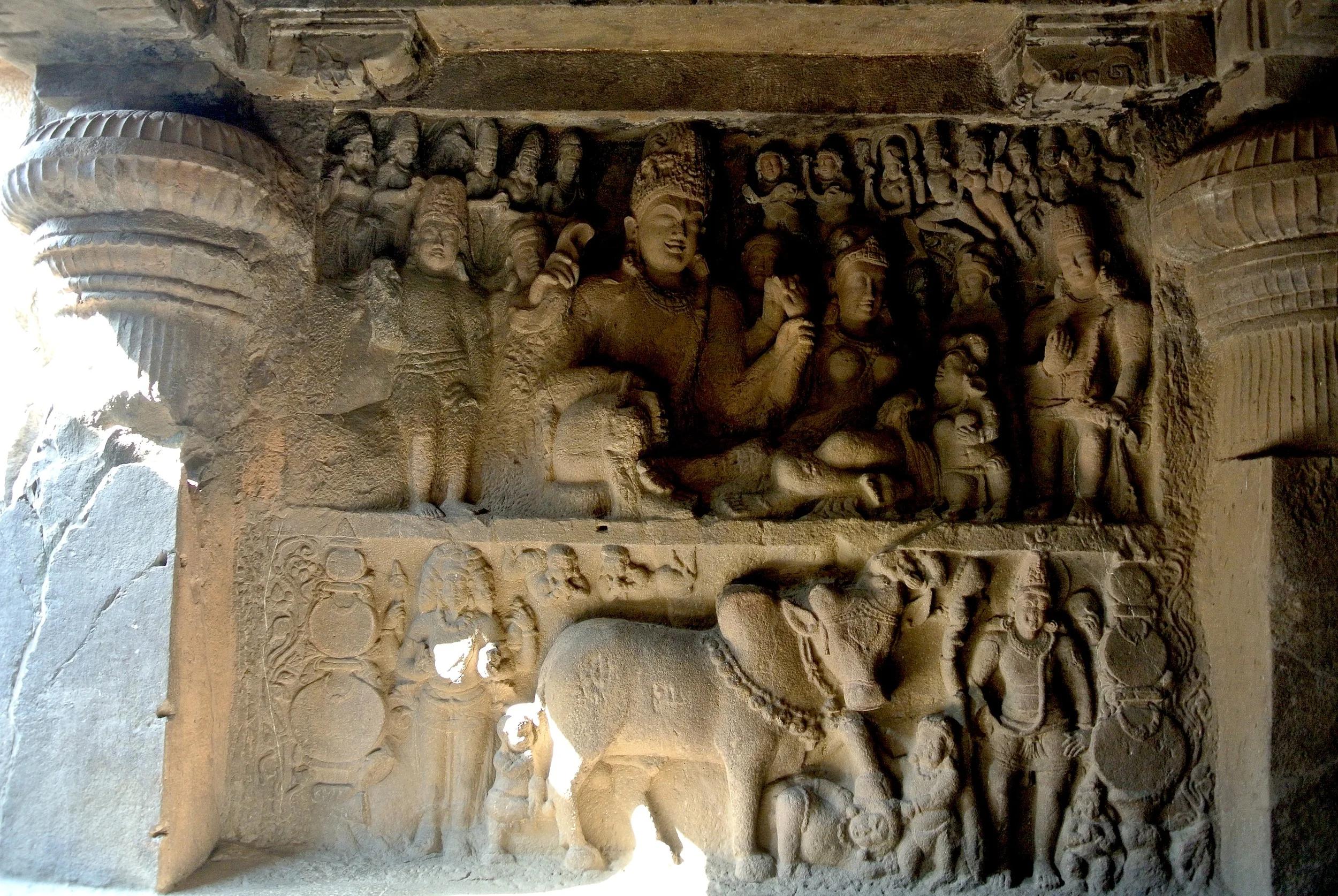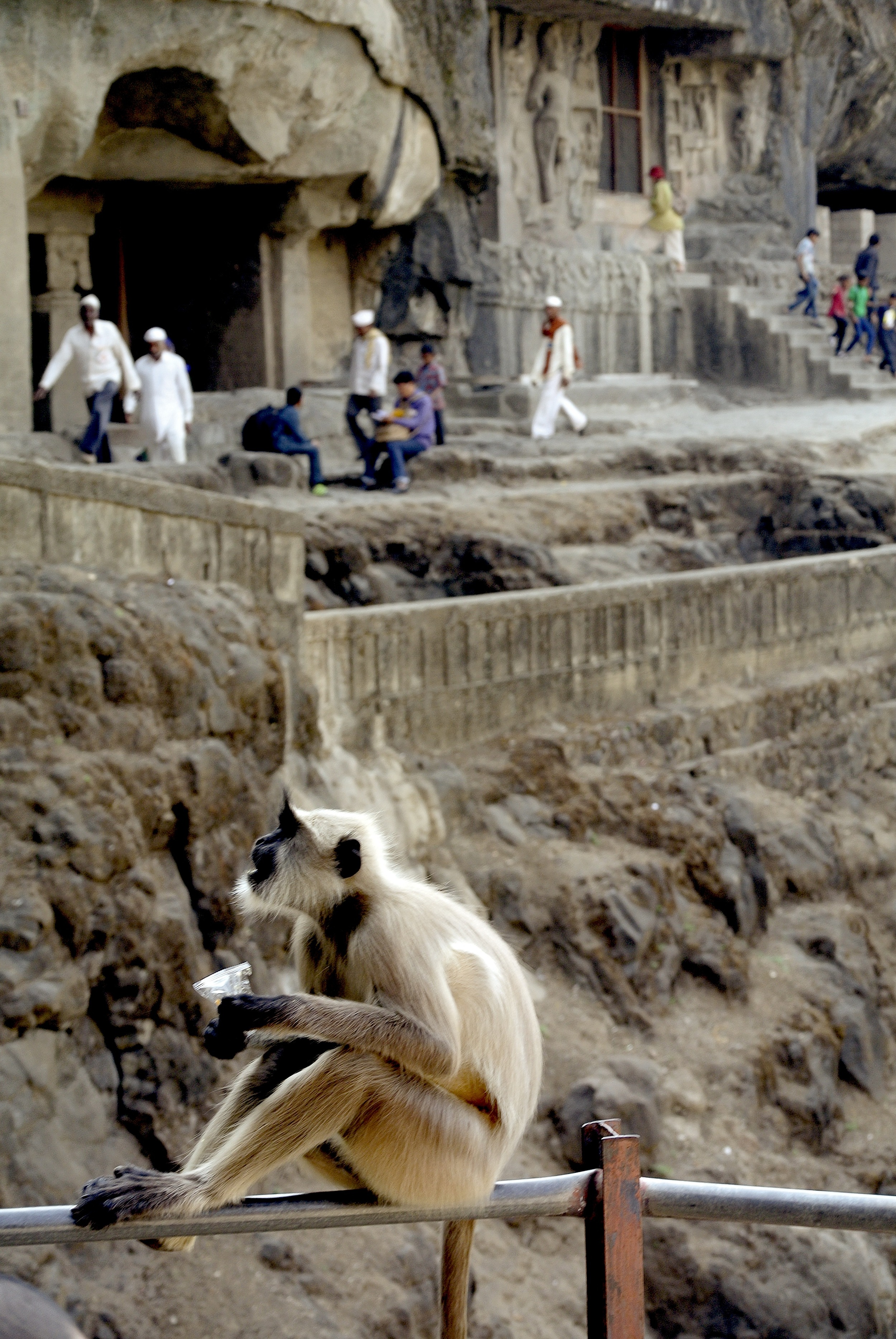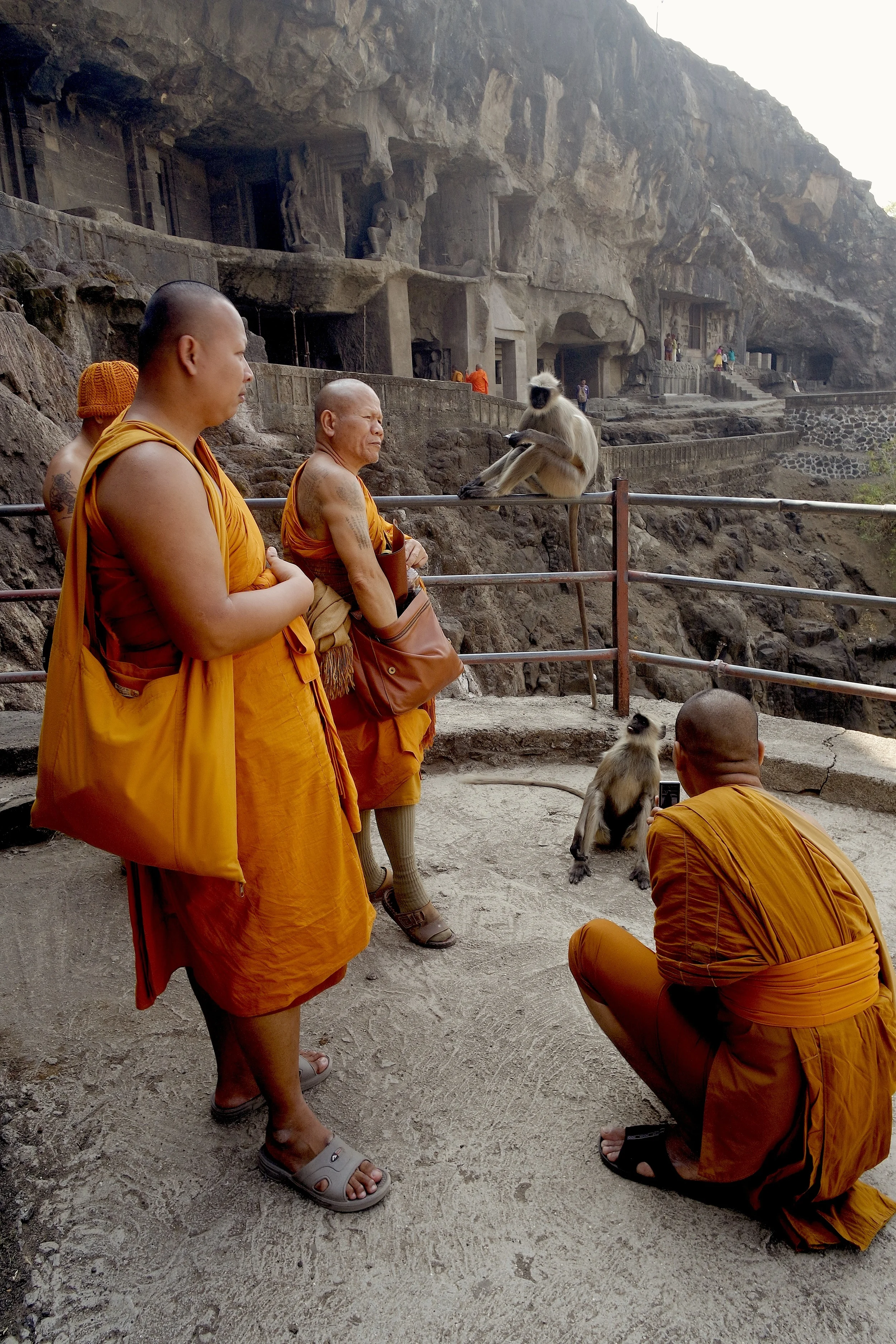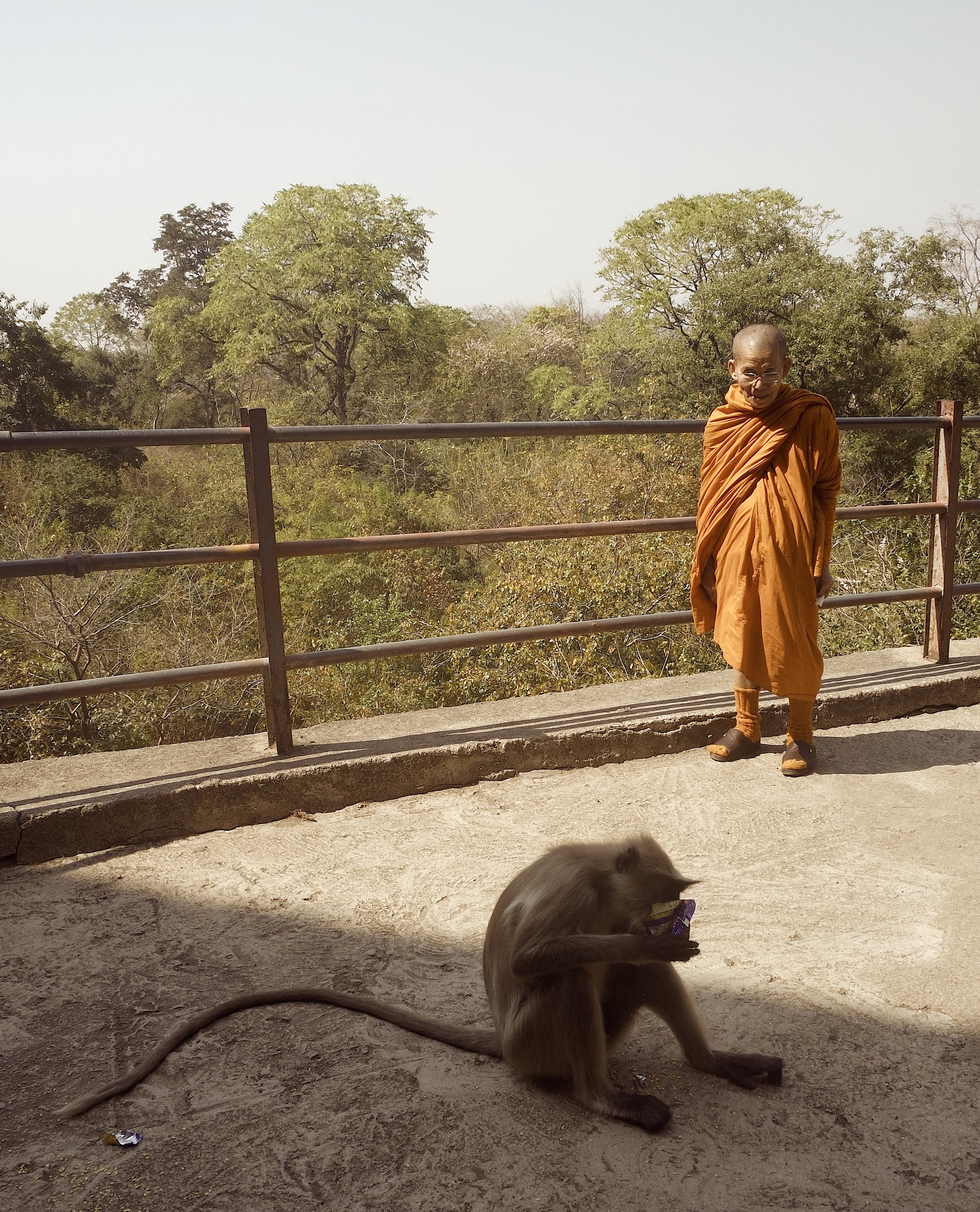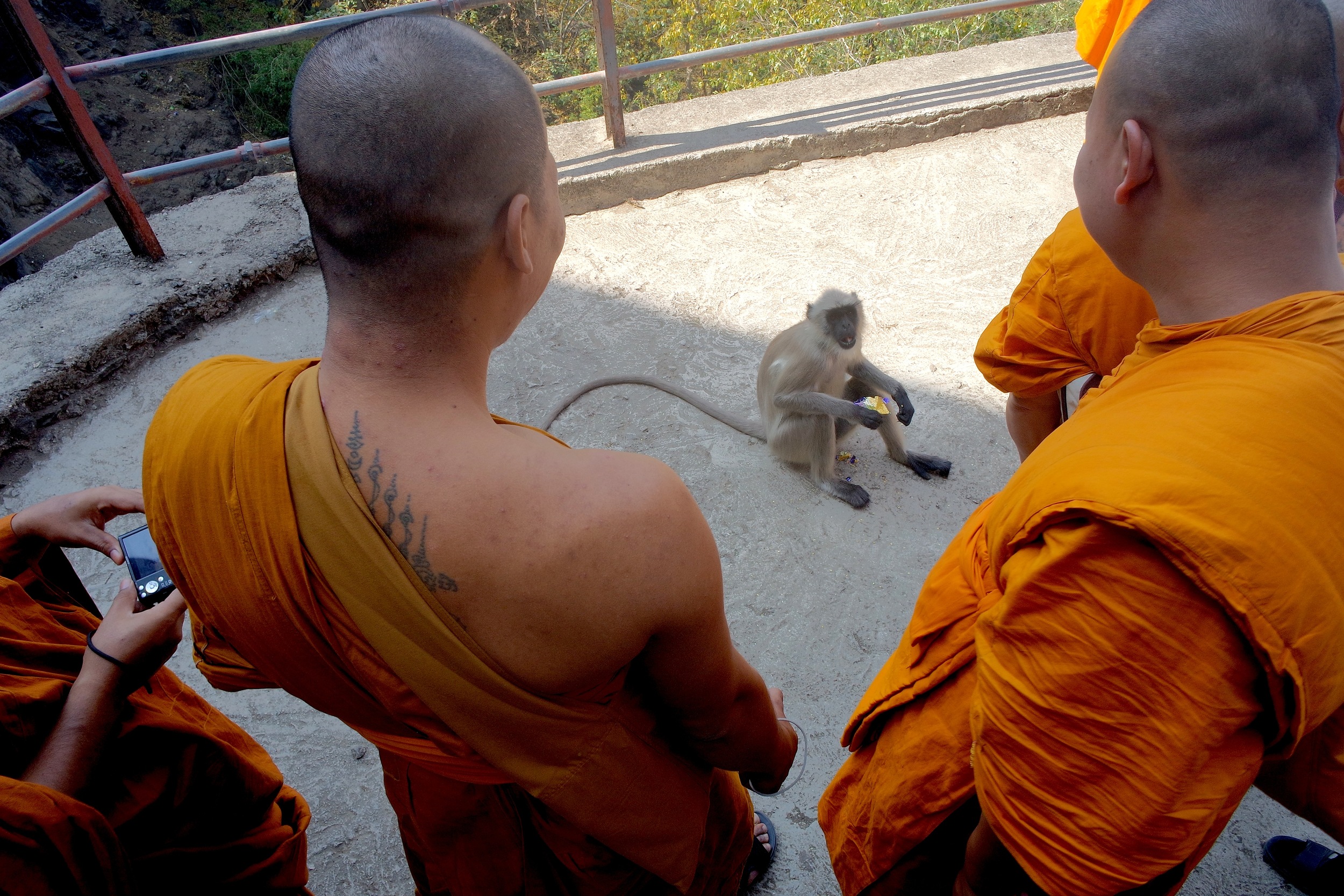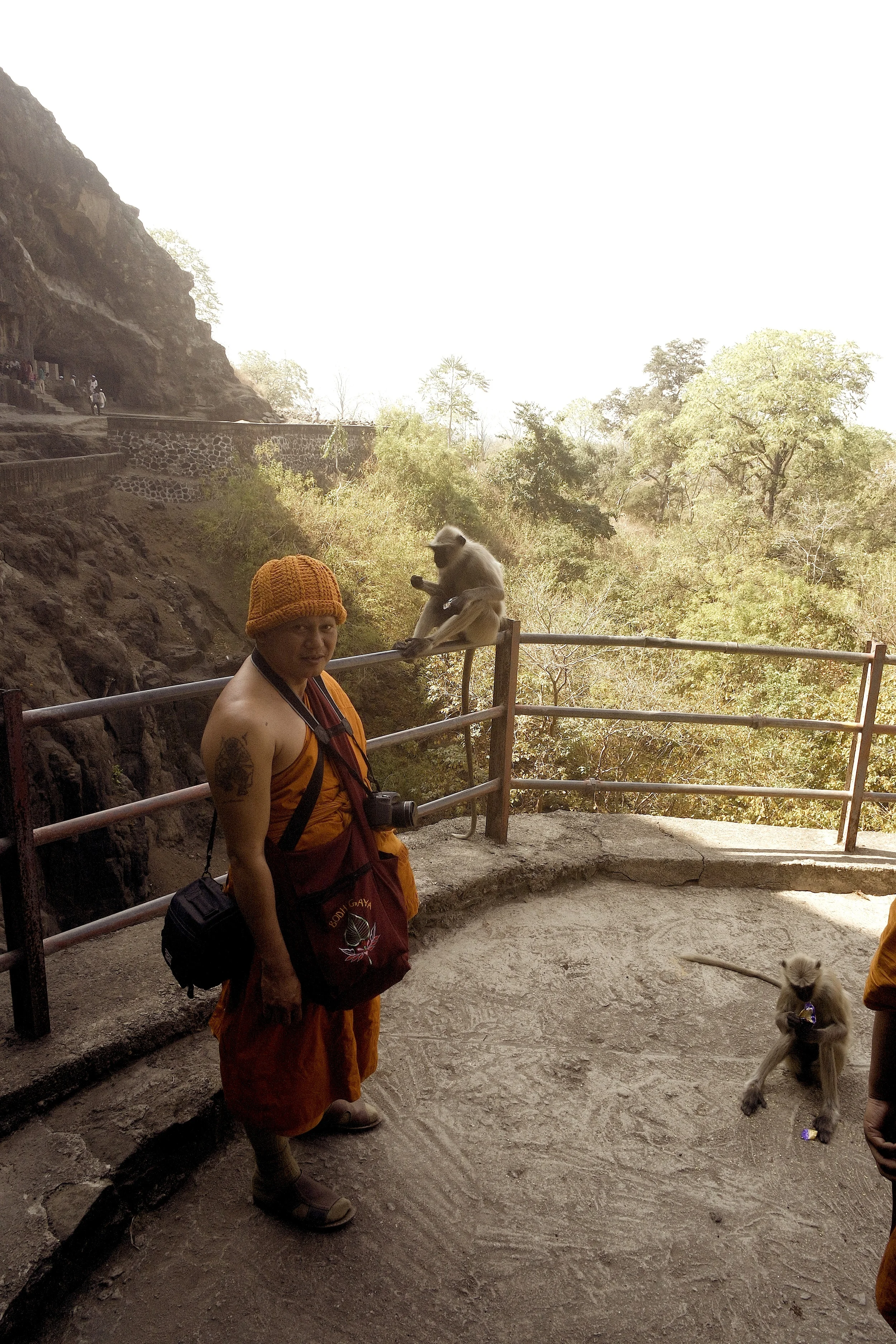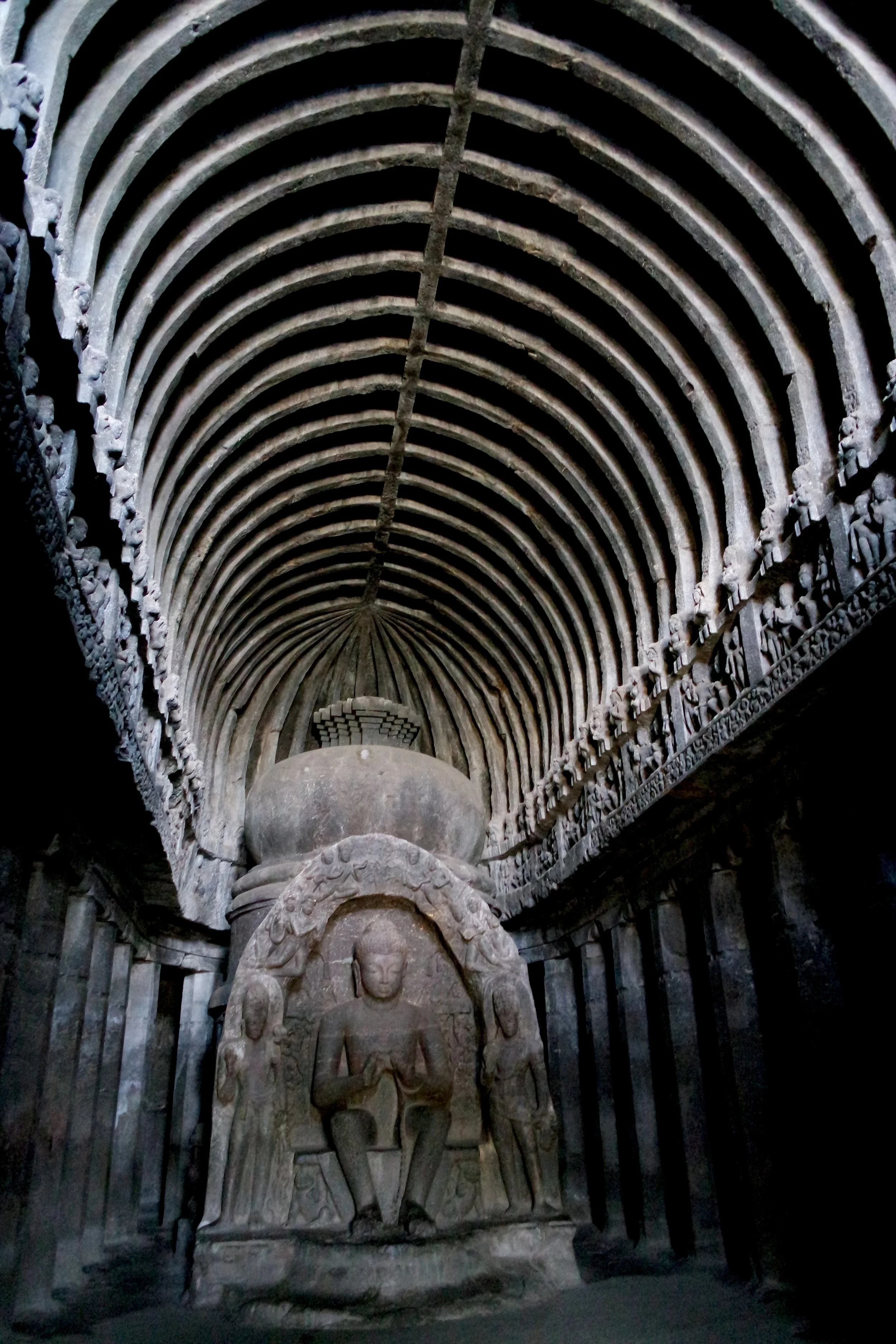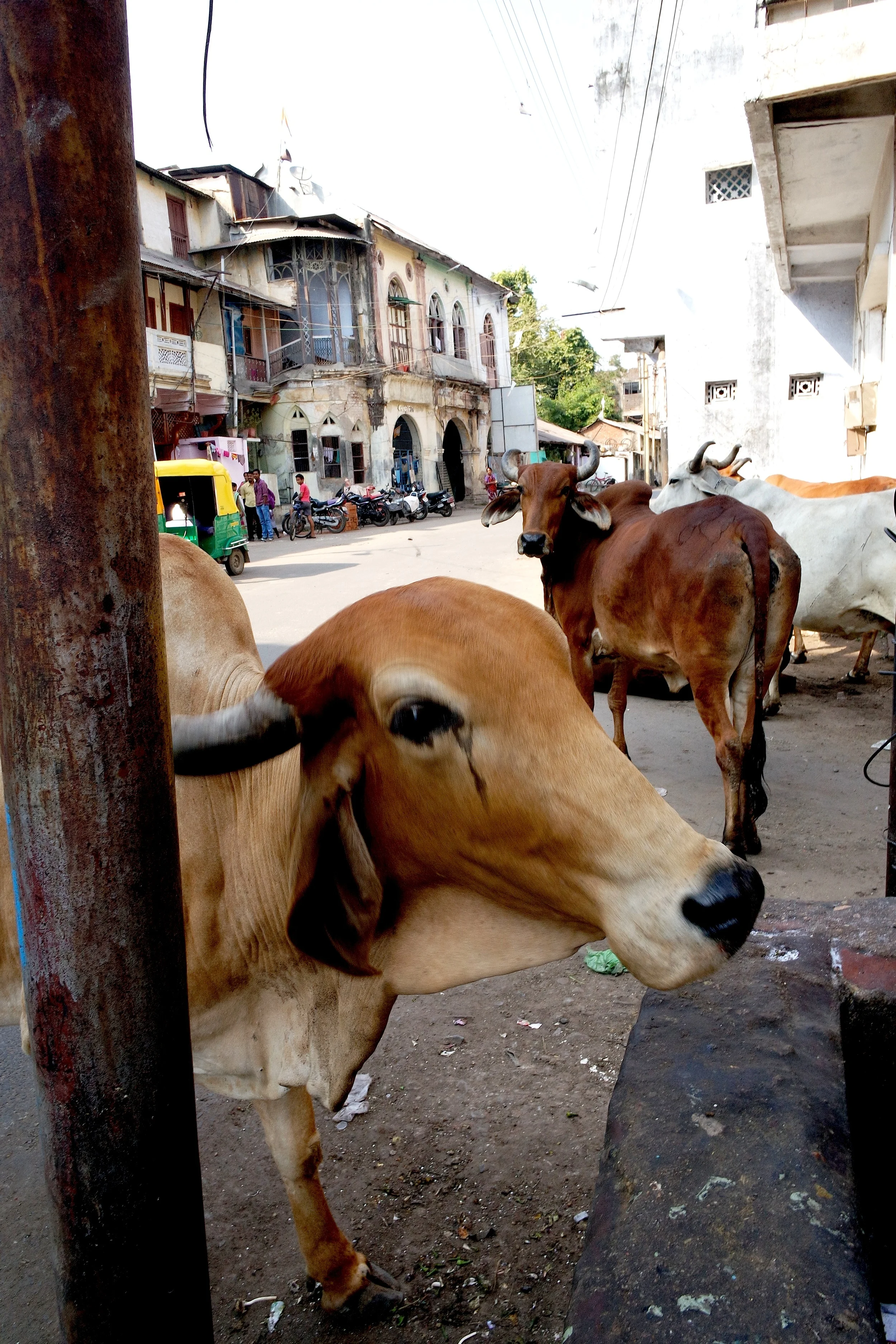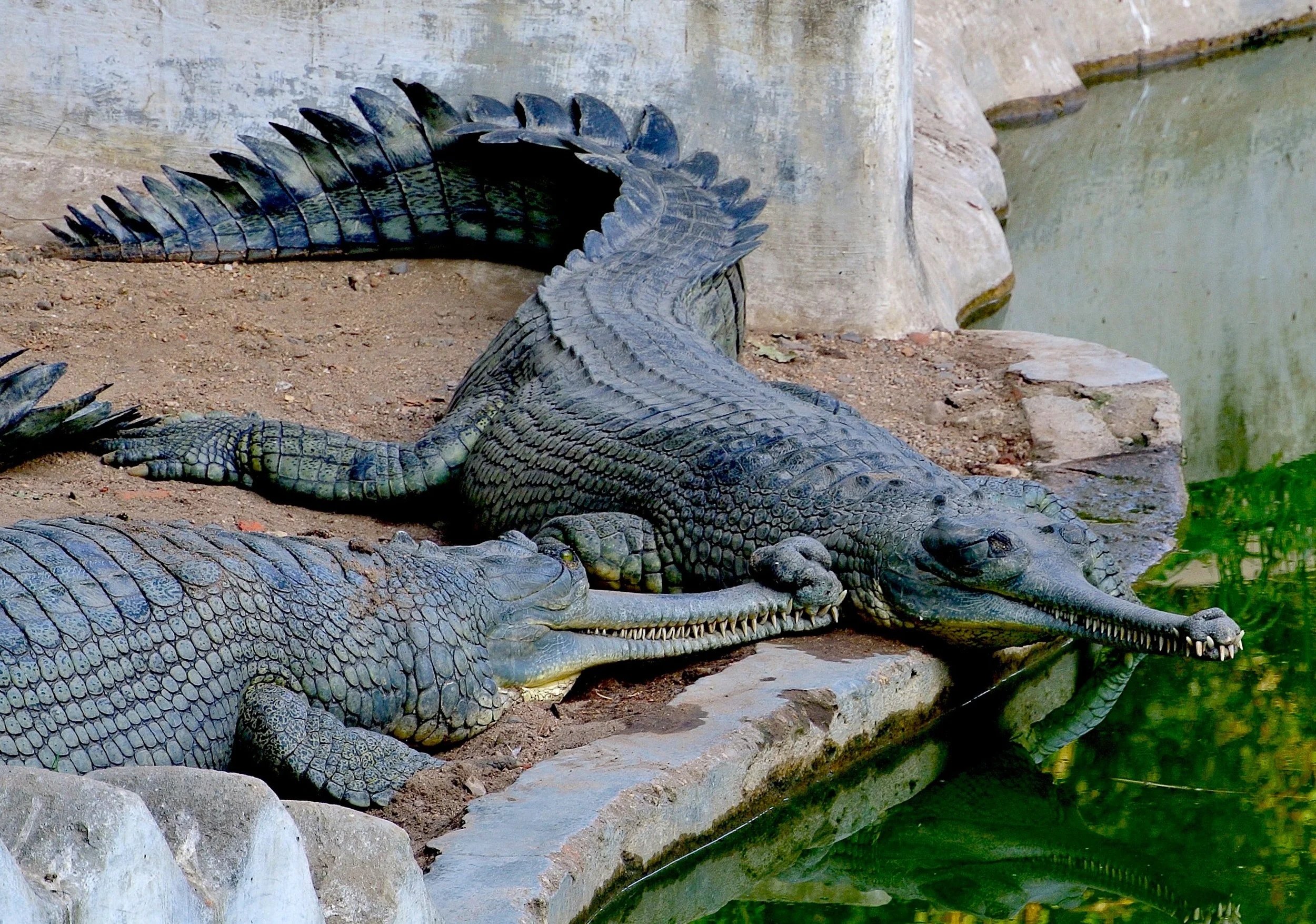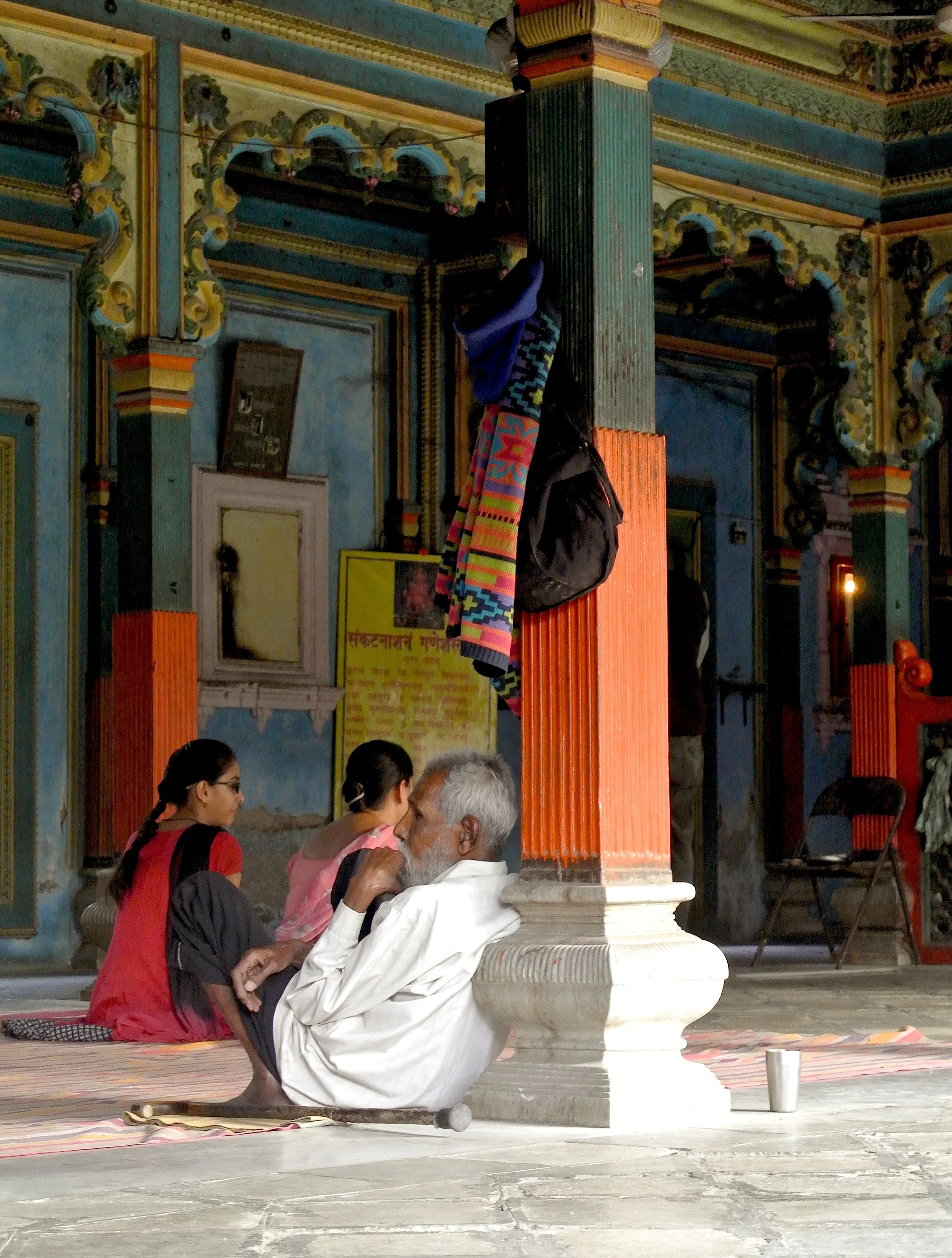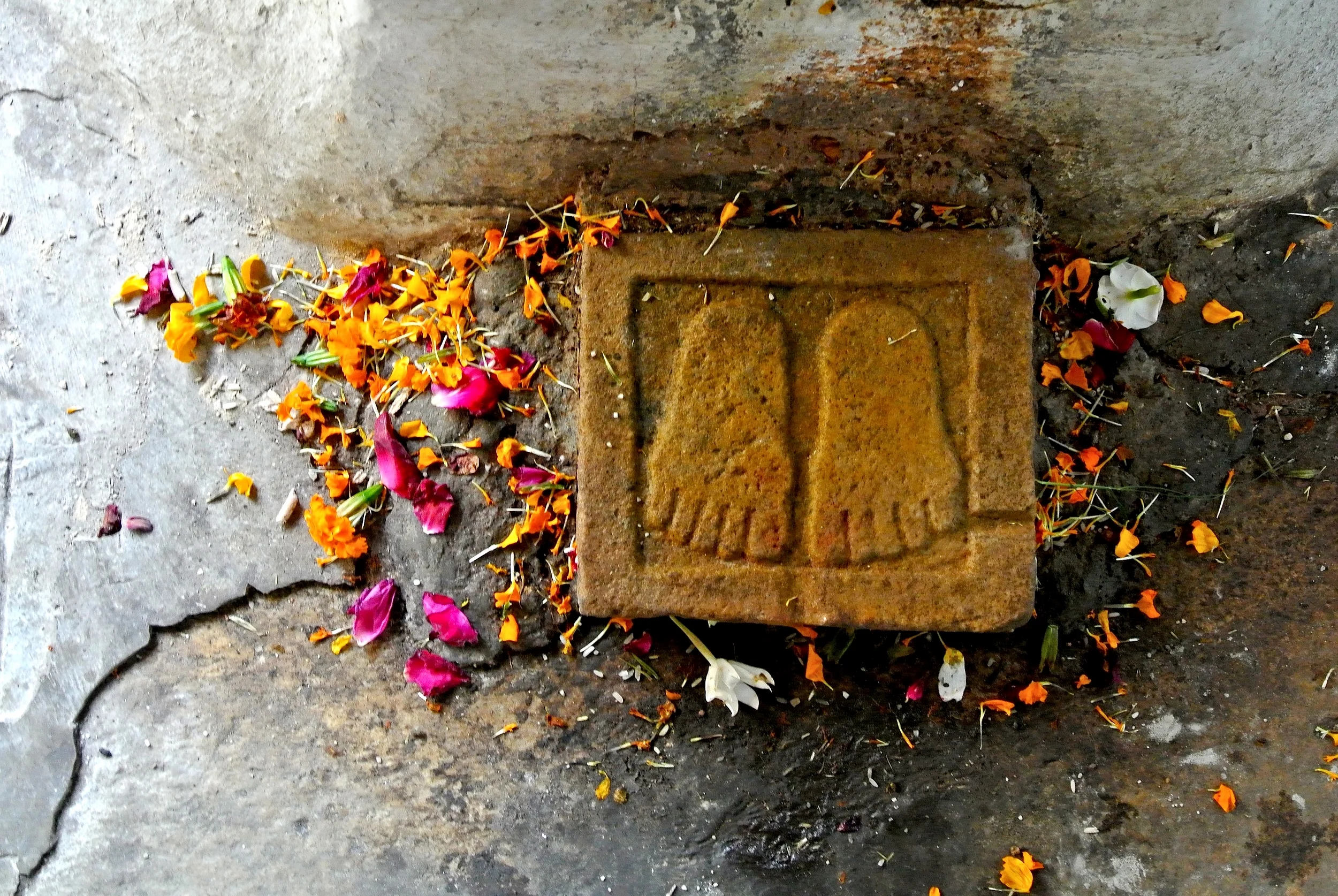Looking for things to do in Ubud? Wander among the demons — and attend a kecak dance — at Desa Pakraman Ubud.
The Pura Dalem lies on the outskirts of Ubud
NSFW: The temple is covered with depictions of bare-breasted demonic women
As we drove out of town our last evening on Bali, I glimpsed a temple atop a hill on the outskirts of Ubud. There was something that called to me, and I made a note to investigate it the next morning. So after we had packed up our bags and our driver Made (pronounced Mah-day) picked us up, I directed him to the temple.
Duke and I were delighted to discover that it was a pura dalem, or temple of death. These temples always have the craziest statues and carvings depicting Balinese demons out front, menacing visitors with bulging bug eyes, fangs, long tongues and breasts that sag down to their stomachs.
These dramatically sliced gates are common at Balinese temples
Motorbikes are ubiquitious on Bali
Many Hindu temples have balustrades that run the length of staircases in the shape of snakelike naga
“Snarling lions and hosts of demons line the entrance stairs. Duke and I couldn’t help smiling.
This is our Disneyland.”
Pura dalems are dedicated to Rangda, the Demon Queen. She is the personification of evil, often depicted with pendulous breastes, fangs and unkempt hair. We passed a statue of her holding a baby in her arms — her favorite snack.
Rangda, the Demon Queen, loves to snack on innocent babes
Many creatures in Balinese mythology — good and evil — have bulging bug eyes
Balinese temples are composed of numerous open-air shrines
This was pretty much the only statue at the Pura Dalem Ubud that wasn’t monstrous
Monkeys, skulls and babies, oh my!
The entrance to the pura dalem has creepy creatures everywhere you look
I’ve read that pura dalems are usually built at the lowest part of a village, as demons are associated with bhur, the underworld (some elements are consistent across religions). But this temple rises on a hill above Ubud. Maybe the Great Temple of Death in the Monkey Forest is the one situated at the lowest point.
Snarling lions and hosts of demons line the entrance stairs. Duke and I couldn't help smiling. This is our Disneyland.
Parts of the façade were being renovated when we visited
Pura dalems are associated with bhur, the underworld, where demons reside
It shouldn’t be surprising to learn that this is a temple of death
Ferocious beasts populate the entrance to the temple
Wally loves himself a lion
Downward-facing demon: a new yoga pose?
Sneaking Into the Temple of Death
We wandered around the temple complex, and I was surprised to see a large courtyard off to the left, for dancing. I wondered what kind of performances would take place at a temple of death.
After a bit of research, I learned that this temple hosts the Kecak Fire and Trance Dance, which sounds like an intense experience I’m bummed we didn’t see. I’d like to imagine the environment becomes charged with a mystical energy as the flames dance to the dissonance of the native music. Perhaps the statues themselves come to life to join the dance.
The music pavilion near the dance performance space
Balinese musical ensembles are called gamelans
Wood and bronze xylophone-like instruments are common on Bali
The instruments are intricately carved with creatures from Balinese mythology
At the back of the dance area is a pavilion filled with row after row of the bronze instruments, many resembling xylophones, that comprise a gamelan ensemble.
Which is Garuda and which is Duke?
Mischievous Wally likes sneaking into temples
The interior of the temple was gated off, but Duke and I skirted around it until we found a gate we could stick our hand through and unlock from the other side. We opened it as quietly as possible, trying not to capture the attention of the construction workers nearby. The gate let out painfully loud squeal, and Duke and I slipped in quickly.
Lichen covers Balinese temples, lending an ancient air to even the newer ones
Maybe this is where you sacrifice your babies to Rangda
The interior courtyard of the pura dalem was locked — but that didn’t stop us from finding a way in
Shrine towers in the most sacred space of the temple
These woven baskets contain offerings to the gods
Various shrines rise jaggedly skyward in the interior courtyard, bright orange brick and pale stone carved into monstrous creatures. The ground, like many temples on the island, is striped, alternating bands of stone and grass, a dichotomy I imagine symbolizes the balance of good and evil so prevalent in the Balinese religion.
Like many temples in Bali, the interior courtyard features rows of grass and stone
Could the alternating stripes on the temple floor symbolize good vs. evil?
A holy banyan tree grows off to one side, its roots dangling in clumps like Rangda’s matted dreadlocks.
Banyan trees, with their roots that grow from above, are amazing works of nature
Many offering tables are covered with black and white checkered cloths
The gnarled roots of banyans pair nicely with demonic depictions
When someone dies on Bali, they’re temporarily buried, and their spirit resides in the pura dalem, according to Murni’s in Bali. It’s not until a cremation ceremony has taken place that the person is free to be reincarnated.
Despite the demonic depictions scattered throughout the pura dalem, I wondered if death isn’t something to be afraid of, amongst a people who believe in reincarnation. –Wally
Many temple statues get adorned in sarongs
A bit of heavenly light shines upon one of the demons of death
Pura Dalem Ubud
Jalan Raya Ubud, No.23
Ubud, Kabupaten Gianyar
Bali 80571, Indonesia



